Earlier in the year, I ran a 22 day safari adventure through Uganda and Kenya; we spent 2 weeks touring many of Uganda’s south-western highlights, followed by a week in the central region of Kenya. Our main targets were the birds and primates of Uganda (which were extraordinary) and the highlands of Kenya, searching for the dry-country specials like Oryx, Gerenuk, Lesser Kudu, Grevy’s zebra, Reticulated Giraffe and, in Laikipia Wilderness, the now-famous black leopard known as Giza Mrembo.
Taking on a 3-week tour through East Africa took considerable planning and careful consideration of destinations and accommodation choices. In 2023, I ran a recce trip to Uganda in preparation for this tour and, with the help of Experience Uganda and Laikipia Wilderness, I felt well prepared when the start of the tour came round. Uganda’s safari scene is somewhat different from the classic game drive set-up that forms the core of the experience elsewhere in Africa. This is partly due to the nature of primate treks, which start at 08:00 and might finish by 10:00 or not until 14:00! The weather is also much more varied, especially in the highlands, where the middle part of the day can be steaming hot, or alternatively, cool and overcast. Therefore, as well as the planned safari experiences, I wanted to keep a number of extra activities in stock in case we had a spare afternoon or and unexpected overcast day where we could go birding or take a boat out on a lake for more photographic opportunities.
One of the guests who joined the tour wrote the following review on Trust Pilot: “Another fantastic photo trip with Edward! Uganda was such a diverse country, accommodations and food better than we were anticipating, the people friendly. Edward was once again an exceptional photographic tour leader, for each photographic experience, eg chimpanzee/gorilla trek, birding, savannah drive, he gave an overview of what to expect, tips on how to photograph potential subjects then any guidance required in the field. As the Uganda itinerary was not the standard morning/afternoon safari drives, if any scheduled activity completed early, Edward nearly always had optional activities to fill in any down time, nature walks, boat cruises etc, and always making himself available to assist us with our photography. Edward does his utmost to use the best light, landscape and whatever nature provides us. Above everything else he is always great company. We will definitely be travelling with Ed again.” Sharon, Australia.
Here follows an image-based record of the tour, as before. Thank you for reading and I hope you enjoy! If you are interested in travelling to Uganda, I am working on a tour for December 2026; there are two spaces available. Please get in touch for more info.
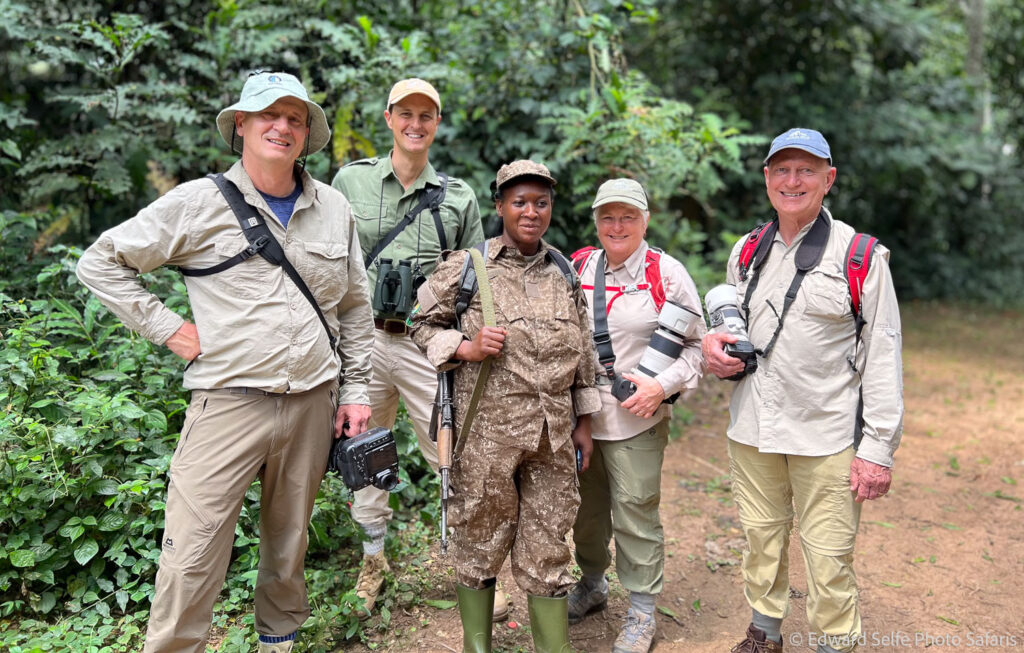
Our small group before our first chimp trek in Kibale Forest NP; the key to successful photographic safaris is a small group whose interests align and that was certainly the case with this trip. They were all dedicated to the trip, rising early, throwing themselves into every situation and working hard to get the best images possible. It was a great trip to lead and I particularly enjoyed the satisfaction that each participant gained from catching a shot, or perfecting a technique. Thanks to all of them.
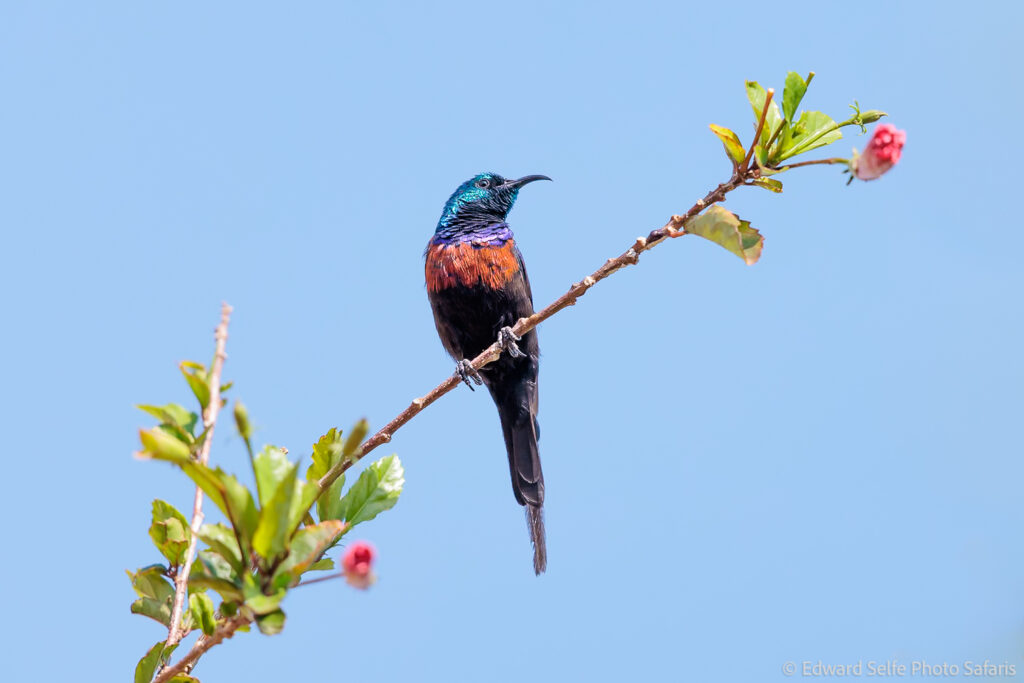
Our tour started in Entebbe where there are a surprising number of wildlife activities to keep visitors busy; we visited the Botanical Gardens, took a boat out on Lake Victoria and spent time in the guesthouse gardens which were full of tropical birds (many of which are very habituated). The nearby Mabamba swamps, which are a superb place to seek the unusual Shoebill stork, was left for later in the itinerary when we returned to Entebbe.
The first official day of the tour started early with a 05:00 departure from Entebbe to drive west across Uganda to Kibale Forest via Fort Portal. This is a chance to chat with our guide Kamya Lule about Uganda and its interesting history. At one point, Kamya mentioned that there was a small area of protected forest coming up, and it was possible to see chimps occasionally… Almost as he said this, we saw a large male chimp feeding on a fig tree overhanging the road! It was totally unexpected and a huge thrill to find chimps suddenly and without the usual build-up associated with a chimp trek.
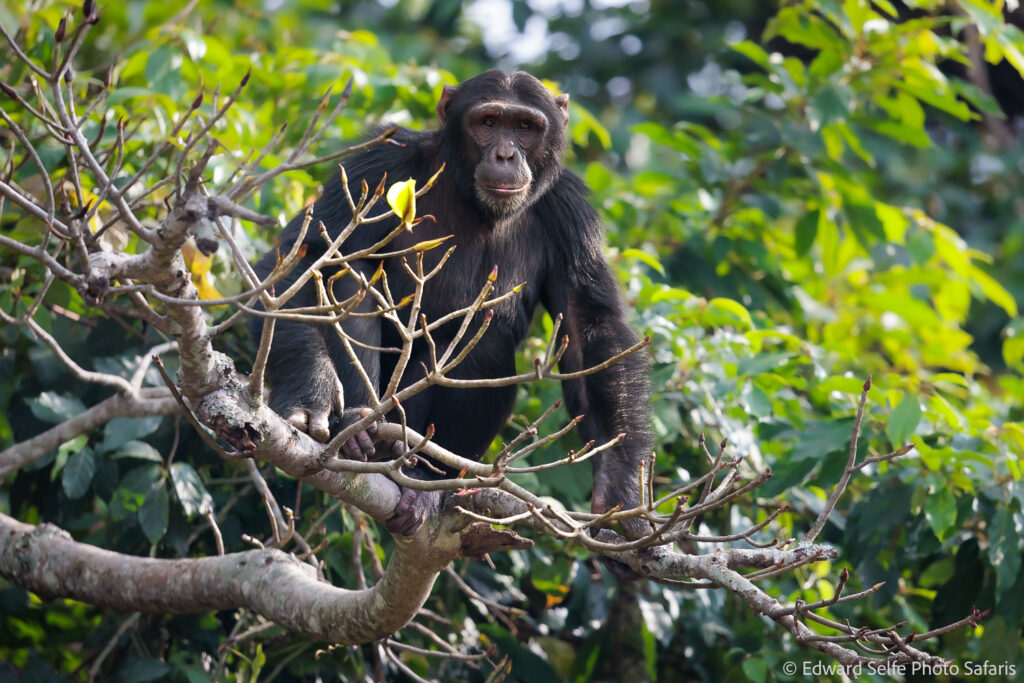
It was bizarre to be standing at the side of the road, with trucks thundering past, watching wild chimps across the tarmac. But these chimps have been living in a forest that is bisected by a main road their whole lives and they seemed vehicle savvy! At one point, a male crossed the road moving towards our vehicle. Cynically, I assumed that he was looking for food, but in fact he was posturing at the logo of a gorilla on the back of our vehicle. He investigated and then moved back across the road!
We spent 3 full days in Kibale Forest NP, staying at Turaco Tree Tops lodge on the edge of the park. The main focus of our visit to this area was the chimpanzees. There are around 1500 chimps in this large forest, some of which are under observation for wildlife documentaries, some for visitors, and some are observed minimally to reduce human impact. We visited two families, one during an afternoon trek, and one as part of a chimp habituation process. The weather had not been very favourable with heavy clouds and we experienced heavy rain while we searched for the chimps one afternoon! The guides say that the seasons are far less predictable than they used to be, meaning that protective rain gear should be taken on all treks. As well as the chimp treks, we also had two visits to the Bigodi Community Wetlands area which is a large area of intact habitat on the edge of the community. Local guides make a living showing visitors the birds and primates which can be found in the mixed habitats along the stream.
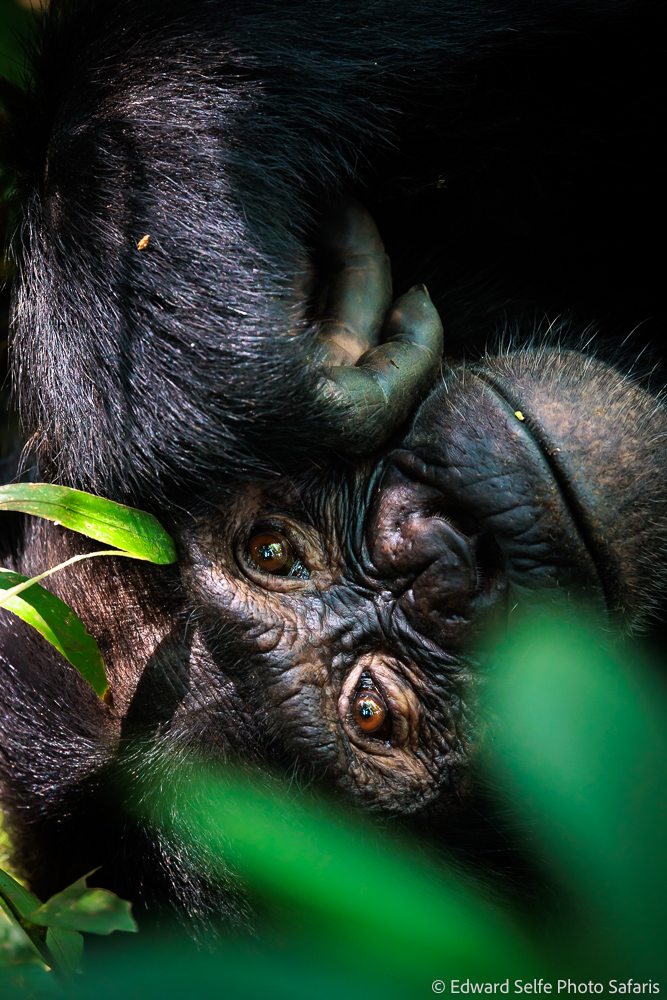
Clearly the chimps were the highlight of our time in Kibale, even if it provides tricky photography! The combination of low light, slow shutter speeds, negative exposure compensation making the viewfinder dark, face masks which cause the viewfinder to fog-up and occasional rain create a particularly difficult photographic challenge! But everyone left with excellent images, and there was much else to enjoy in the area, including the birds which were abundant, beautiful and available for photography, especially in and around the lodge grounds. The flowering trees attracted sunbirds of all varieties and a nearby tree provided a nest for a double-toothed barbet. On one of the community wildlife walks, we found a black mamba in a low tree, and there were regular sightings of red-tailed monkeys in the camp.
Following our time in Kibale forest, I took the group to a special lodge called Ndali in the crater lakes area. It split the journey from Kibale to our next destination, and allowed us not to leave very early in the morning, or arrive very late, on any of our days. On a wildlife safari, the early mornings and later afternoons are the most valuable times so I prefer to be settled somewhere at those times.
Ndali Lodge is a stunning spot on the top of a ridge between two lakes. It belonged to a British Family pre Idi Amin’s rule; they subsequently managed to return to it when the country settled down after Amin’s demise. They run it as a first-class small lodge which feels somewhat like staying in the owner’s home. As well as some beautiful views and amazing photo opportunities, it gave us a welcome break from the fast-moving pace of normal photo safaris.
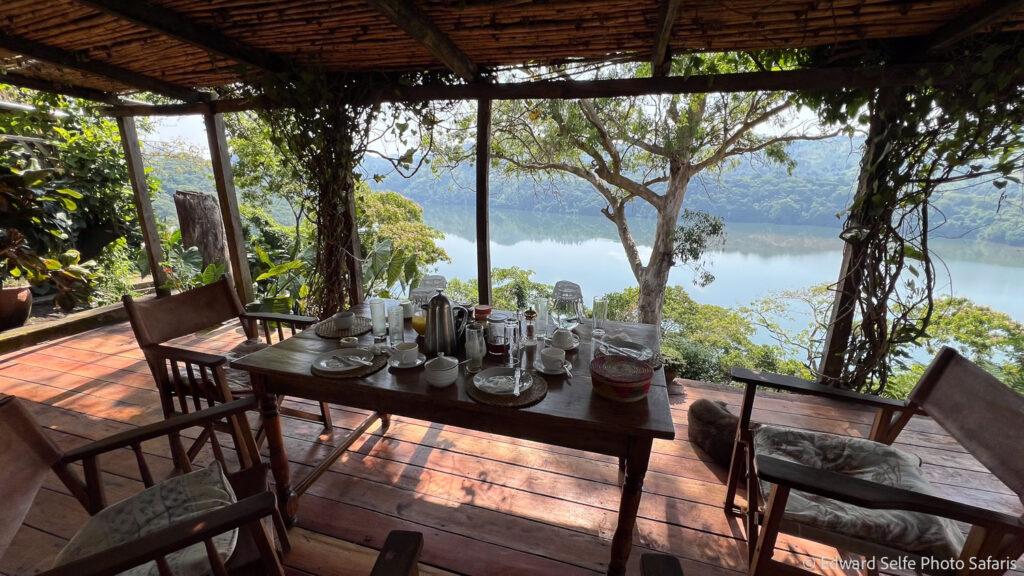
The birds around the camp were very relaxed, allowing us to get close to specials such as Great Blue Turaco that we had missed in Kibale. The views over the lake, which features on the Ugandan currency, are the constant backdrop to life at Ndali.
Our next destination proved to be, unexpectedly, one of the best excursions of the trip. We had booked a 2 hour boat safari on the Kazinga Channel, a natural river that joins Lakes Edward and George, and is host to an incredible quantity of life. I had visited this spot a year before, but 2 weeks earlier, and it seems that the later dates, and drier year, made a difference. Almost as we left the port, we spotted hundreds of buffalo resting on the sand on the far bank; there were thousands of Pied Kingfishers nesting in the banks of the channel; around 1,500 African Skimmers were settled on the dry sand at the edge of the water – as we approached, they took off as one before returning to land again; there were also aerial feeders like swifts, swallows and saw-wings, as well as elephants, egrets and endless hippos. Our first 2 hours flew past…..so we decided to do it again! We chartered a boat and set off at 4pm to enjoy the late evening light until 6pm! The low angle of the boat, as well as the ability to drift silently towards subjects, is a great combination. An outstanding afternoon.
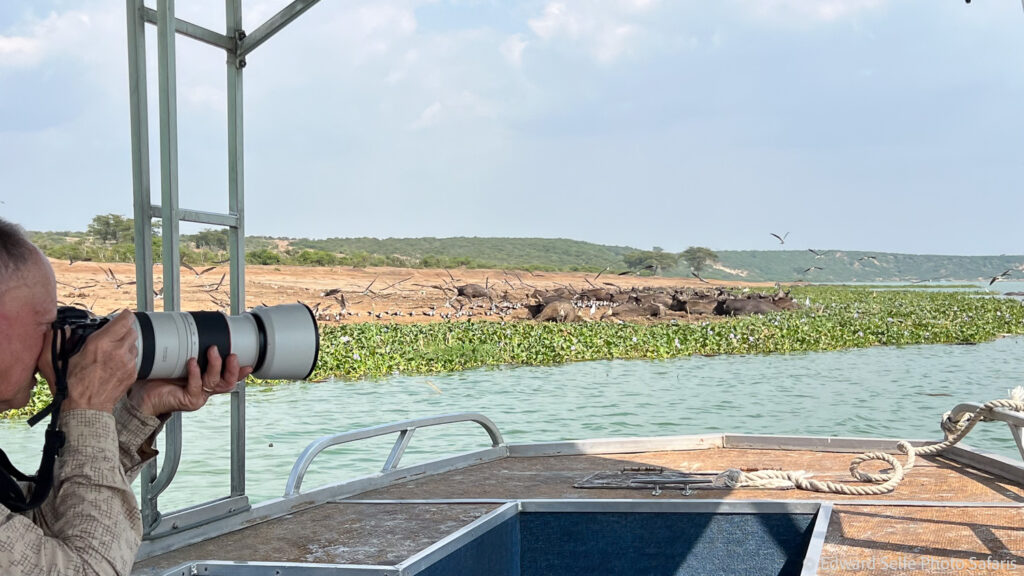
The early part of the afternoon gave us a chance to learn where the wildlife could be found and hone our skills so that, by the time the light improved, we were ready to target the best sightings.
We were not planning to spend time in the northern part of Queen Elizabeth National, with the exception of Kyambura Gorge, a beautiful deep gorge cut by a river which joins the Kazinga Channel. We were passing this area on our way to Ishasha Wilderness camp and this gave us a chance for a beautiful walk and the possibility of seeing chimps again (our fourth encounter).
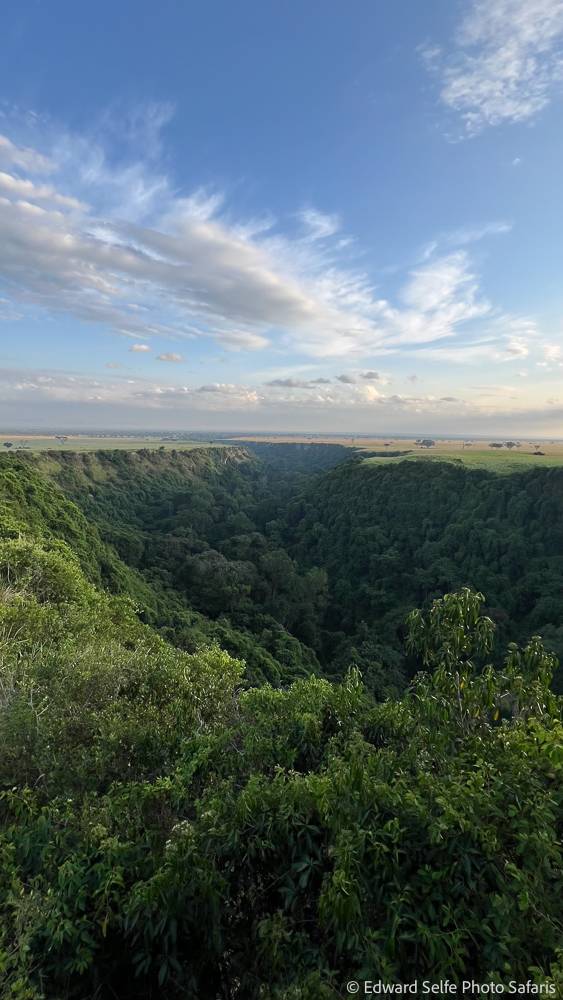
It turned out very well, with the chimp viewing better than expected (this troop can sometimes move across the river and get to an area where they are inaccessible) and it’s a lesser known destination, so far fewer people visit than the larger trekking areas in Kibale.
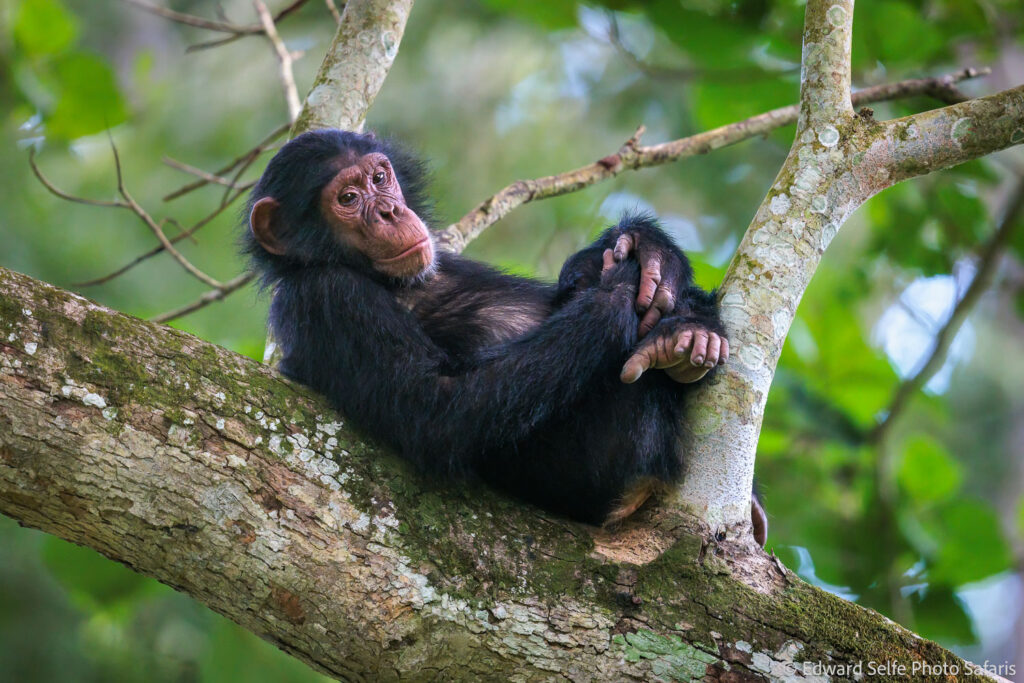
It was a 3.5 hour drive to Ishasha Wilderness Camp from Kyambura Gorge, taking us through the central sector of Queen Elizabeth National Park. It’s mostly dry and forested in this area, so we took it as a chance to push on while the group got some sleep in the back! It also meant that we would have time to do a full afternoon safari at Ishasha on arrival.
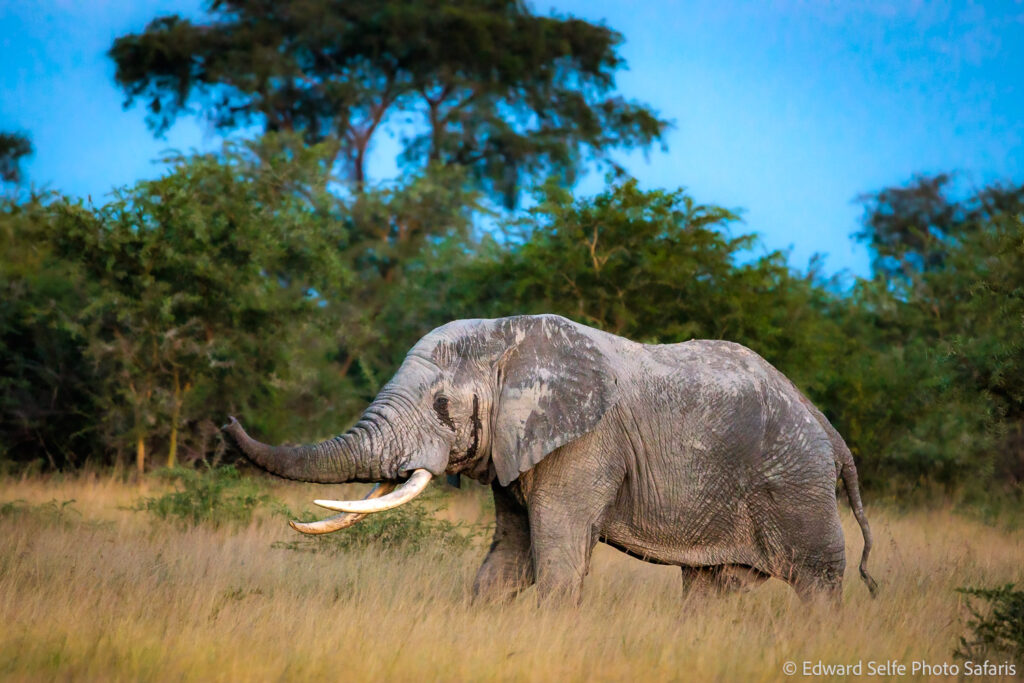
The Ishasha sector of the Queen Elizabeth National Park is quite different from the rest of the park; it’s largely grassland interspersed with acacia and fig trees. There’s a good population of Ugandan kob, elephants, lions and wonderful birds. We had a brilliant 2 days in this park, including spending time with this massive bull elephant. We also saw an even larger bull with fantastic tusks on our last morning, but he was walking away from us and never turned back. In this park, there are also a number of elephants which show characteristics of both savannah and forest elephant species. In the gallery below, there is a bull with a very rounded face, downward pointing tusks — which reveal a gap between the trunk and tusks — and small ears. He is a classic blend of the two species. The area is also well-known for its tree-climbing lions; we spent the late morning with two lionesses who had climbed a large fig tree. When we returned in the afternoon, there was no one else around and we spent the late evening light entirely alone with them.
Air travel always takes a long time in Africa, so we opted to drive from Ishasha, round the eastern side of Bwindi Impenetrable NP, to Mutanda Lake. This stunning crater lake would be our home for the next 4 nights while we explore Bwindi, Mgahinga and the shores of the lake. On route, we passed through some of Bwindi, and along the edge of most of it; the impact of protecting the forest was clear in many places with farmland reaching to the very edge of the National Park. The income stream from visitors travelling to see the mountain gorillas is sufficient revenue to keep the forest protected.
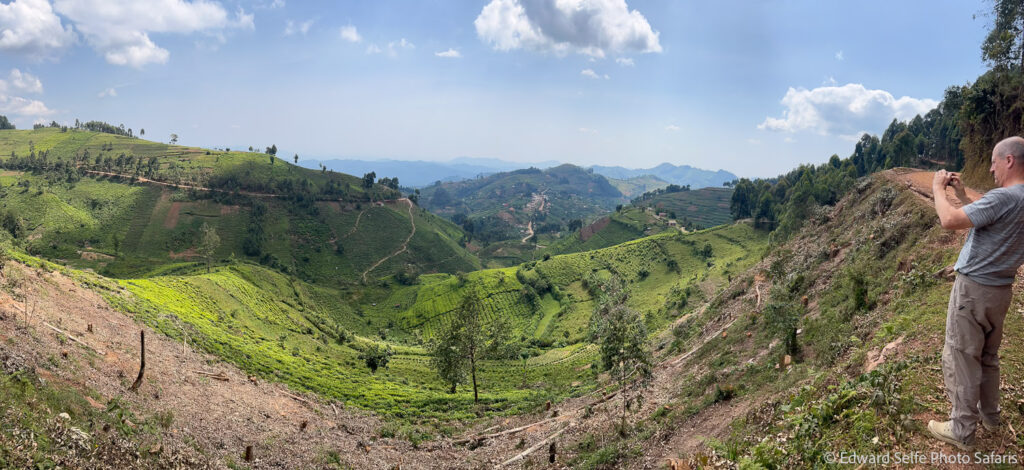
The views from the top of the forest road were wonderful, but it was clear to see the line of development and farming right up to the edge of the treeline.
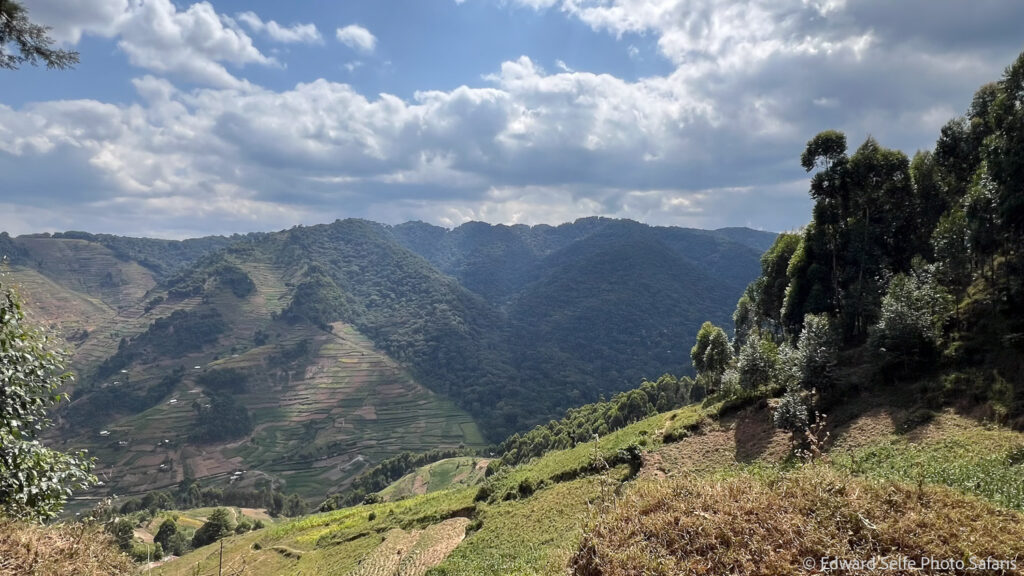
Uganda is a hugely picturesque country but, perhaps more than any other time, our tired eyes were thrilled to see this stunning view at the end of our 9 hour road journey from Ishasha to the lake. Mutanda Lake Resort is half-way between Bwindi forest on the northern side, and Mt Gahinga (and the Rwanda border) on the southern side. That made it well placed for accessing both areas early in the morning. Crucially it was also a beautiful location in its own right, with a stunning lake, boating activities and nice grounds to walk around and photograph birds and flowers.
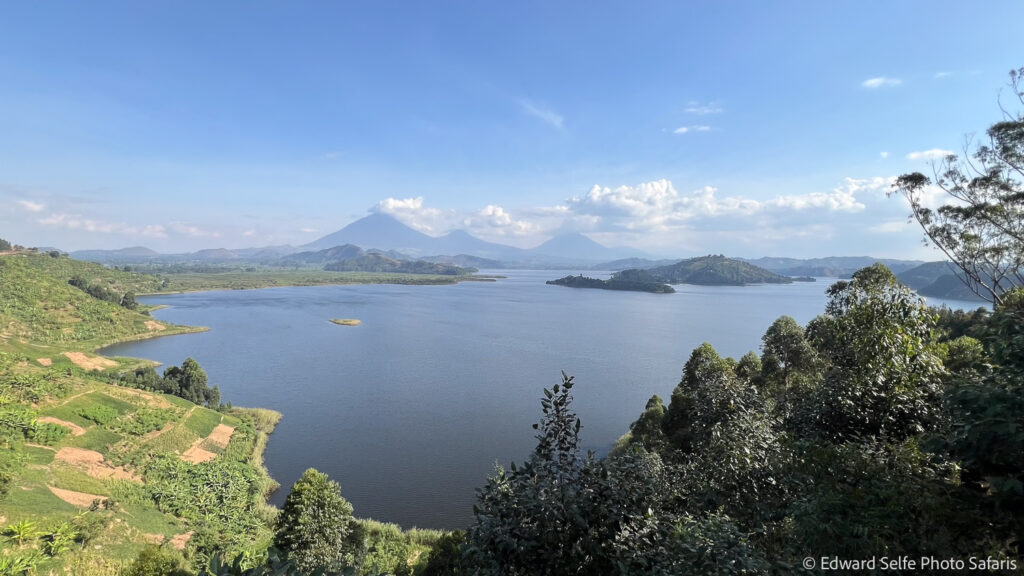
I guess if there was any part of this itinerary which was the stand-out draw-card of this trip, it was our planned visit to the far SW corner of Uganda where the country’s population of mountain gorillas reside. We had booked two gorilla treks, giving us 2 hours of exposure to these mega-primates, 2 hours of photography….and a second chance if the weather or the photographic conditions proved not to be in our favour!
Gorilla treks can take 2-3 hours….or they can take 4-5 or even 6 hours, depending on the location of the apes, and therefore how long it takes to get to them. Our first trek was set for Mt Gahinga, one of 5 volcanoes which form the border with Rwanda. The gorilla troop in this area is well known for having 3 silverbacks — families typically have 1 — and for regularly being in accessible and photographer-friendly locations.
Well, we parked our vehicle at the park HQ at 1850m elevation. After our briefing, we started to climb and reached 2400m elevation before the trackers found signs that the family had moved considerably in the morning and had crossed a gorge to another part of the mountain. We returned to the HQ and started to climb on the other side of the gorge. By the time we found the family, it was 11:00am, hot, steamy and we had climbed to 2900m elevation….! The gorillas were in tall nettles and we had a tough time keeping up with them as they rolled downhill between feeding sessions. It was a wonderful experience to climb that mountain, looking back over Uganda behind us, and to find the family finally…but it proved challenging photographically. We all managed some good images, and one of the young gorillas approached the group and passed by extremely close which was a thrill.
It was fair to say that we hoped that our trek with the golden monkeys and our second visit with gorillas – this time in Rushaga on the southern side of Bwindi – would require a shorter climb and offer us some photographic opportunities in a more open environment. This certainty turned out to be the case; after a walk of about 30 minutes, we found the family. As we were getting our cameras out of the bags, a subadult climbed a tree, moved out onto a low limb…and broke the branch! He fell around 15ft but landed unscathed and wandered off to rejoin the family!
Our final experience in the Bwindi area was to trek with the Golden Monkeys on Mt Gahinga. This was a high-speed tricky photo class as the monkeys barely stop moving for a moment and the mixed light makes keeping on top of your exposure quite challenging. But during the course of an hour, we worked out how to choose the best locations to shoot from, which settings to use, and what set ups worked the best. All the while, we would sometimes put the cameras down — watching these pouch-cheeked comedians was easily as fun as photographing them! Please enjoy the images from Mt Gahinga, Bwindi and Lake Mutanda in the gallery below.
After our wonderful time in Bwindi, we returned to Entebbe, where we would have 1 more night. We weren’t sure of our arrival time in Entebbe so we hadn’t planned anything for the afternoon. But our flight was mid-morning so we arrived for lunch and then had the afternoon free. We already had a trip to Mabamba Swamps booked for the following morning but, with the help of Experience Uganda, we managed to arrange a second trip. We set off across the bay at 14:00 and reached the entrance to the swamps at 15:00. These swamps are an unlikely gem just a few kilometres from Entebbe Airport and the town itself. They are alive with birds, not least the massive, imposing and awe-inspiring Shoebill stork. Taking this second trip in the afternoon was a bonus as we hadn’t expected it, and we were very glad we did. Almost immediately after joining the small team of Maria and Ambrose in their little boat, we found a Shoebill actively hunting for catfish in the floating vegetation.
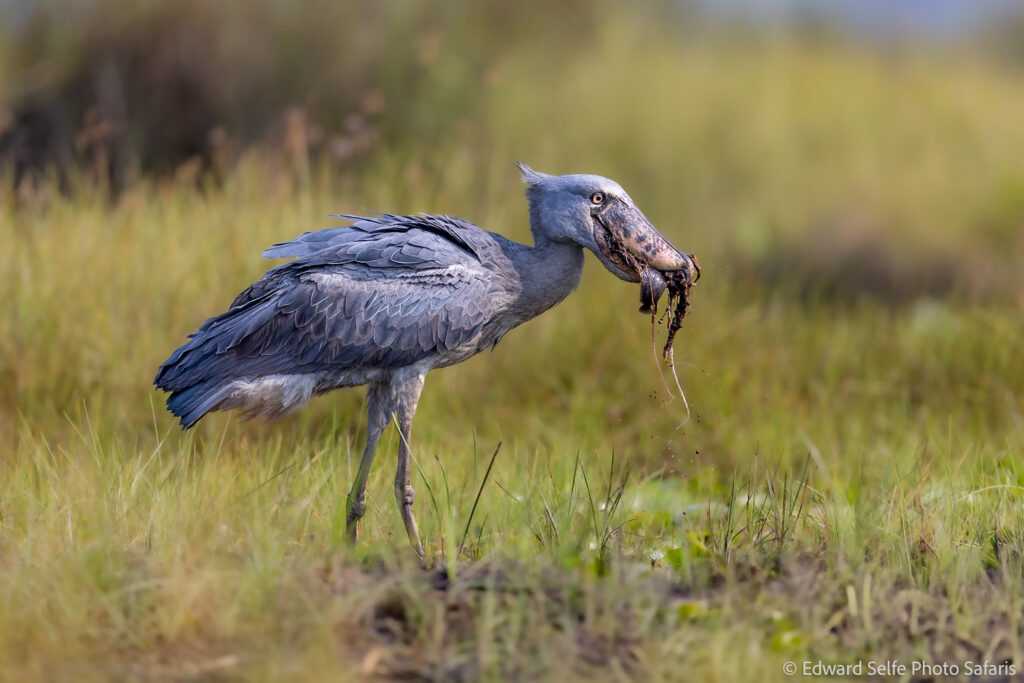
I had seen Shoebills before, both in these swamps and elsewhere, but never had I enjoyed such close up viewing of this hunting behaviour before. The bird stood quietly for some time, tipping its head back and forth to help locate the fish with its excellent hearing. It then took two steps forward and plunged its head into the vegetation, disappearing up to its shoulders. When it emerged, it had a fish (and a lot of plant matter) in its beak. The curved tip of the beak is used to kill the fish and it certainly seemed like this fish was dead very soon after. A couple of tosses of the head to remove the vegetation, and the fish disappeared down the bird’s neck.
As well as the shoebills, of which there are about 20 in the swamps, there is amazing birdlife of all kinds and in rich density. Once we had our fill of Shoebills – we saw 5 different birds over the course of the two visits – we spent time cruising the channels and searching for other opportunities. The results of our 5-6 hours in the swamps are in the gallery below.
The final part of the trip was an extension of a week in central Kenya. This came about due to a coincidence of the guests wanting more time in Africa and the increase in sightings of a very special black leopard in Laikipia Wilderness in Laikipia County. We wanted to explore the dry country in the centre of Kenya, give ourselves a good chance of seeing the black leopard, but also make sure that we enjoyed the whole place, and our experience was not just defined by that one animal. So we spent 3 nights in Meru National Park – on a mobile safari arranged by Laikipia – and then 4 nights at the River Camp in Laikipia itself.
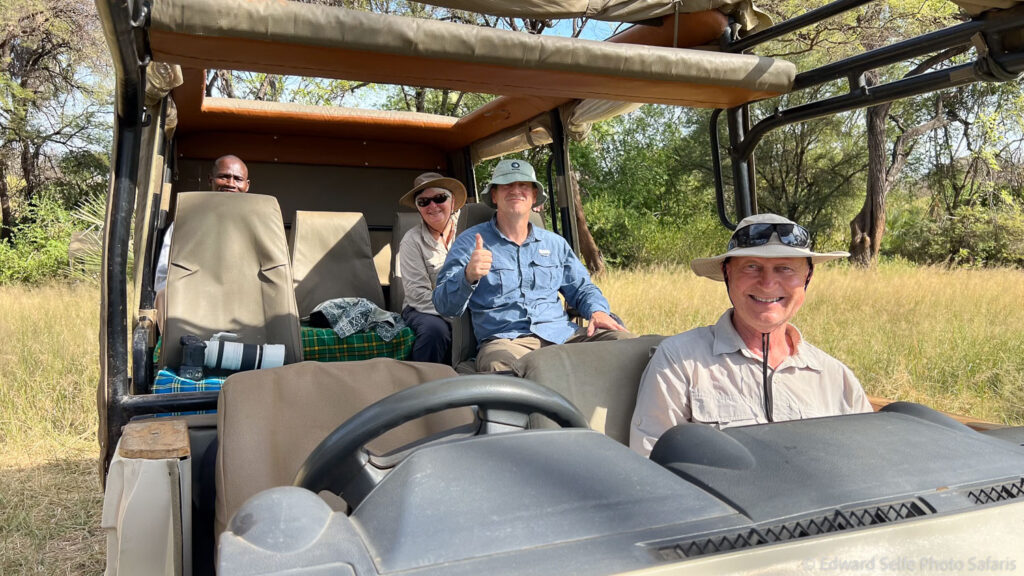
Meru National Park was large, scrubby and apparently short of wildlife. Or so it might appear to the casual observer. In fact, this park was beautiful, and filled with unusual safari characters like reticulated giraffe, lesser kudu, striped hyaena, greyish eagle-owl, gerenuk, vulturine guinea-fowl and pygmy falcon. We spent the three nights in a comfortable camp set up on the banks of the Rojewero river, and explored morning and evening from there each day.
Meru is the area where Joy & George Adamson lived while they reared and released the lion cub Elsa, and Elsa’s Kopje (granite outcrop) remains one of the best game viewing areas in the park to this day. We loved that the park was quiet and we very rarely saw other vehicles on sightings. We also spent time in the rhino sanctuary, which contains both black and white rhinos, but we didn’t have much luck with them, except a number of sightings in the distance.
After 3 days in Meru, we took a long road transfer to the highlands of Laikipia. This took us around Mt Kenya, up to 2500m on the northern side where we stopped for a break with stunning views over the farmlands on the mountain’s slopes. It was a long drive but sometimes long road journeys are helpful for “grounding” a trip, reminding us all of the scale of the place we are visiting and allowing a bit more time to absorb the sights and sounds of normal life in the destination country. This might have gone a bit far when a fired-up youth banged on the side of our vehicle on the road into Meru town during the protests over the taxes that had been recently implemented by the country’s president.
We were happy to arrive late in the afternoon to Laikipia where we settled into River Camp with a view over the Ewaso Nyiro river in front. There was still time for an afternoon safari so we set out to patrol the range of Giza, the black leopardess, and hope that she might be seen. In fact, it was a cheetah with 2 cubs which caught out attention and we spent the evening with them. We had agreed to take what came at Laikipia and not to devote the whole time to searching for Giza.
In fact, as we were to learn from Dan Peel, our excellent guide for the whole week in Kenya, Giza’s large territory overlaps the Laikipia Wilderness area only in the far north-east corner; much of her time is spent in the neighbouring farms – across the river to the north and across the ‘road’ to the east. Coming from a national park environment, it was strange to have a border demarcated only by a road! But we learned that we should patrol the roads where Laikipia joins with the neighbours, looking for her tracks, to determine if she is ‘inside’ the Laikipia area, or is off patrolling in beyond our reach.
For two days, there was no sign of her so we enjoyed everything else that the farm offers, which was lions, reticulated giraffe, Grevy’s zebra, amazing birds, large herds of elephants and, tantalisingly, a brief sighting of a very large elephant with massive tusks. Sadly he eluded us but we felt that we had just missed seeing something very special indeed. The time flew past and we realised that it was suddenly our last full day in Laikipia.
On our final day, we made a concerted effort to locate Giza, and were thrilled when the guiding team tracked her down to a thicket where she had killed a dikdik, her usual prey. We hoped that she would come out, but she seemed reluctant. A drive past the thicket revealed a small patch of jet black fur so we backed off and waited. She made us wait….long into the afternoon. We had spotters on the tops of the hills so we would know when she moved but, even so, it was the alarm calls of guinea-fowl nearby (and not the spotters) who told us that she had sneaked out of the thicket and moved off! We moved fast, using the spotlight, and found a position ahead of her to wait for her to emerge.
When she did, it was breathtaking, and I forgot to lift my camera for several seconds! In the dark, none of the faint rosettes are visible and she appears truly inky black. Her eyes, lit up in the gentle spotlight, appear to float in the air, unattached to a body below. When she turns, and the light hits her correctly, the sheen of her glossy coat is visible as she moves in the usual graceful manner of a leopard. However, it was only with the removal of the spotty coat pattern that I realised how very much a leopard’s identity is determined by that distinctive pelage. When a leopard becomes shape alone – and no pattern – one is forced to look again at the lithe structure of this most adaptable of large cats.
She is beautiful. She is also very unusual, but not all unusual creatures are beautiful. She’s wasp-waisted, giving her a greyhound-like energy and she moves with all the grace of her species. But in the dark, without the spotty pattern, it’s hard to see where legs and body join, so she seems to flow rather than to walk. Even the short time that we had with her – and I wish it had been more – was very special indeed.
This had been a long trip. To end with a massive high like an evening with Giza was perhaps the greatest ending we could have asked for. My grateful thanks go to Don, Sharon and John Erik who were a brilliant group to lead, and to our guides Kamya in Uganda and Dan Peel in Kenya who showed us the treasures of these areas with great skill, style and grace. Thank you also the scouts, guides, spotters and security officers who escorted our treks and safaris to ensure we saw as much as possible and stayed safe along the way. And thank you to you for reading all the way to the end!
I plan to repeat this safari, or a version of it, in December 2026. Please get in touch if you would like to join.

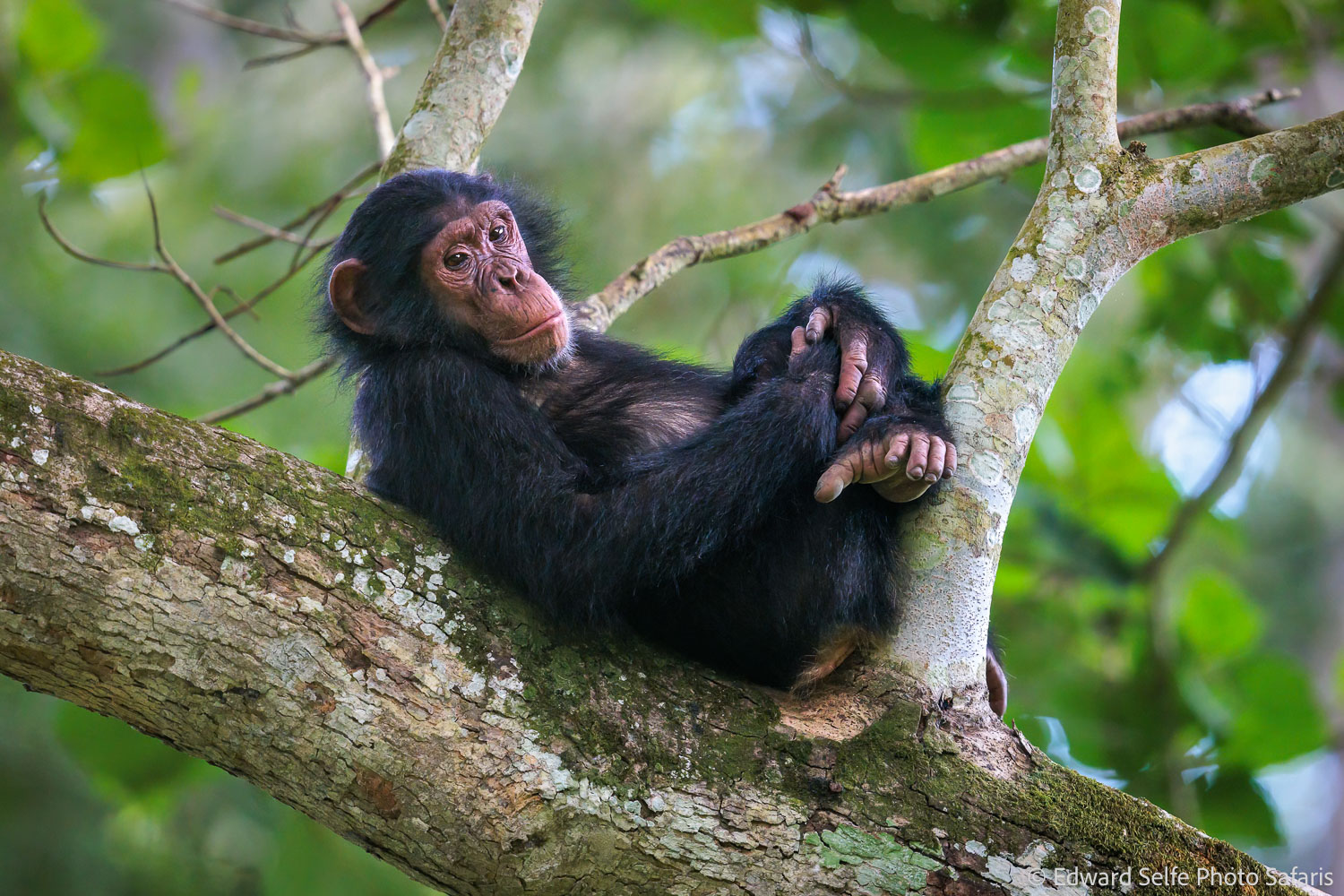
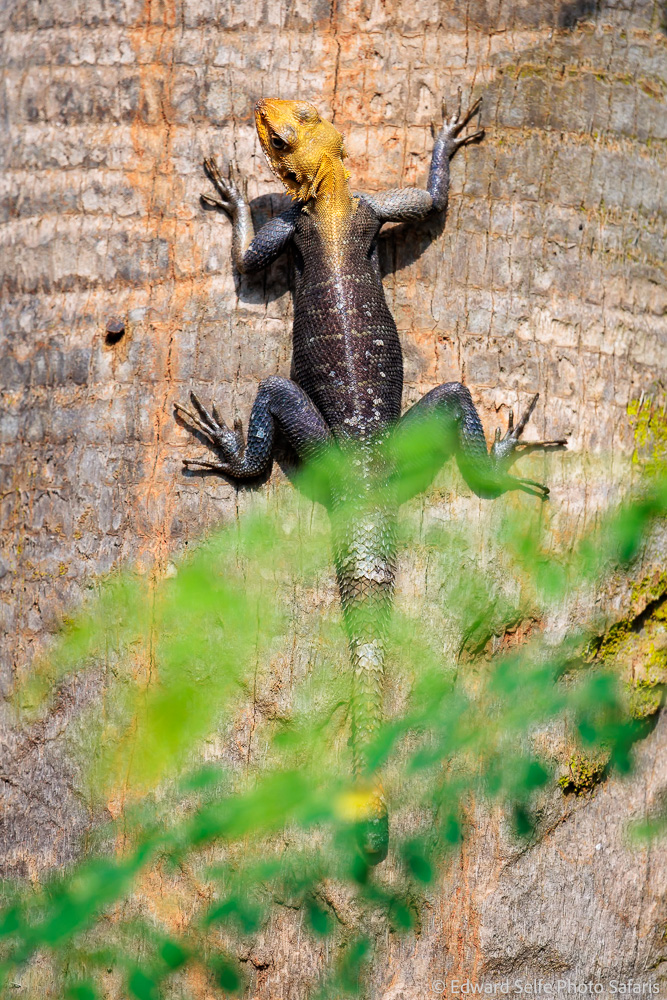
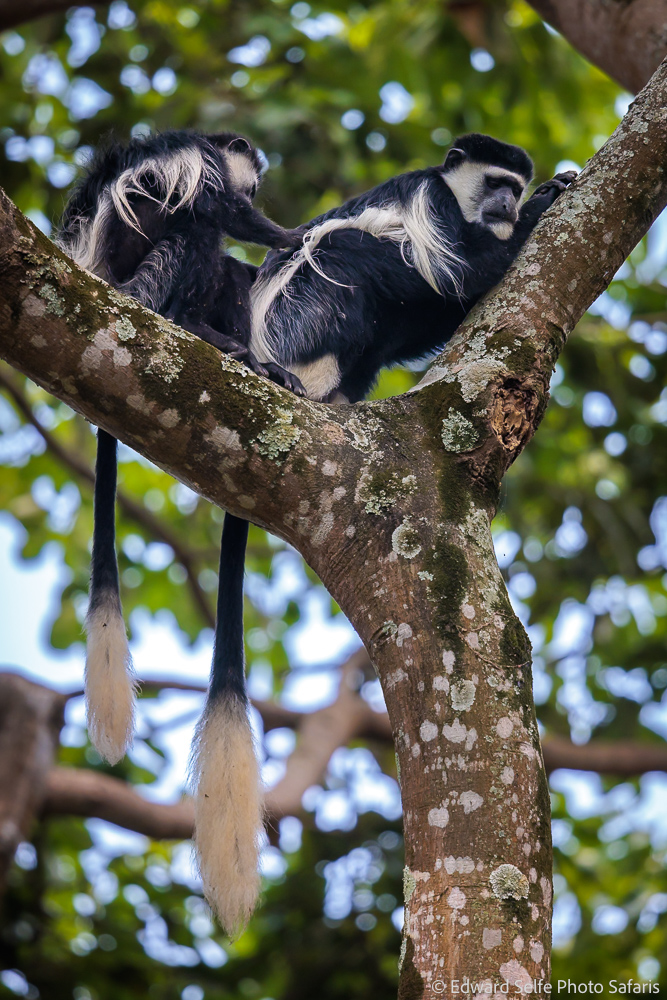
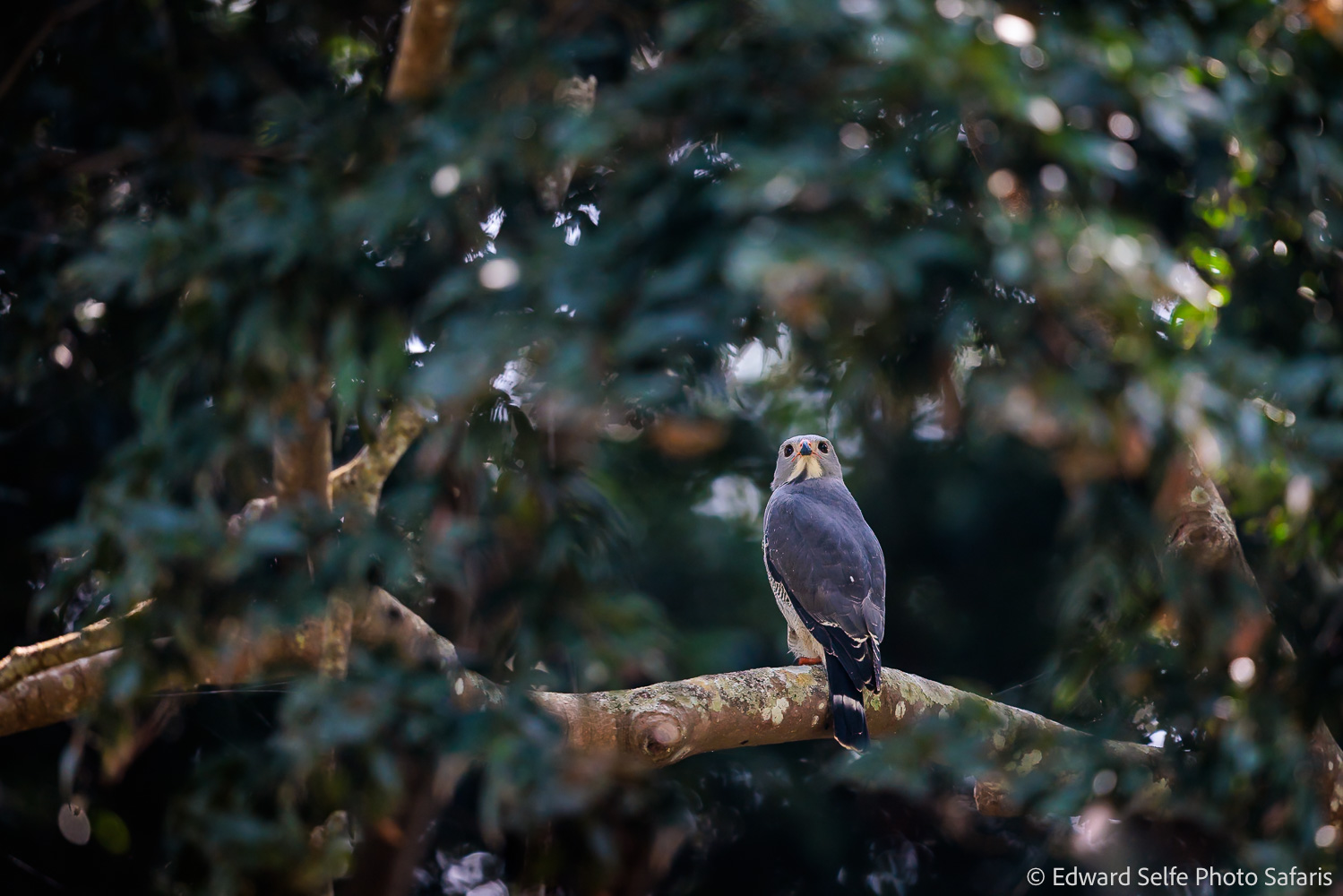
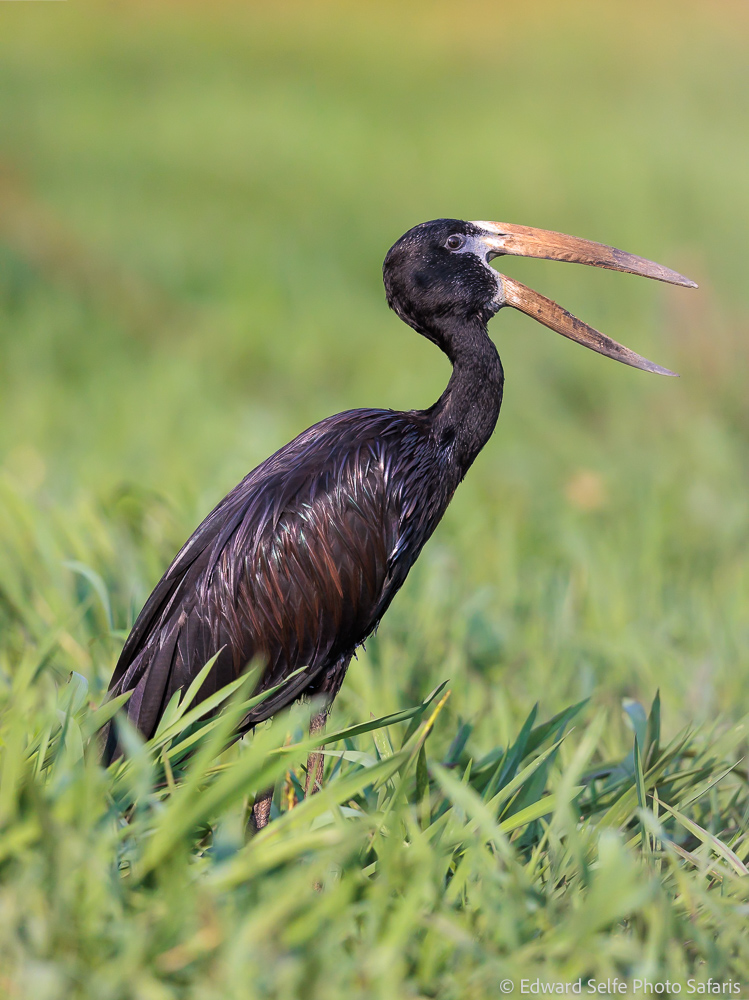
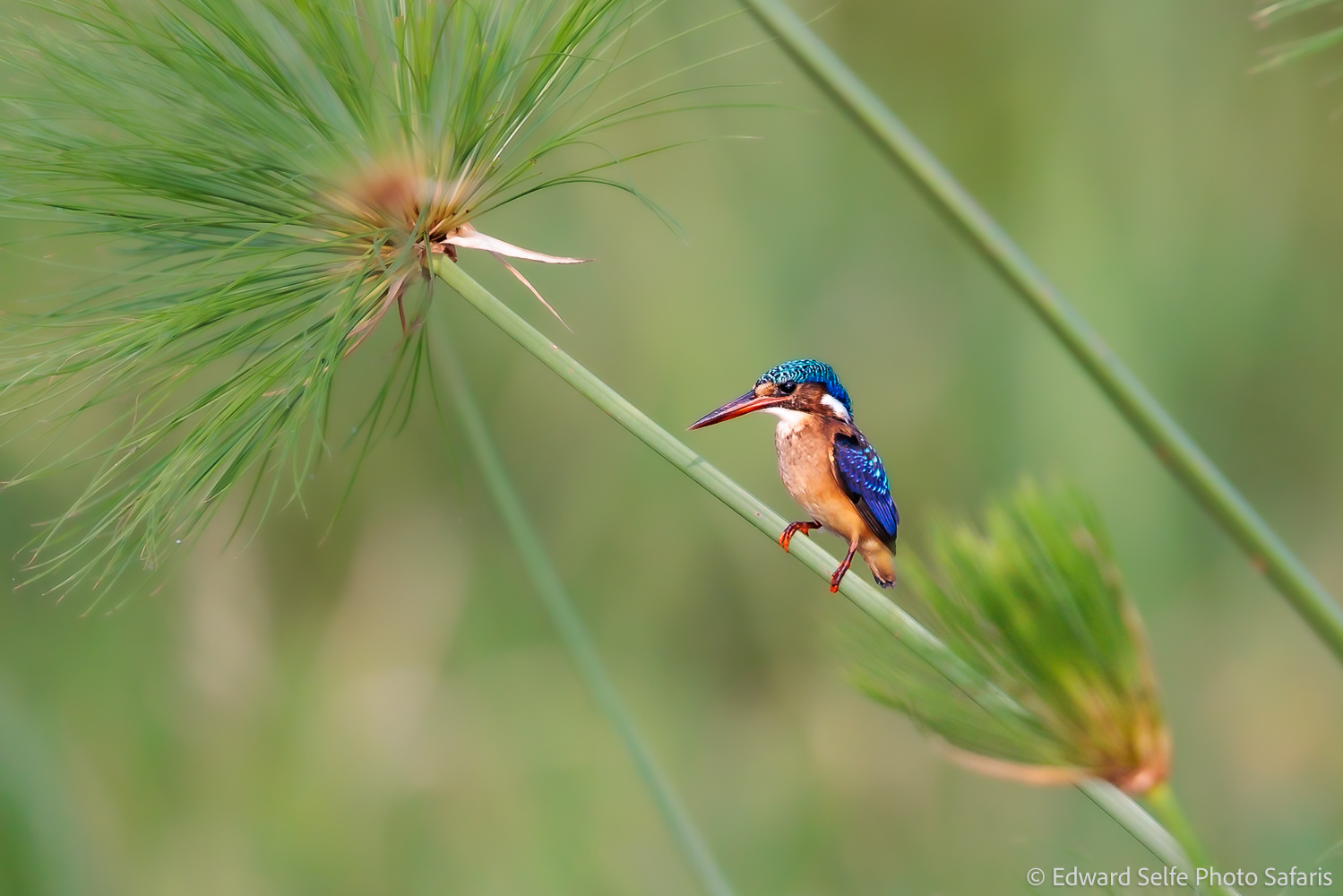
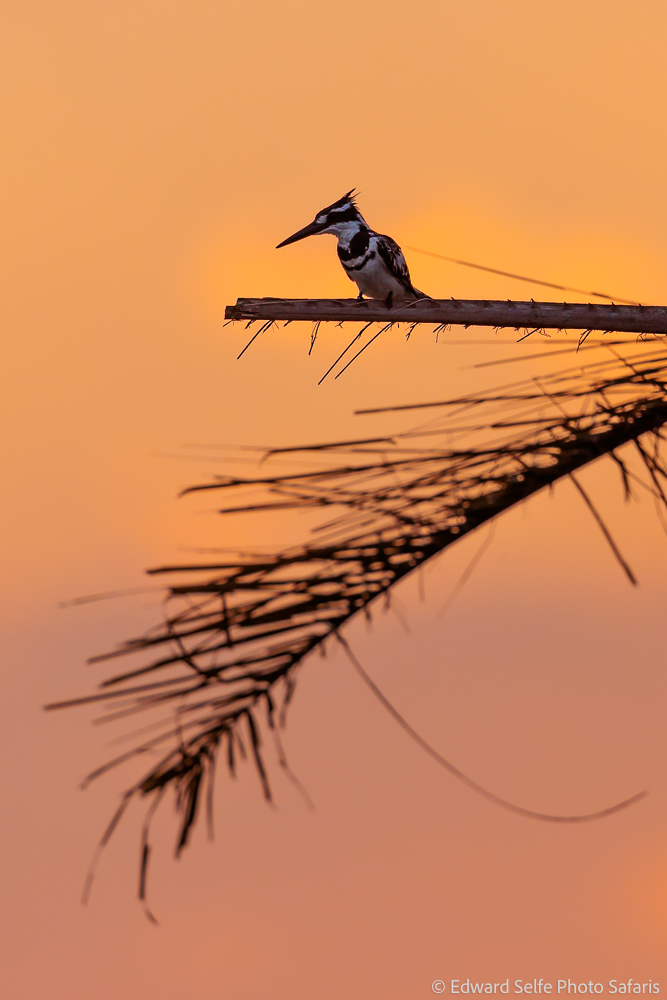
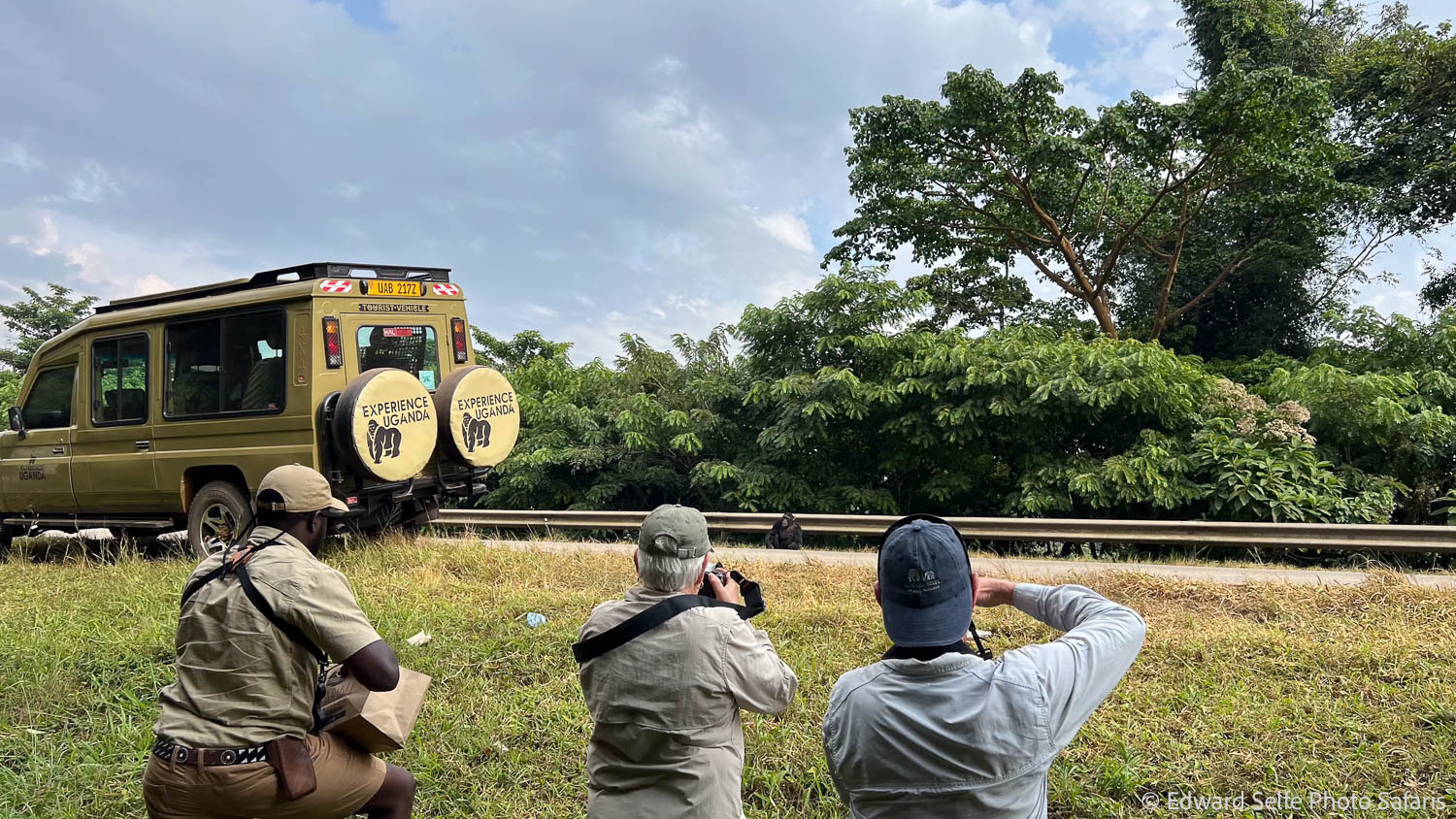
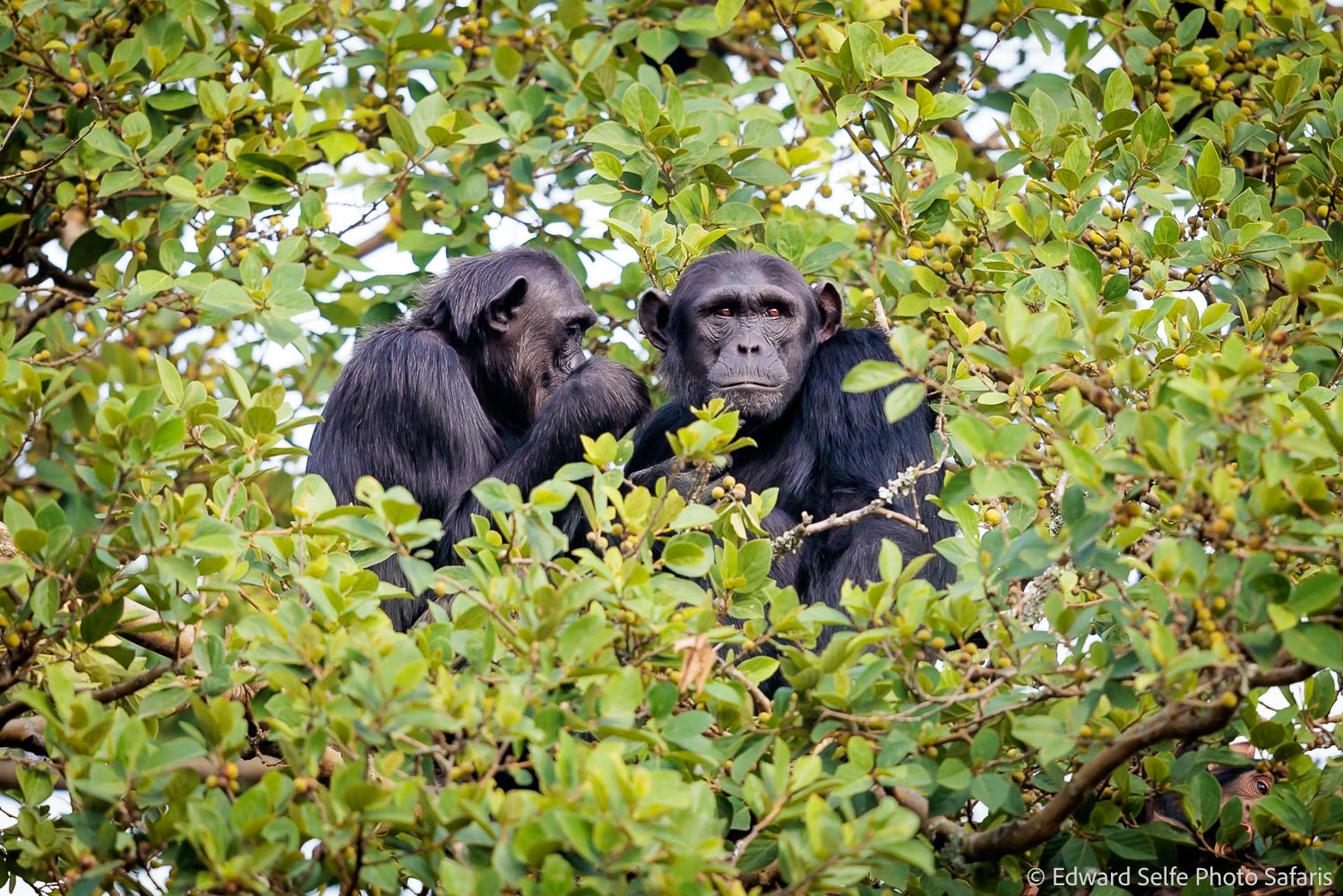
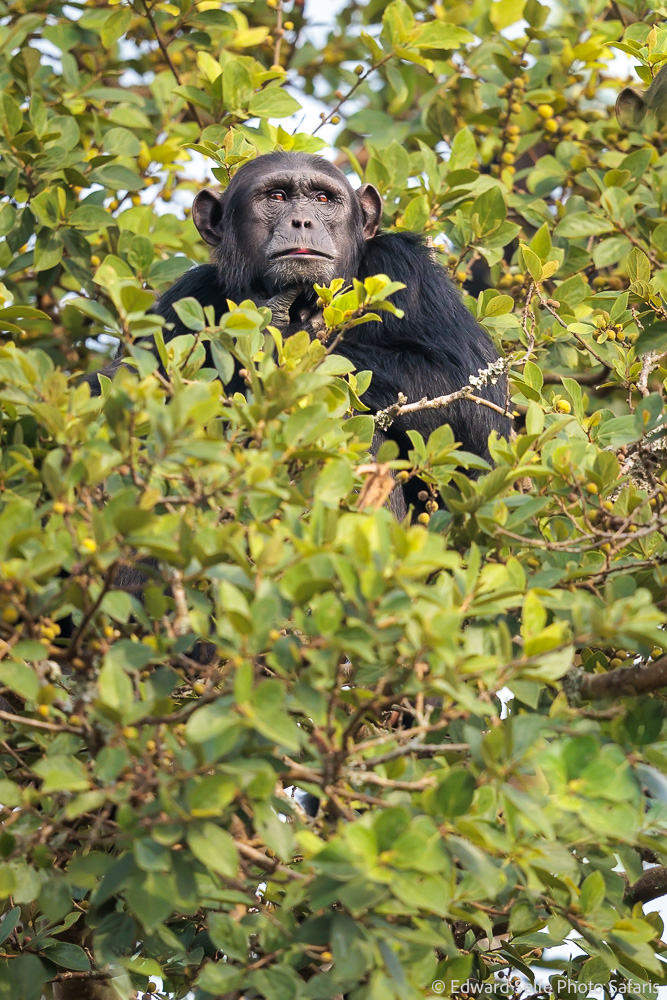
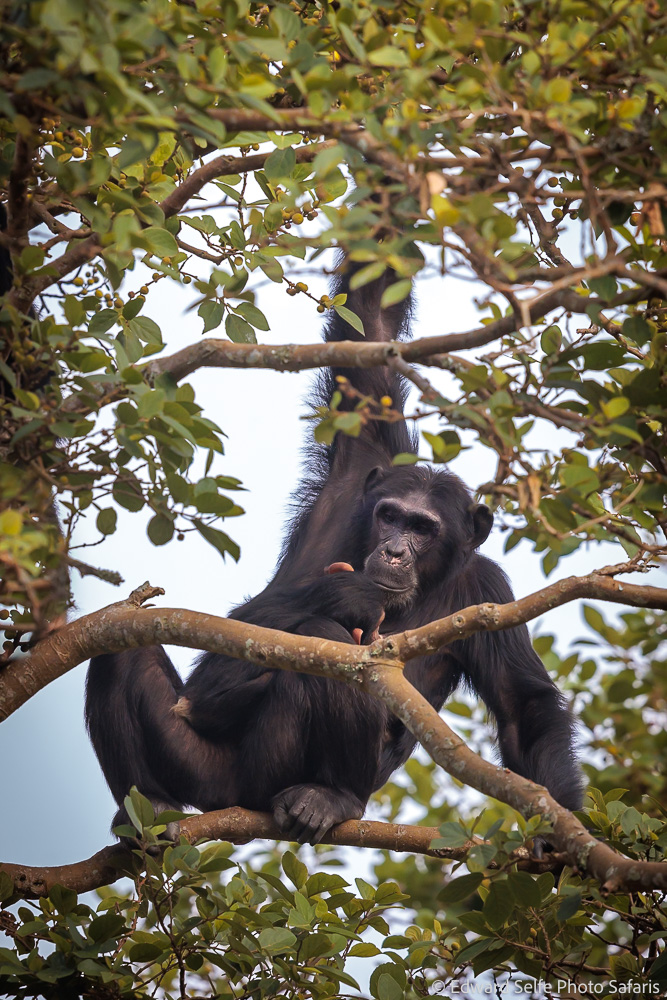
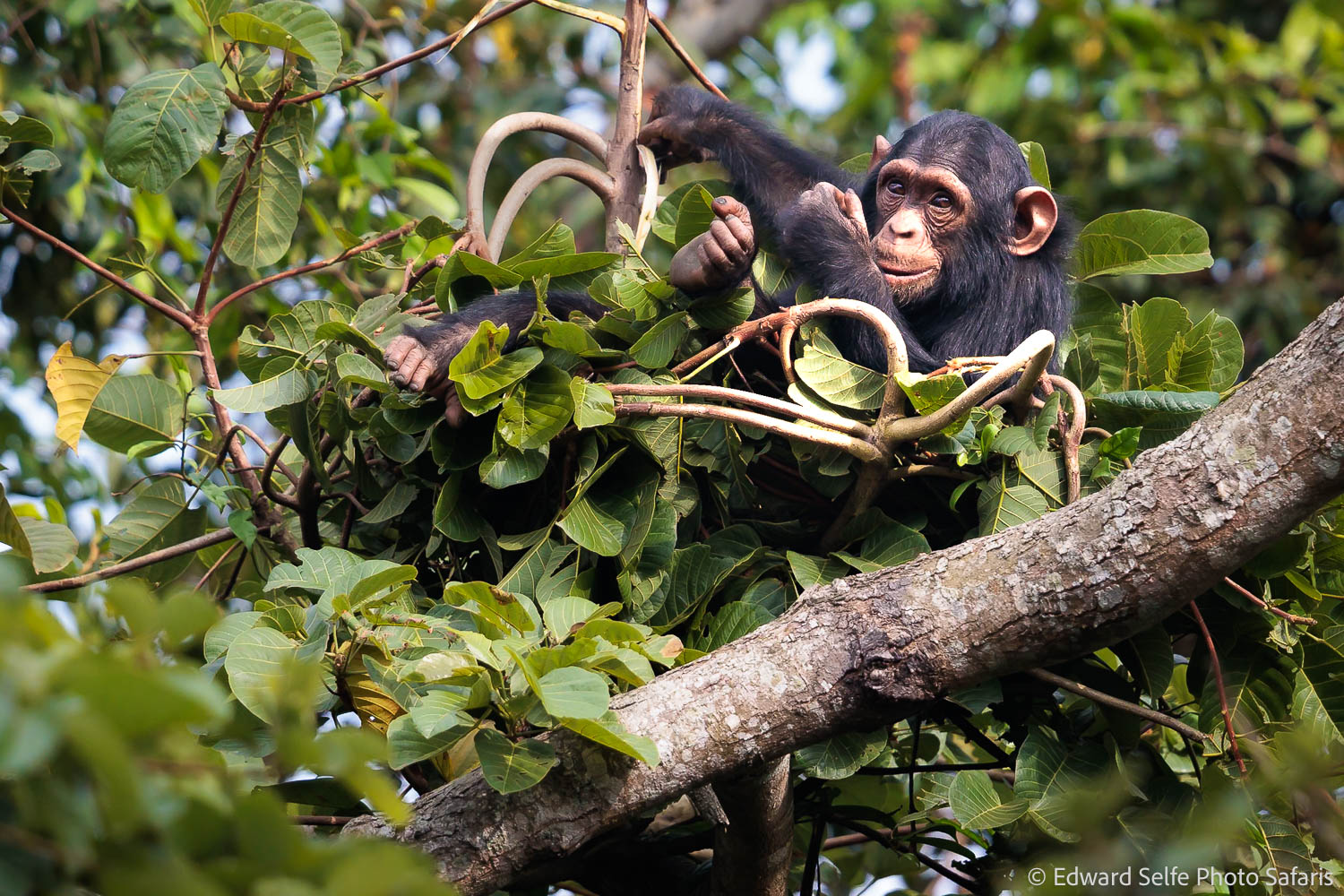
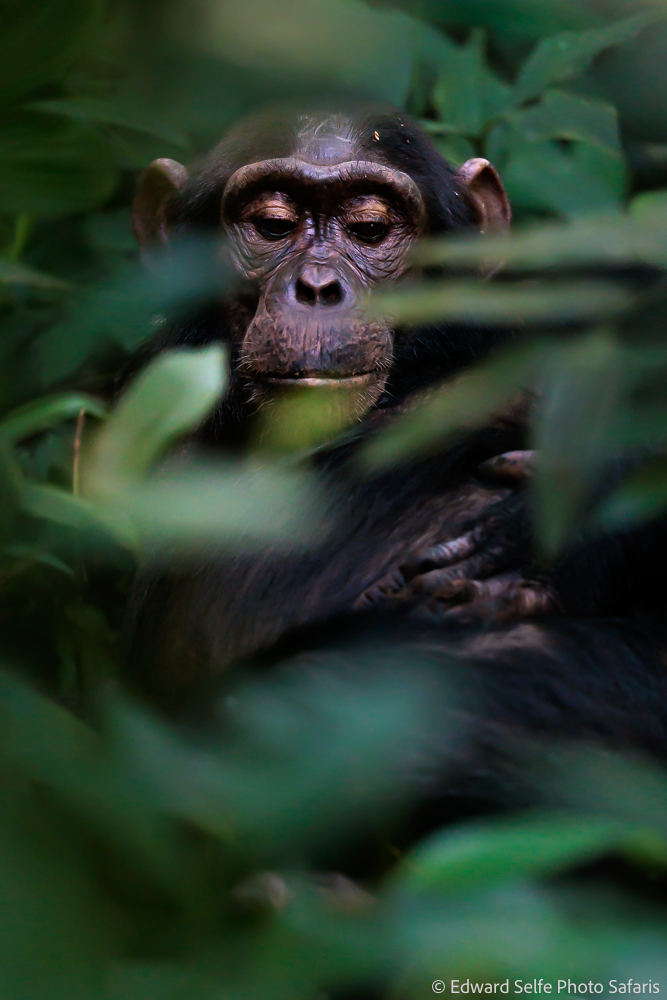
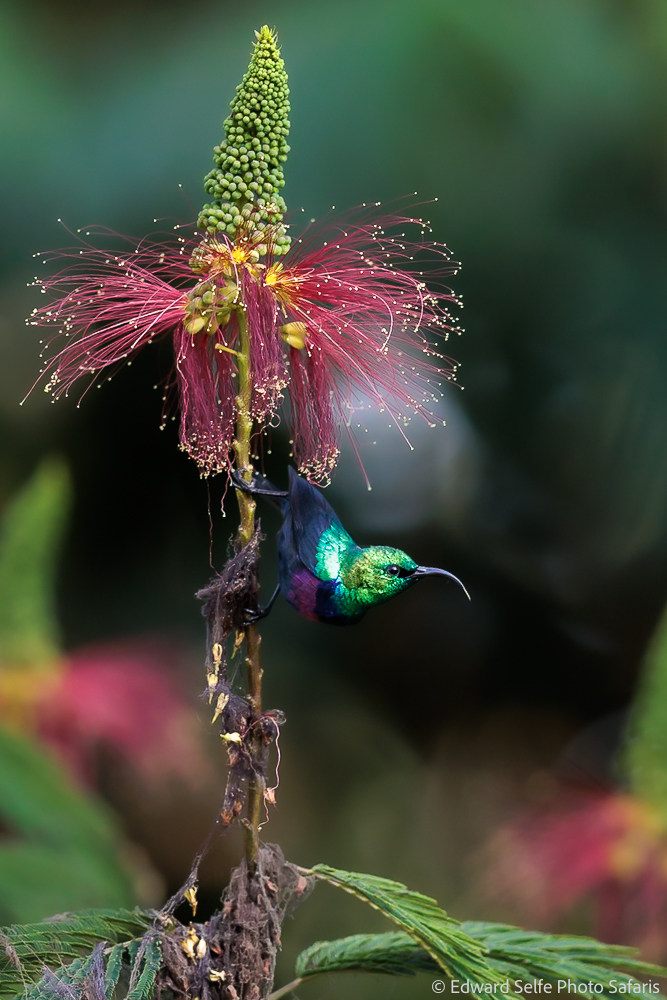
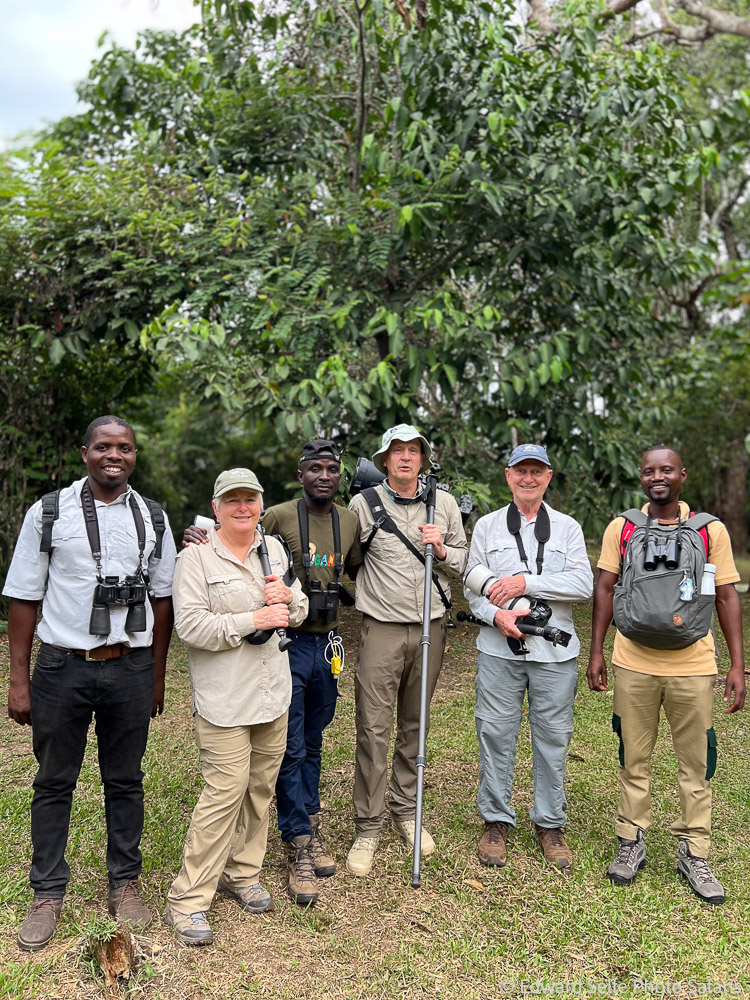
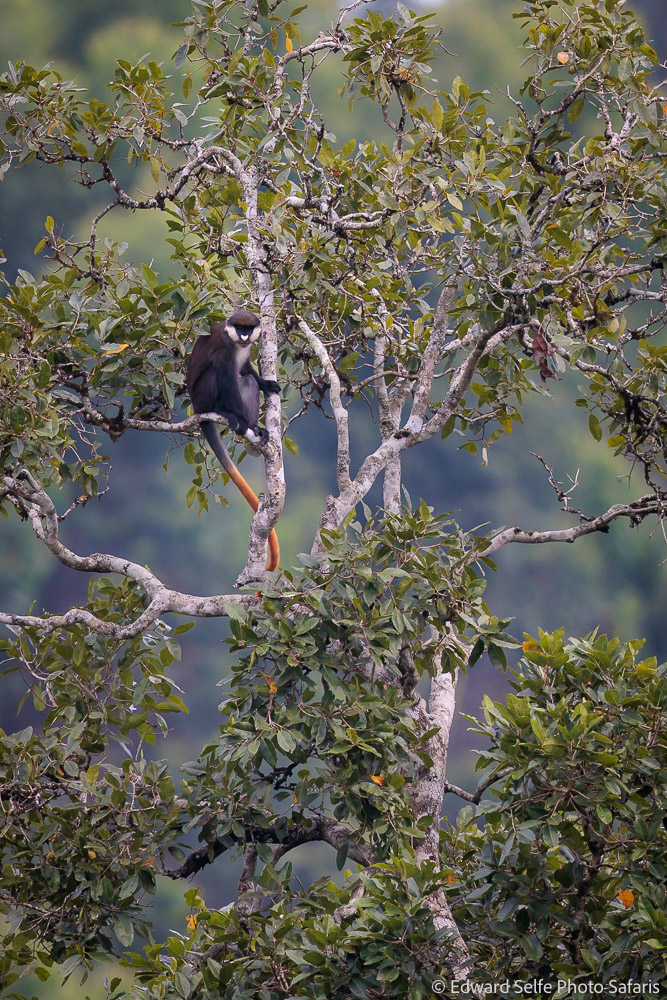
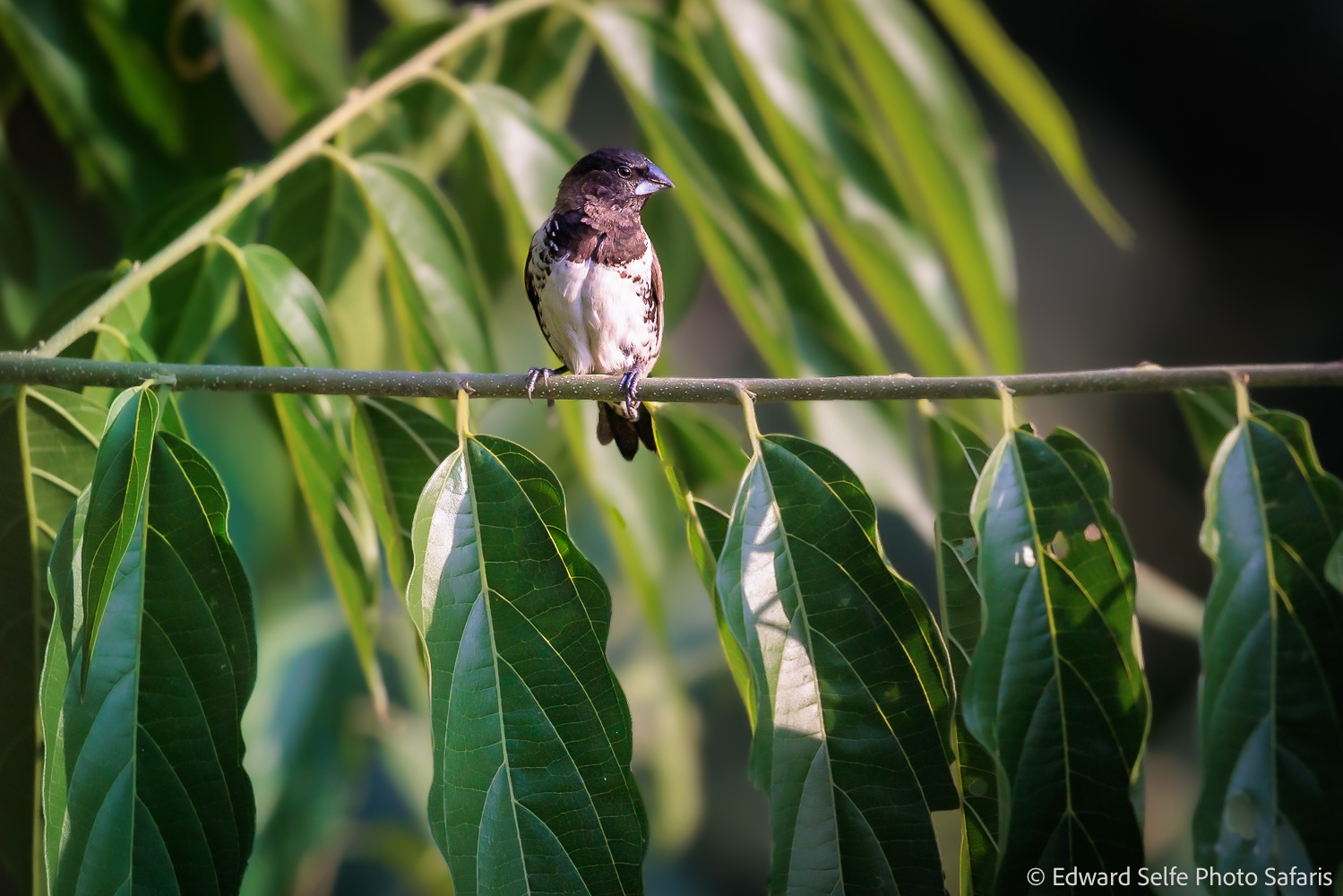
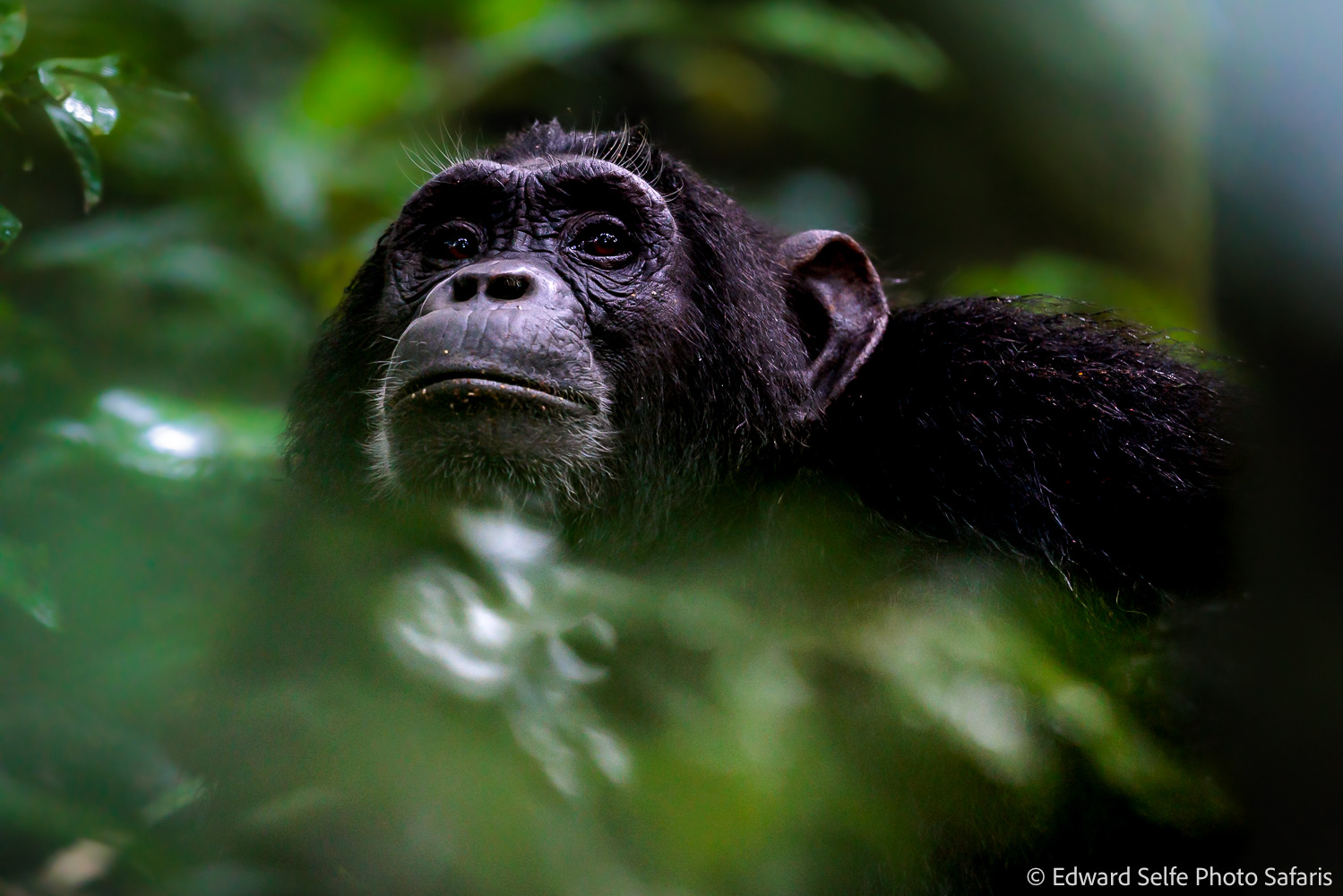
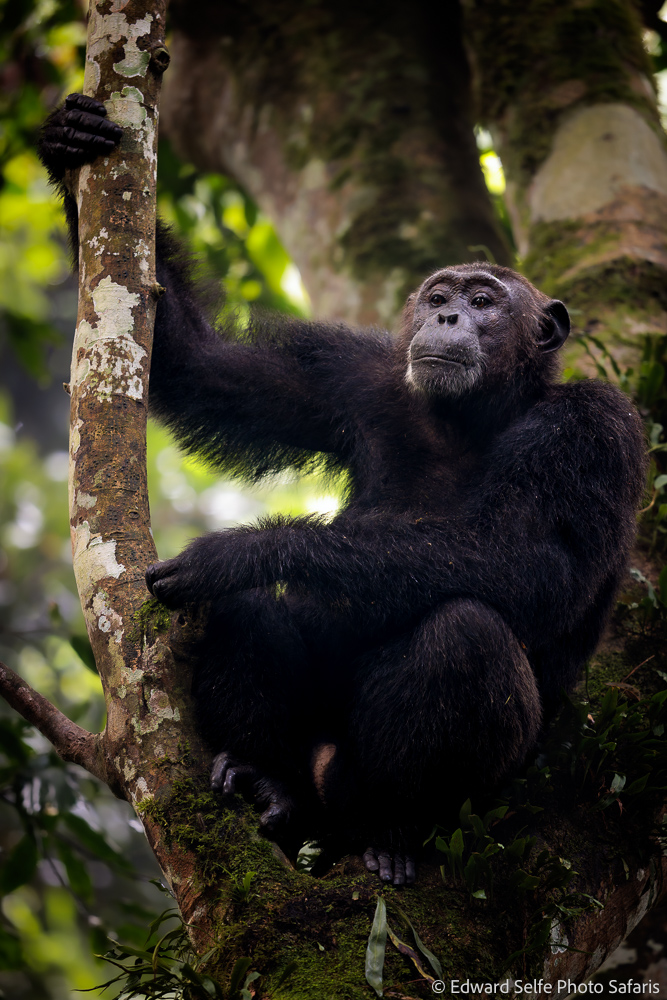
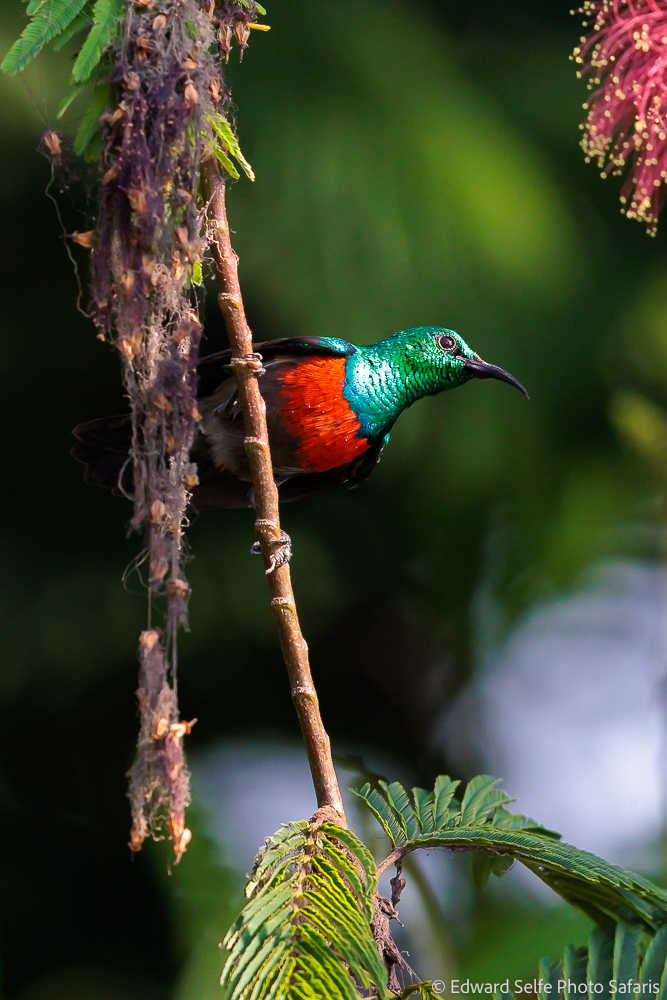
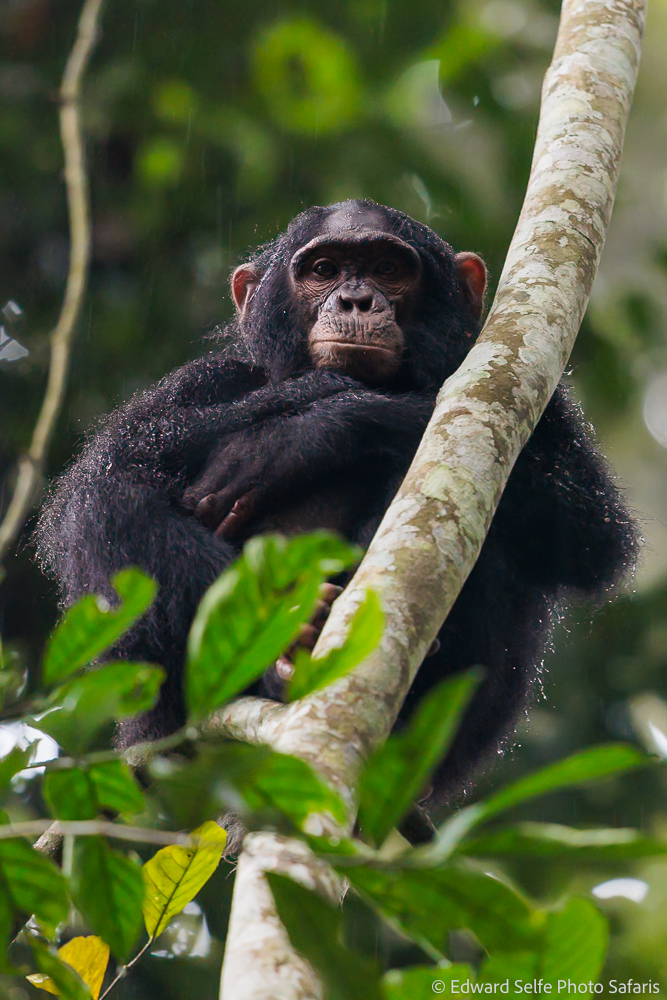
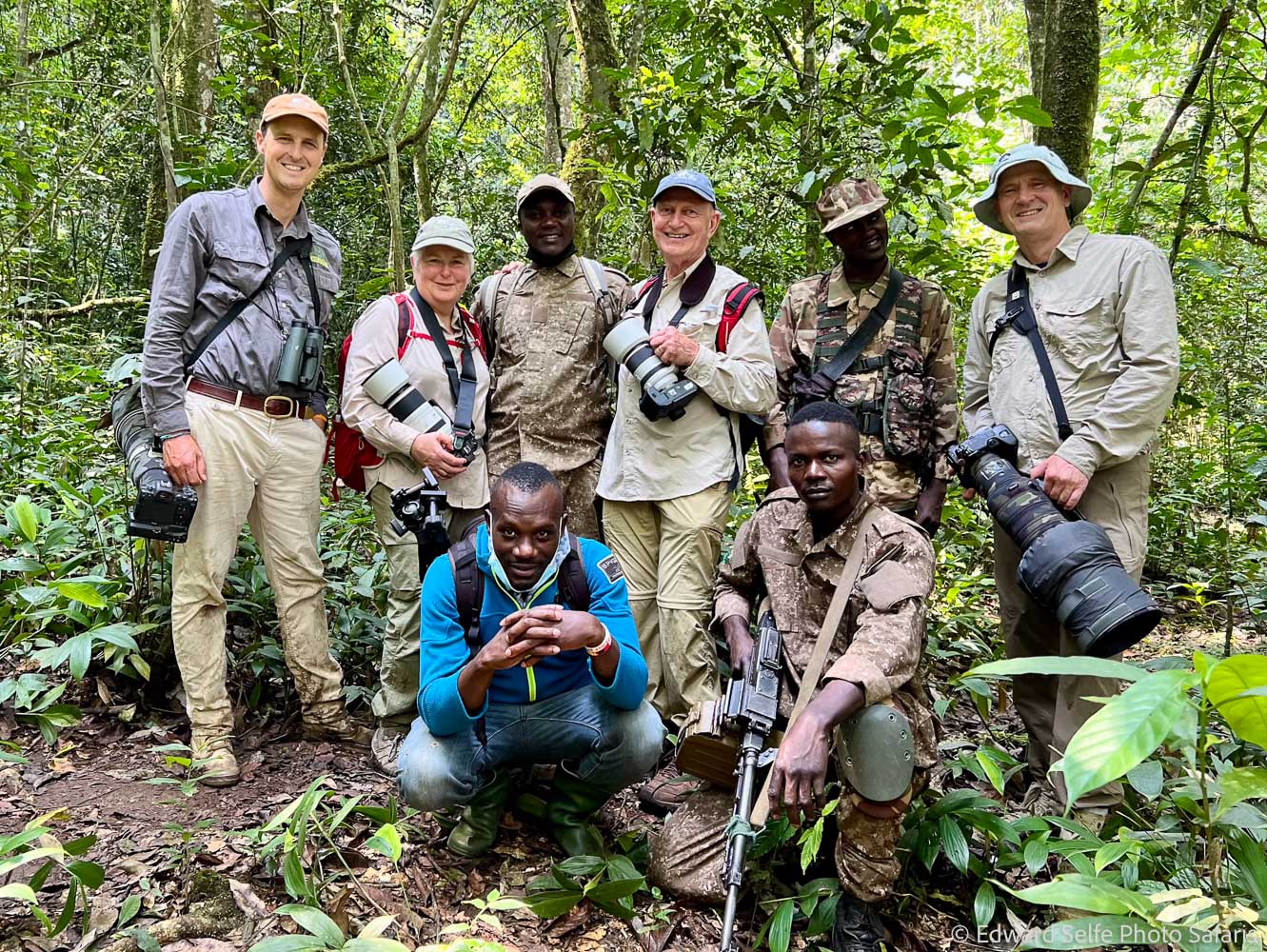
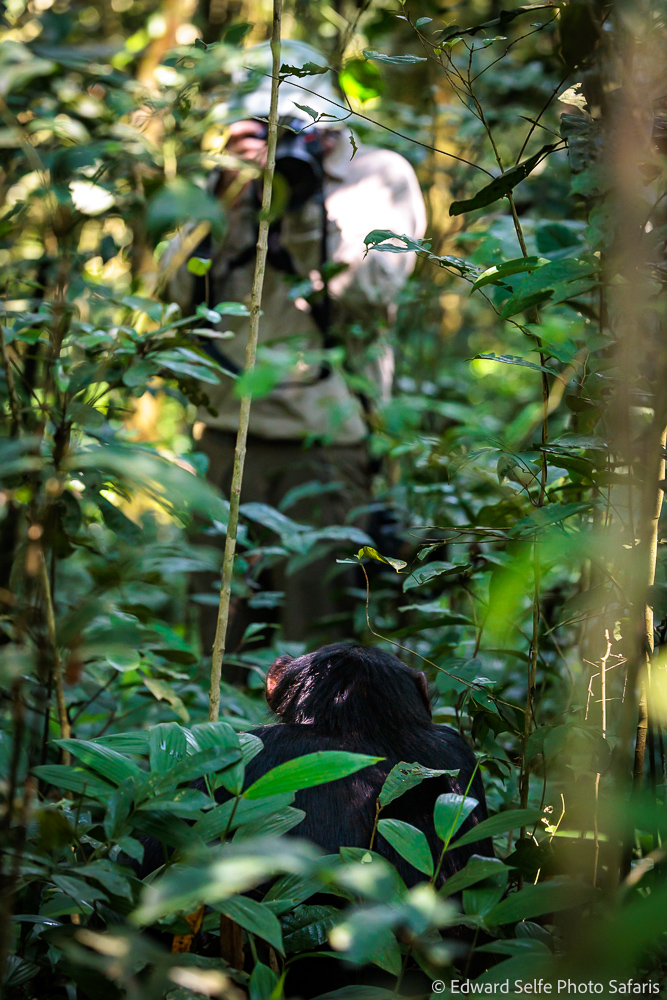
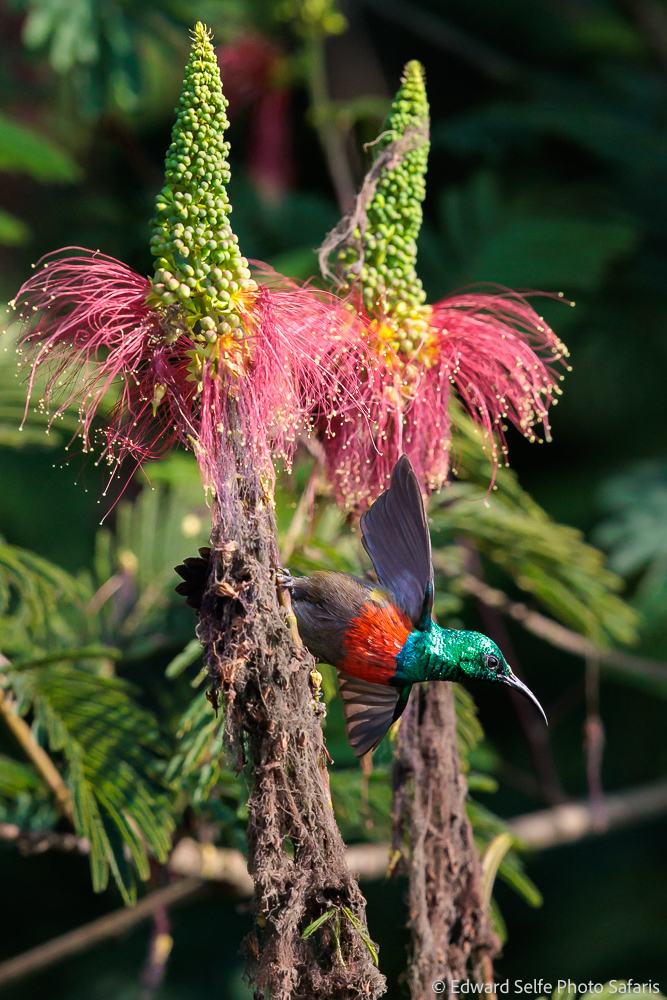
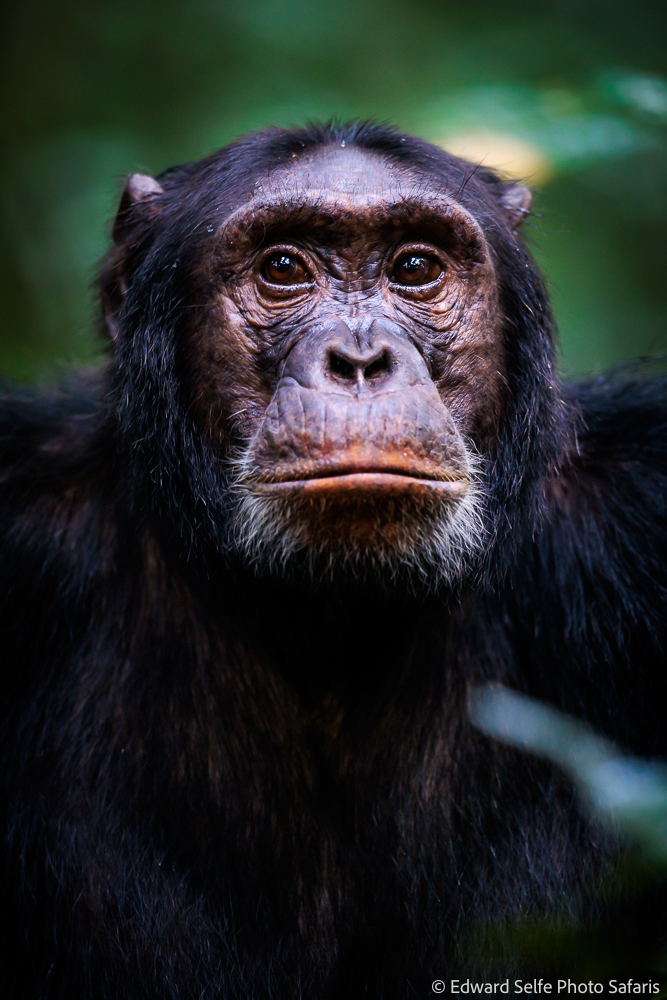
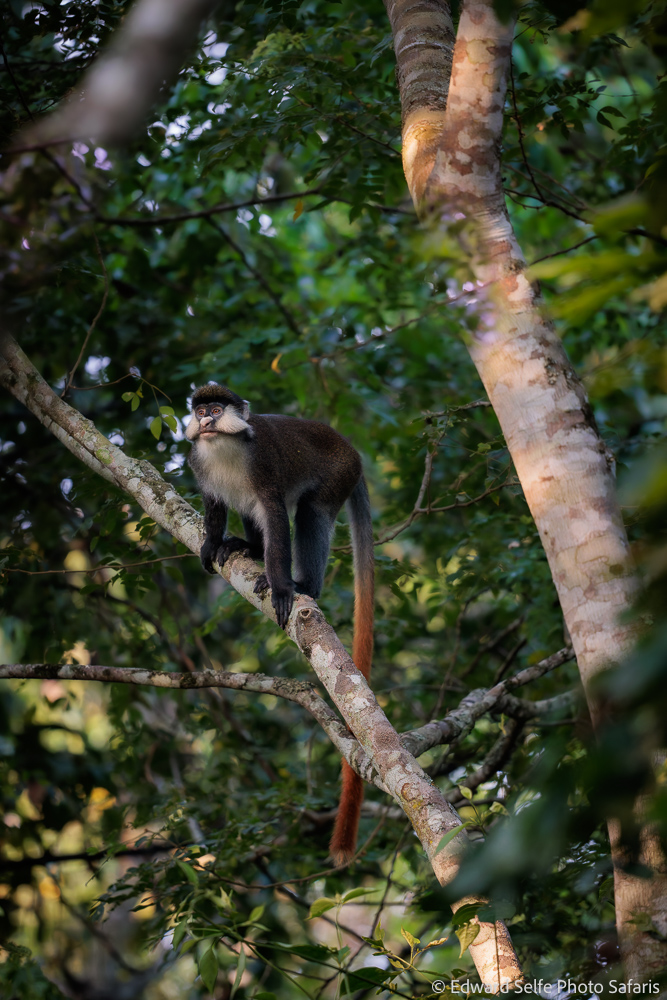
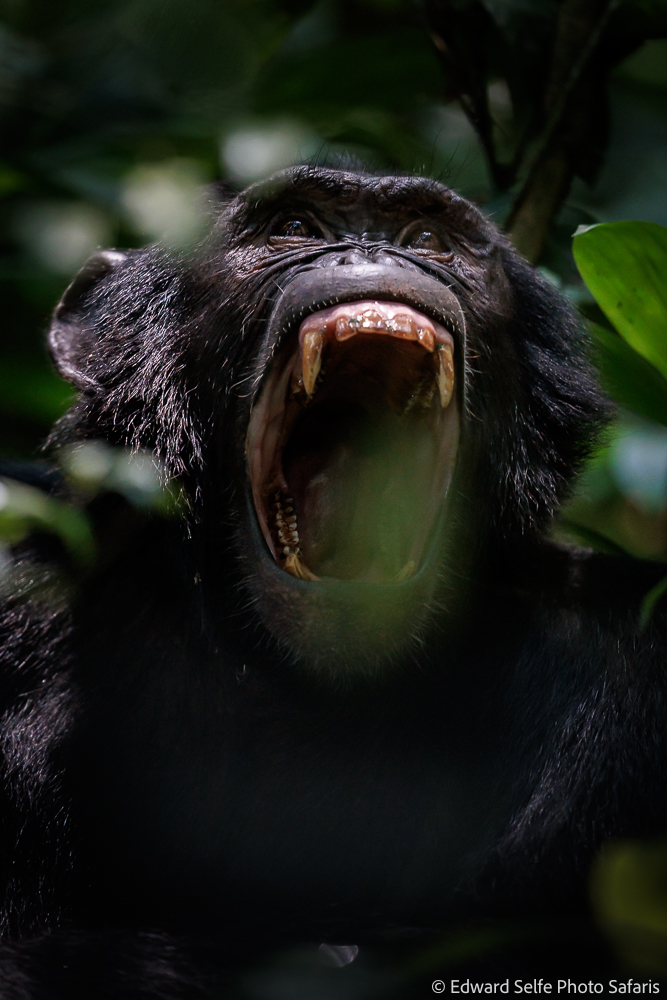
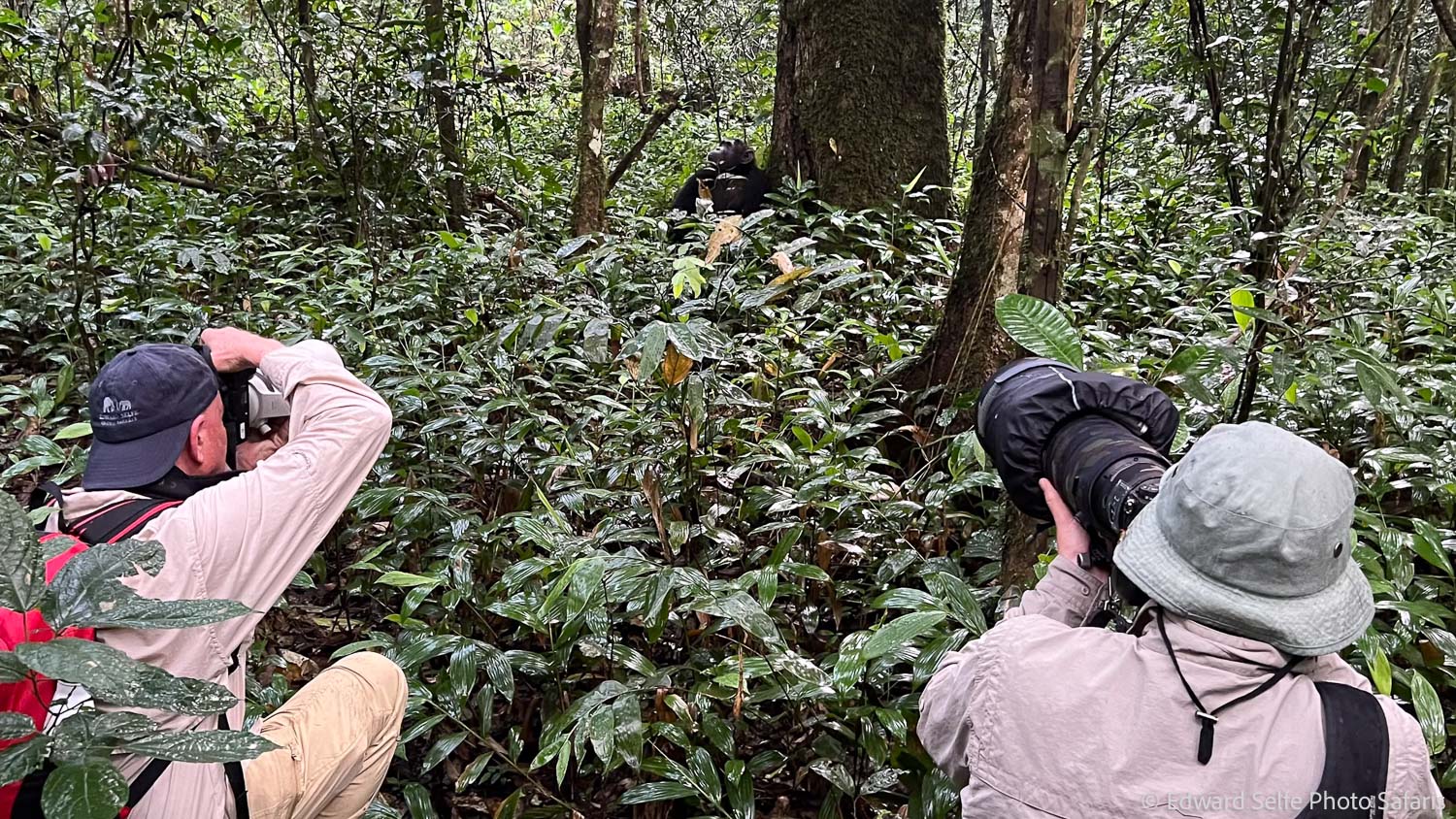
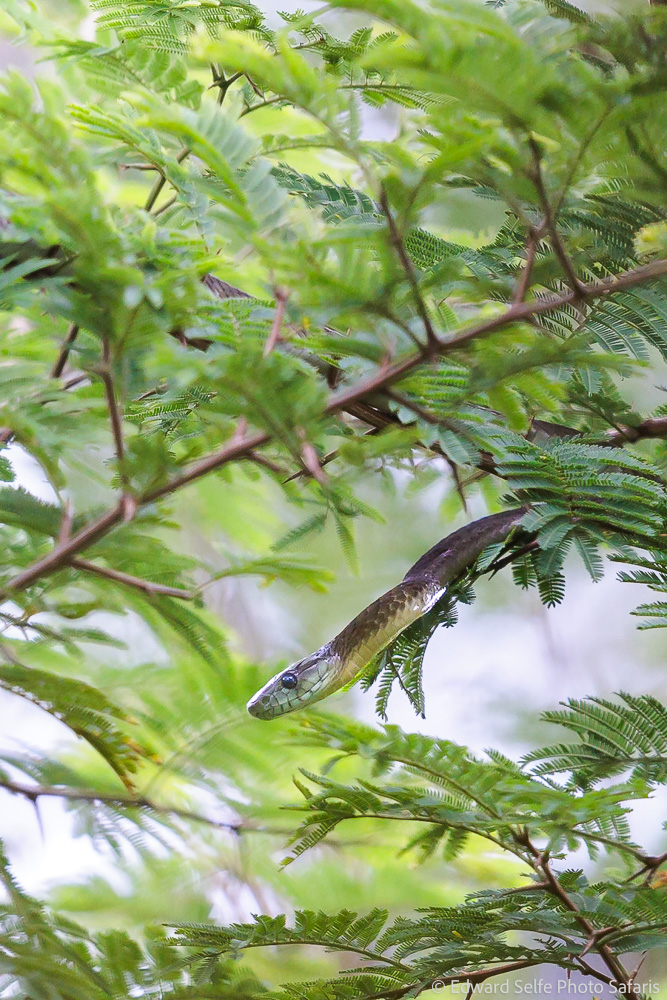
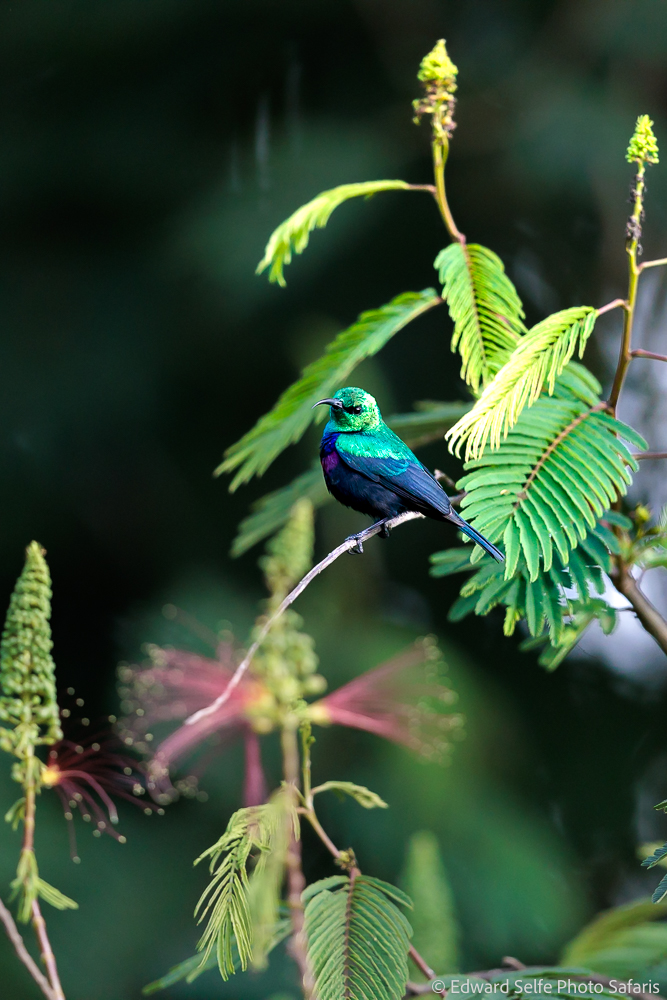
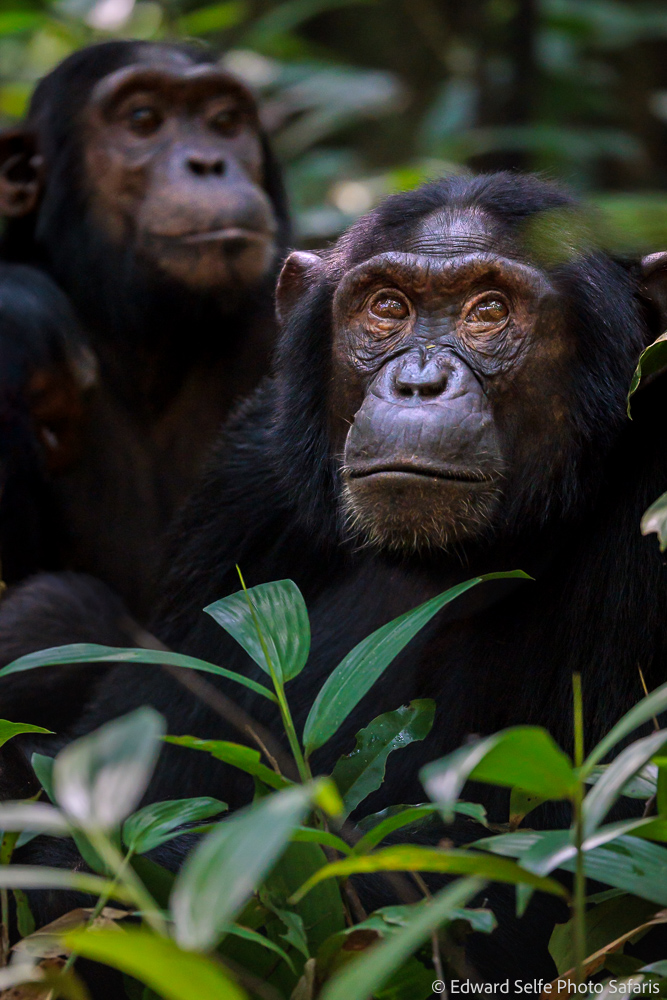
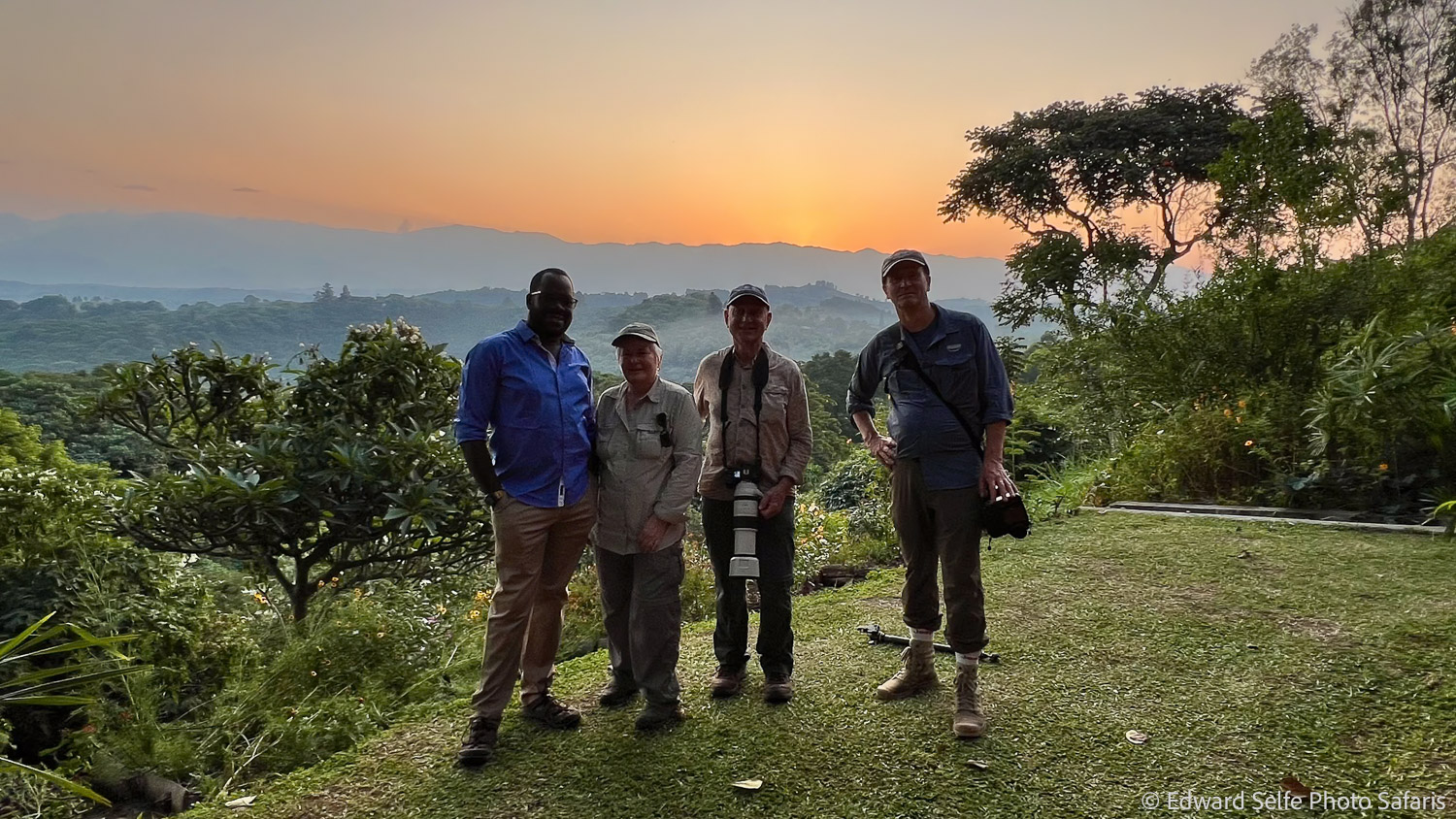
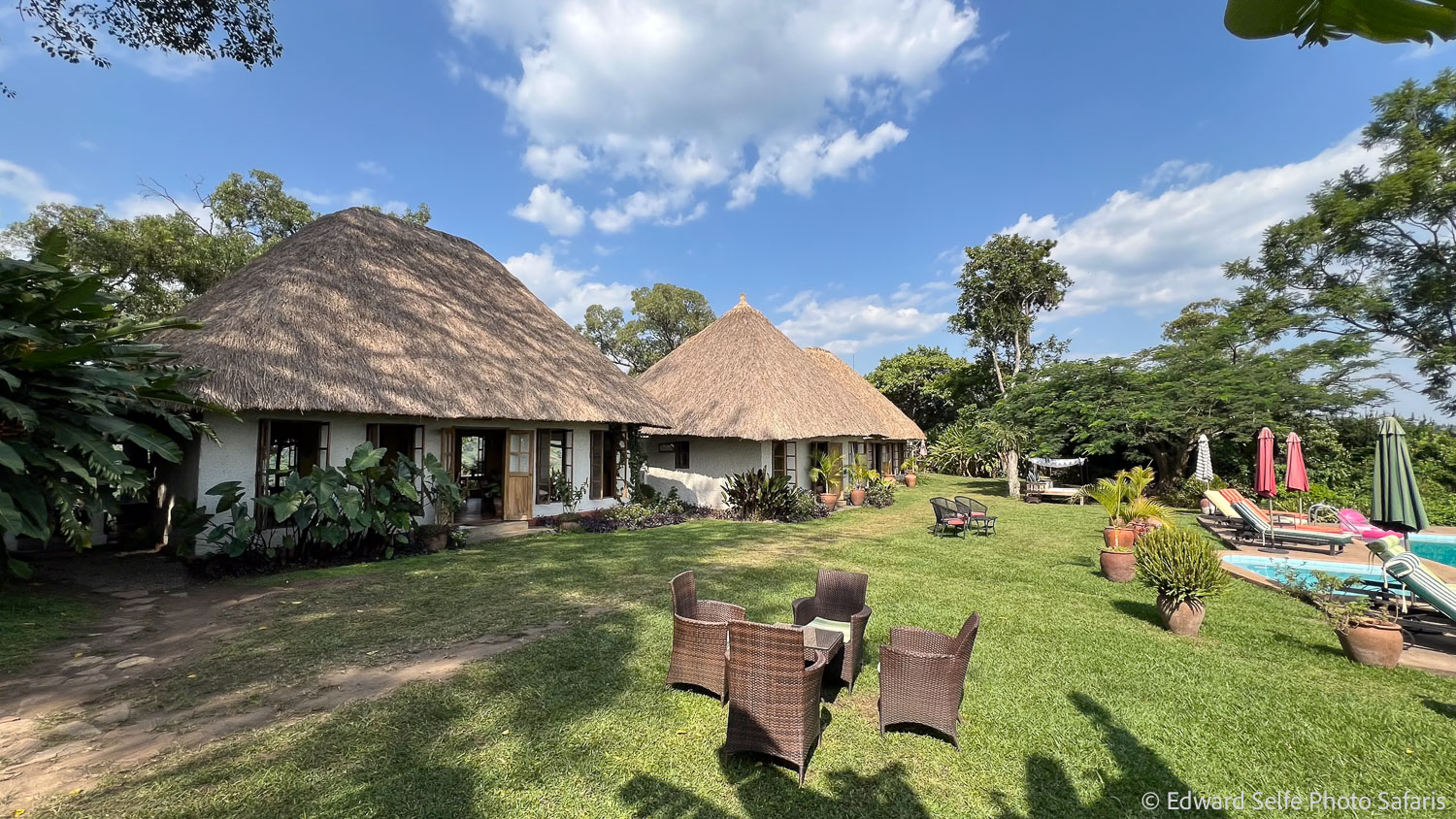
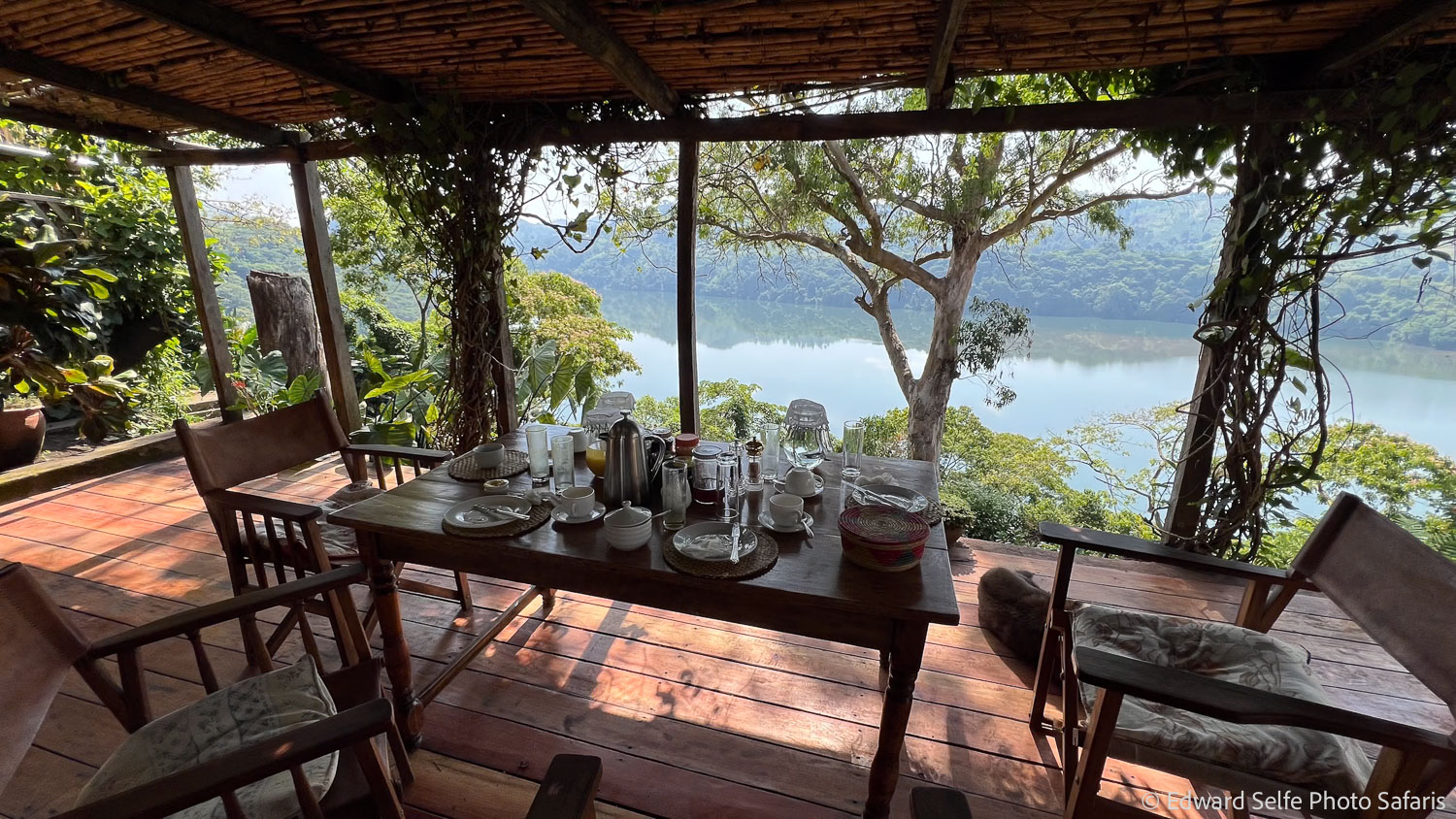
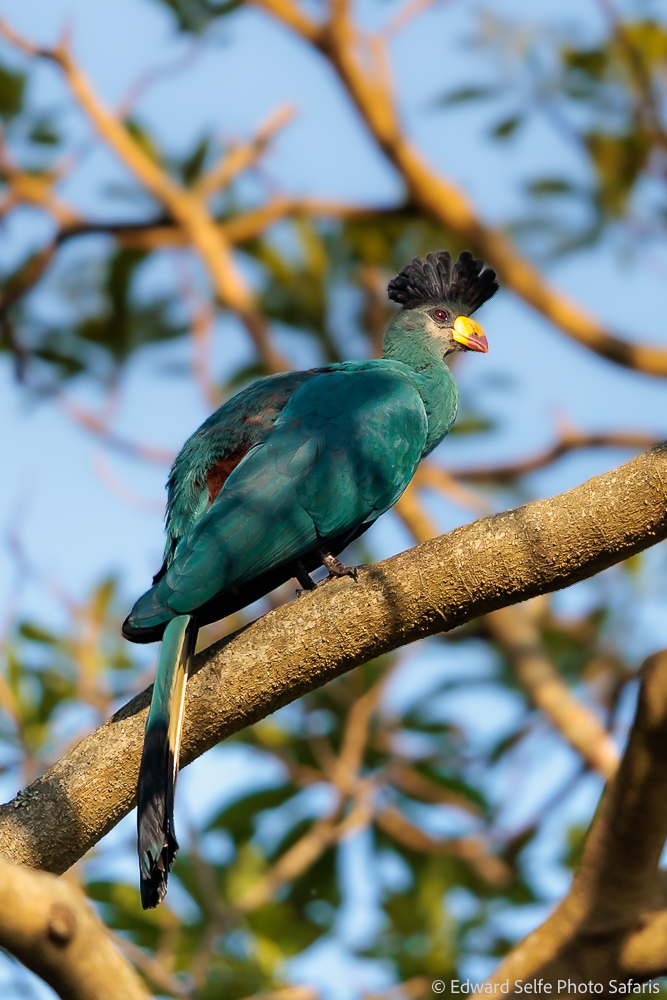
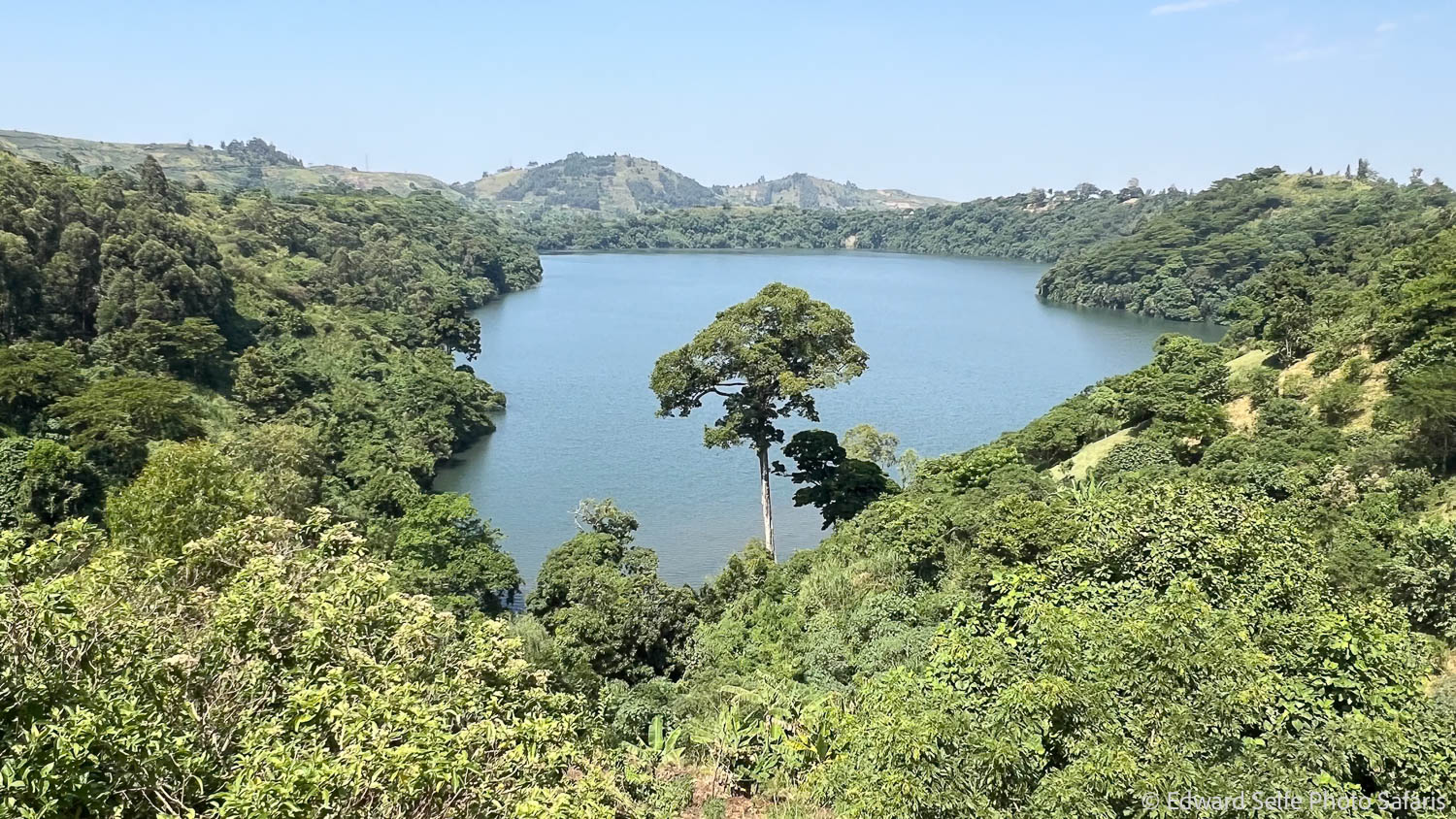
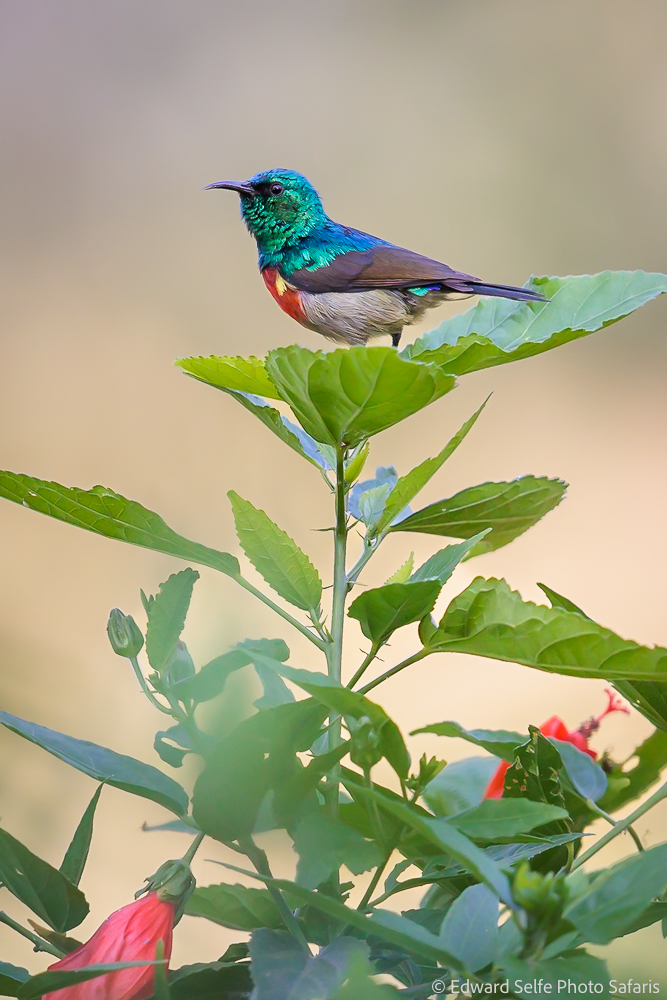
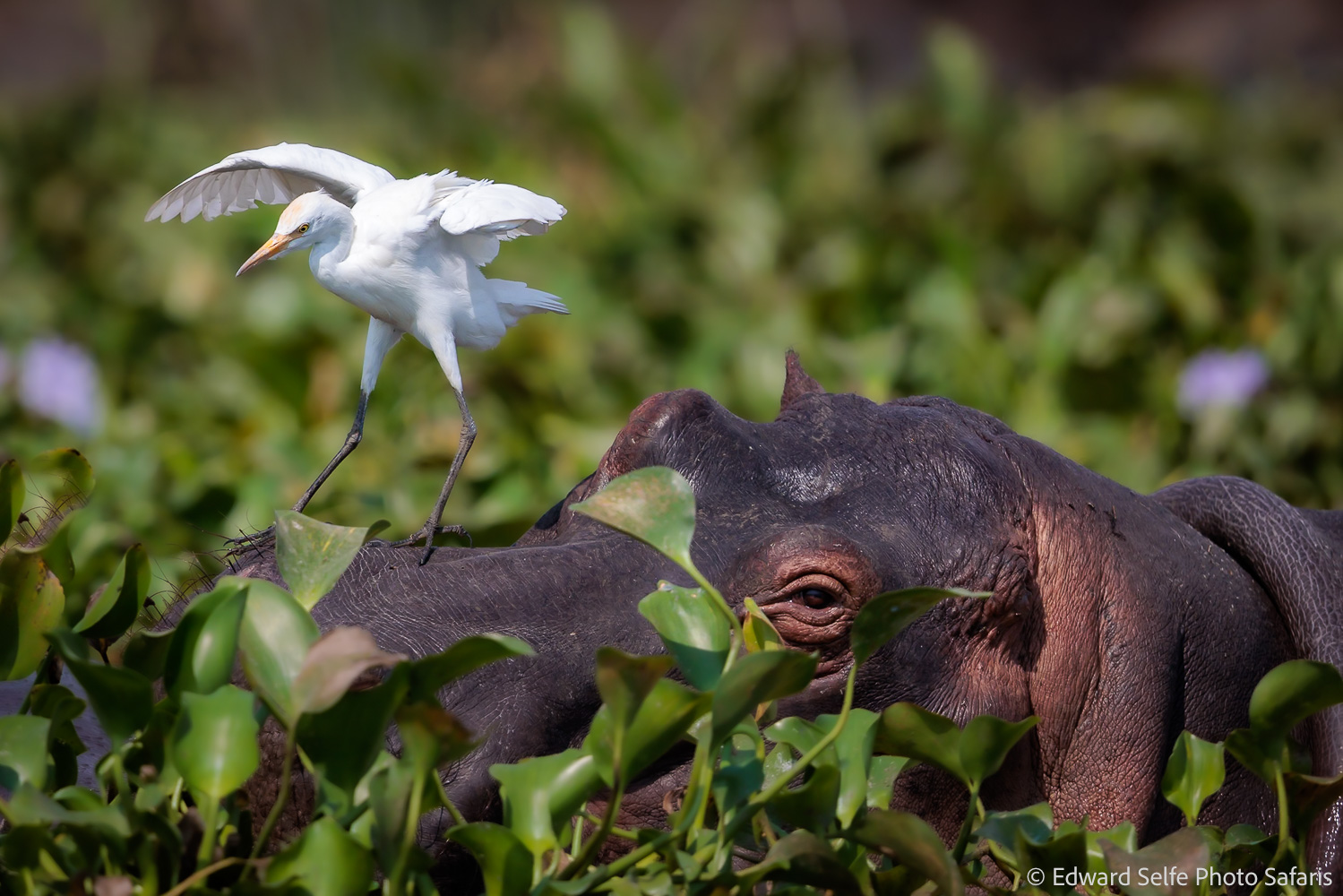
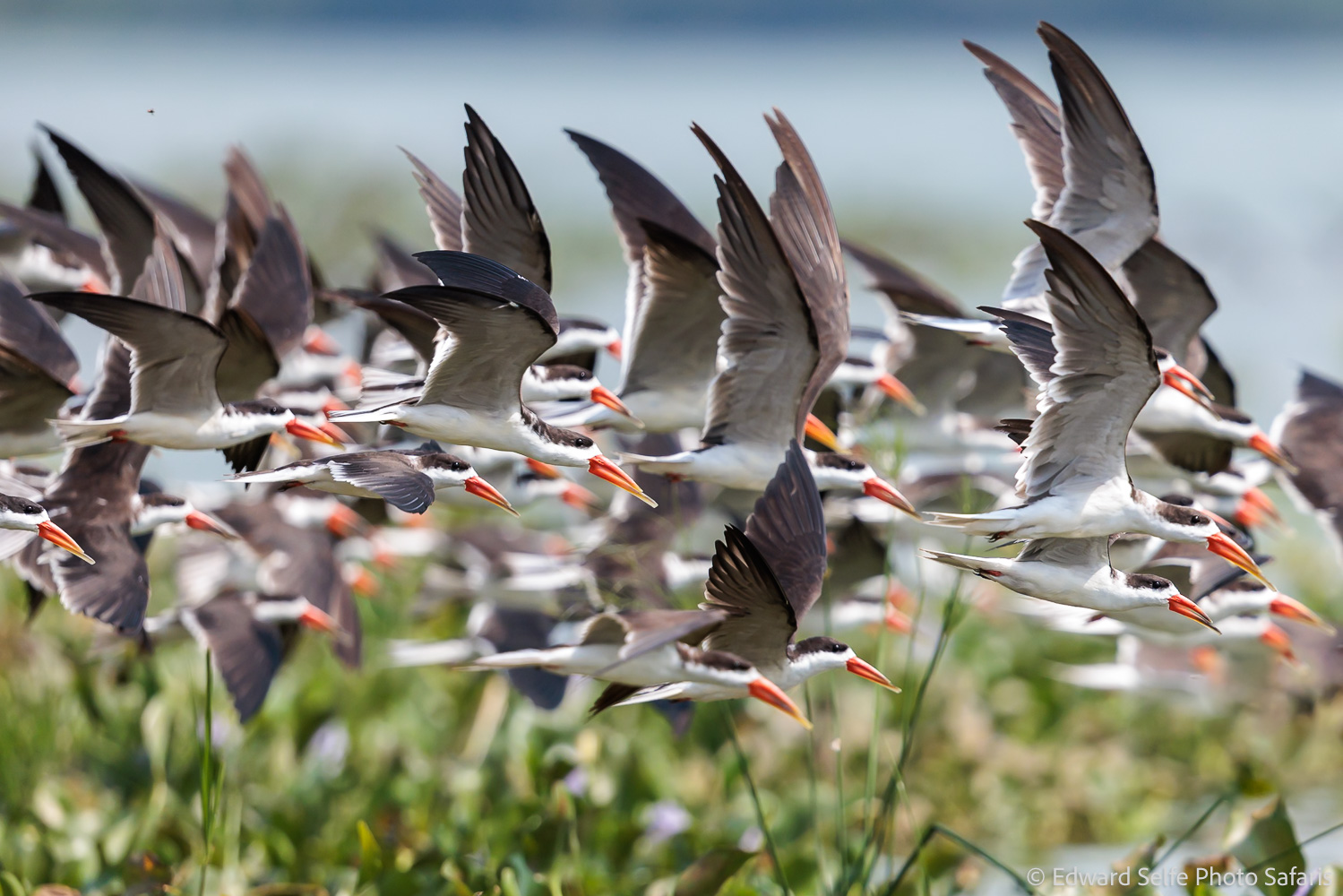
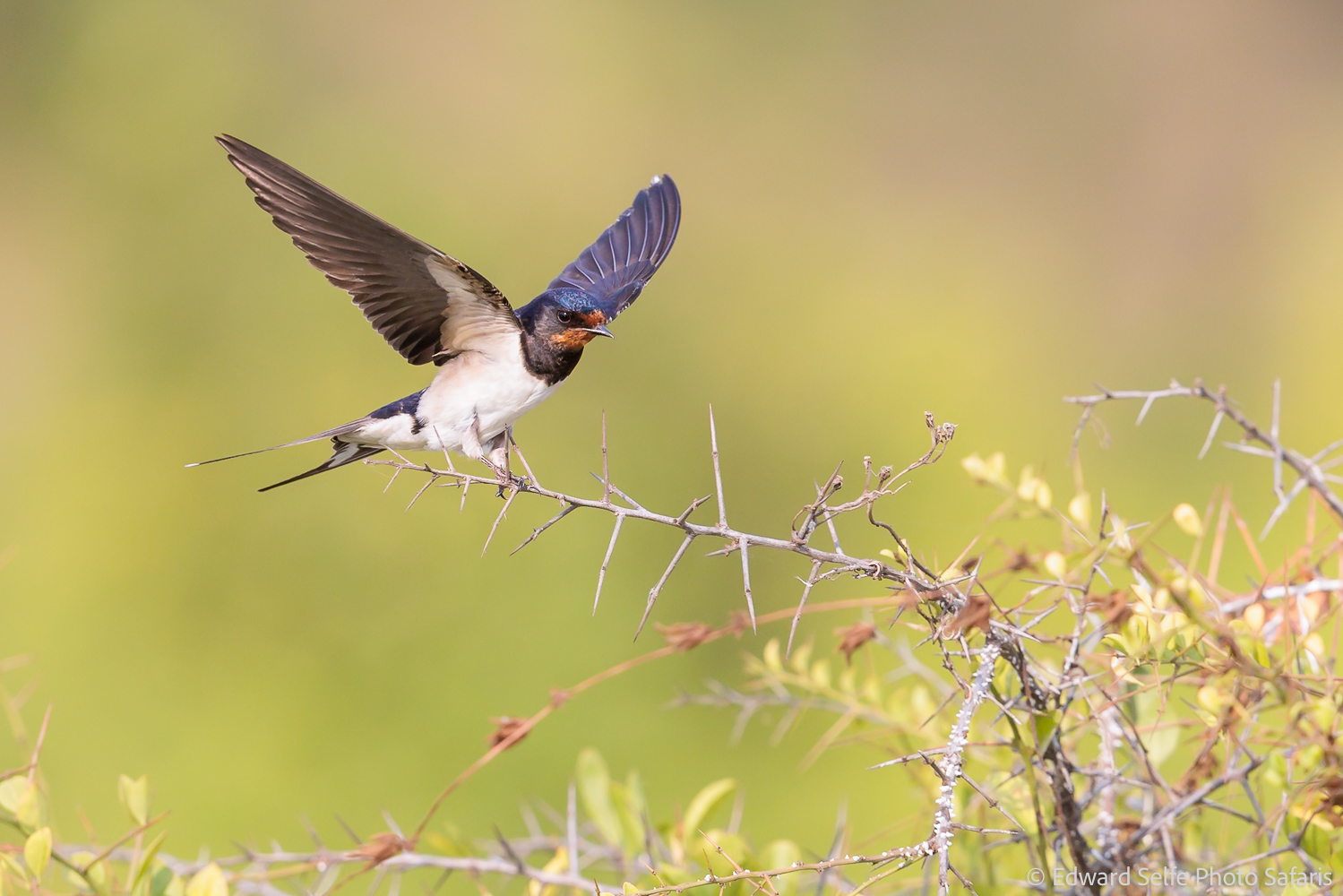
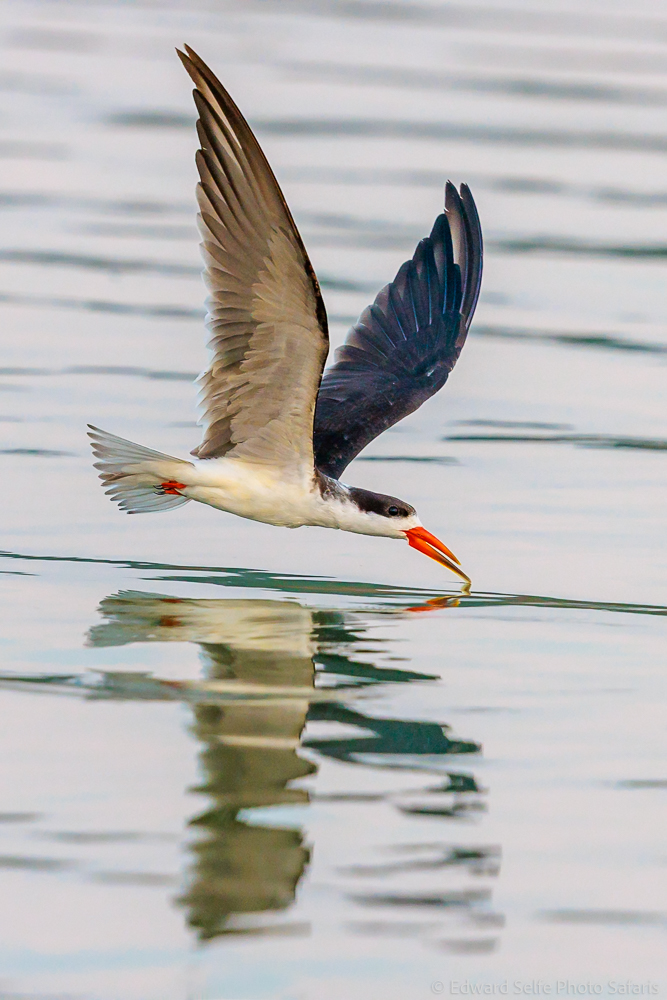
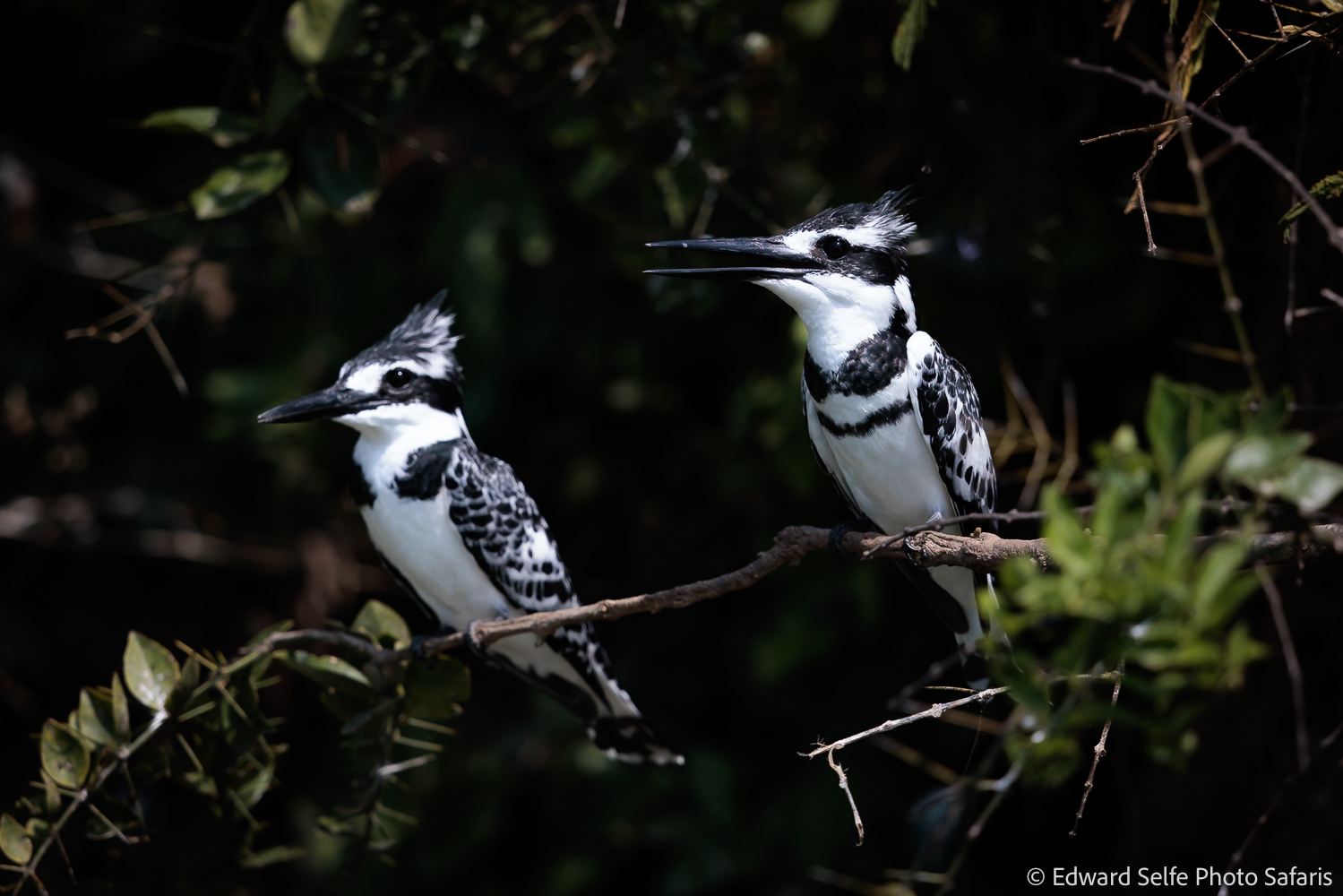
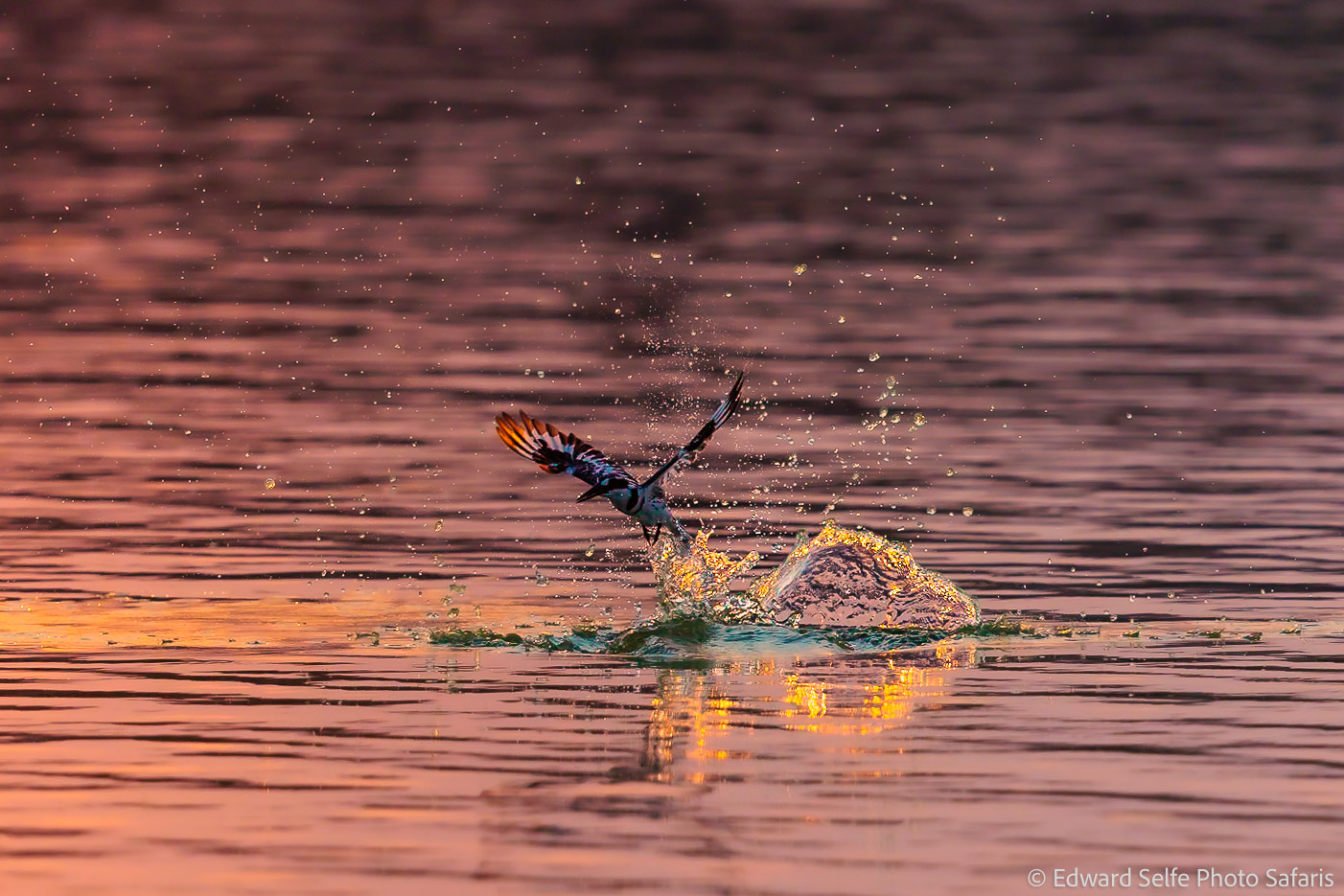
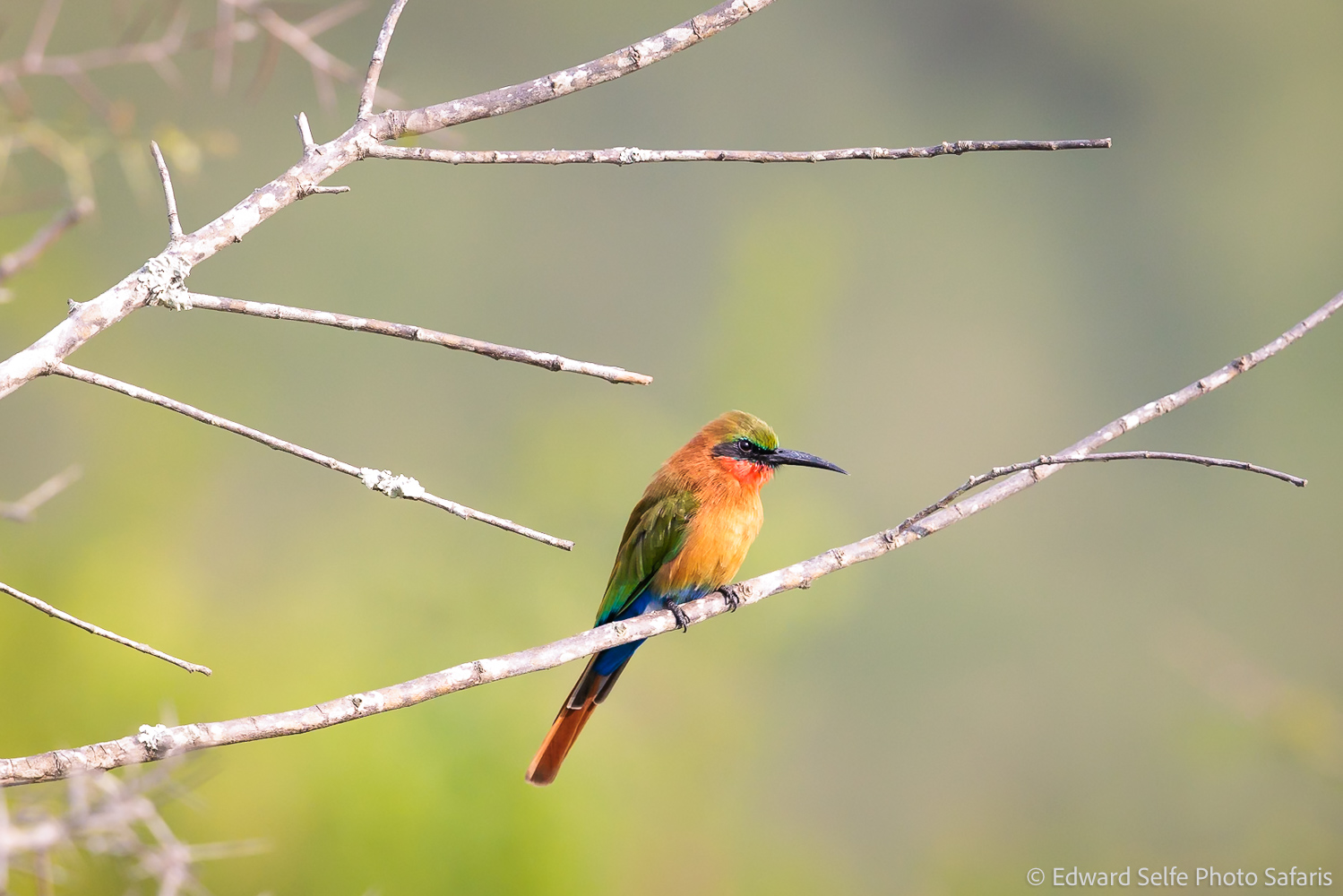
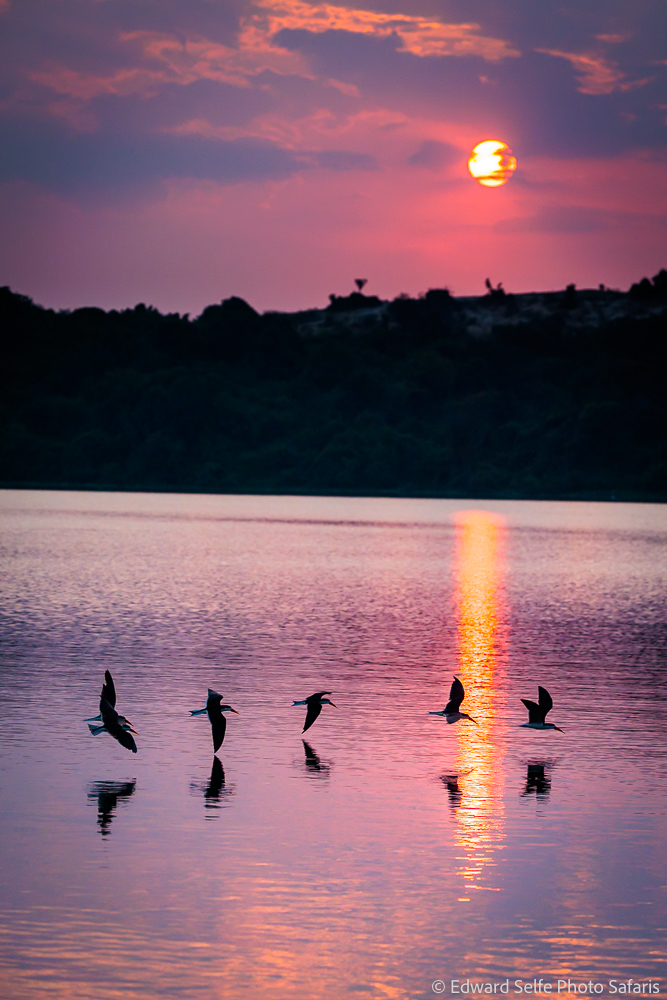
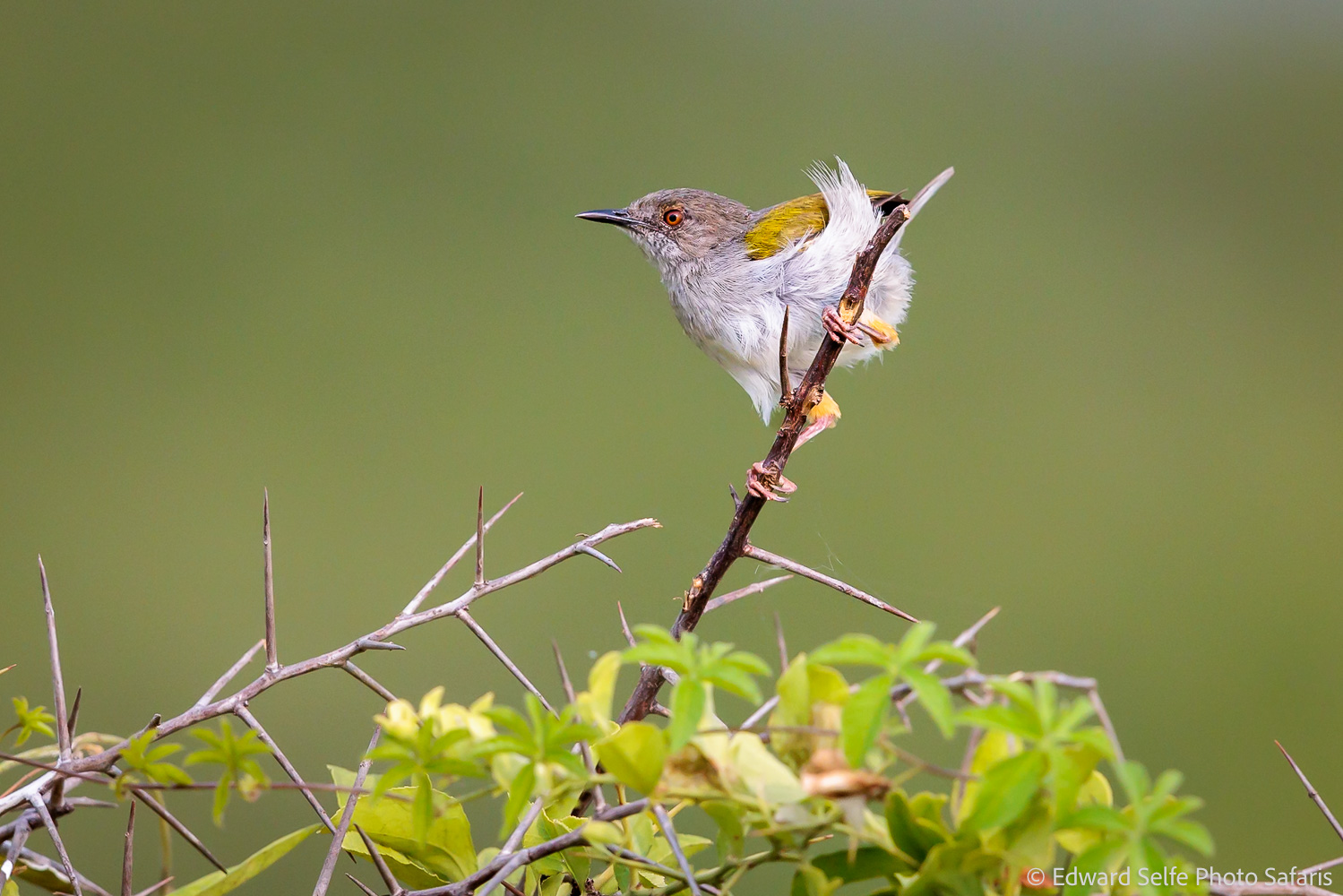
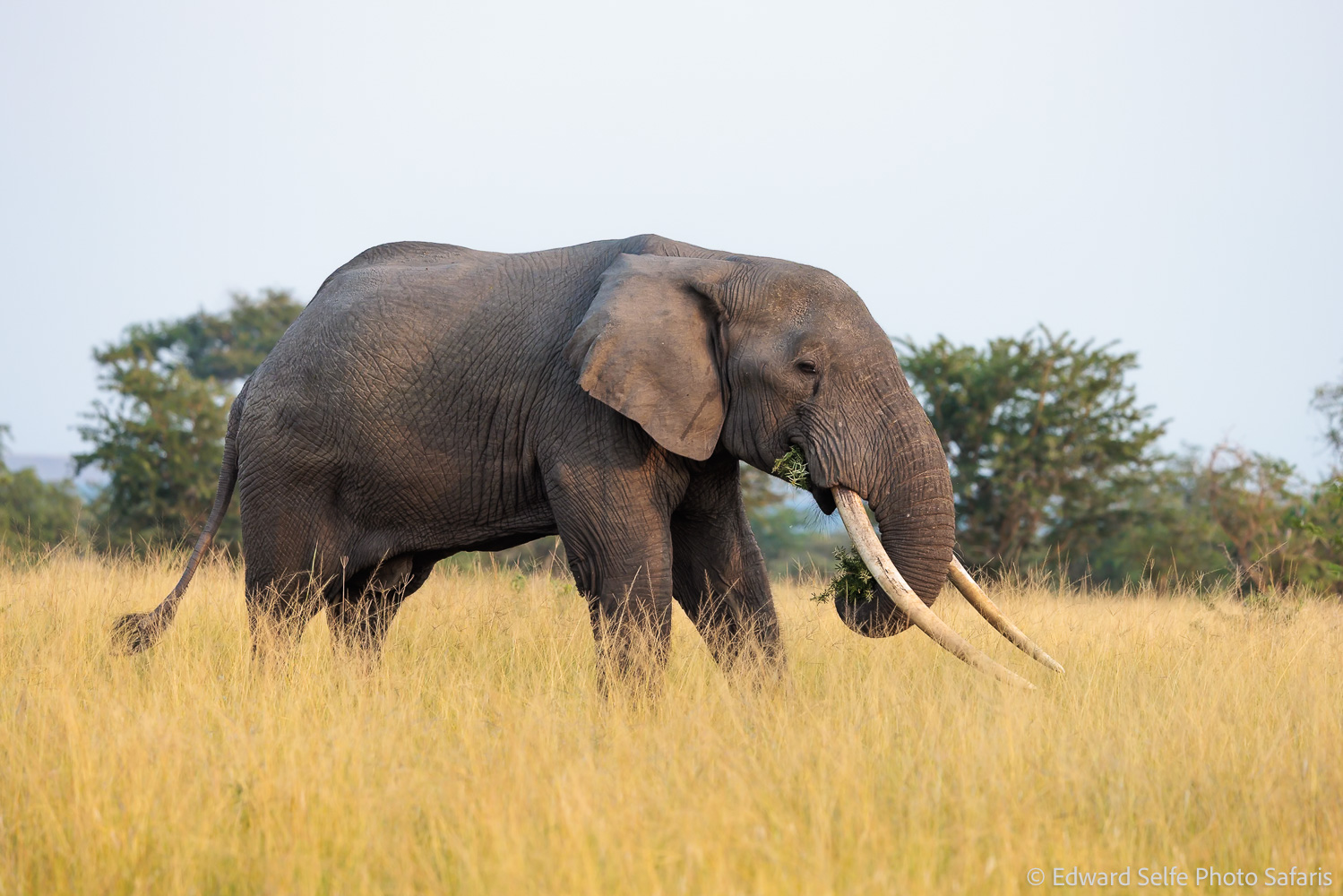
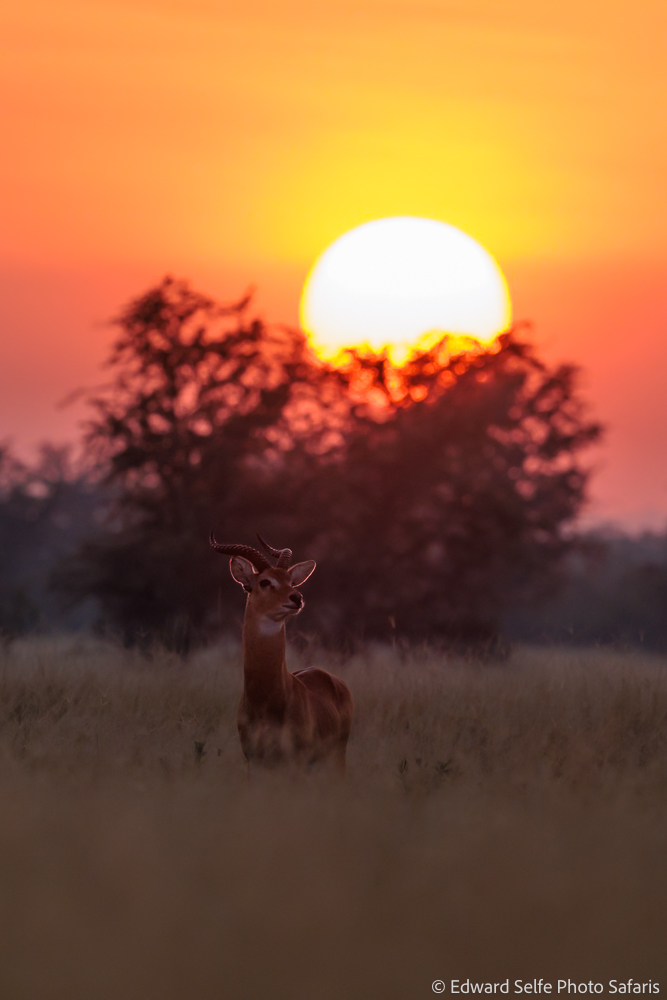
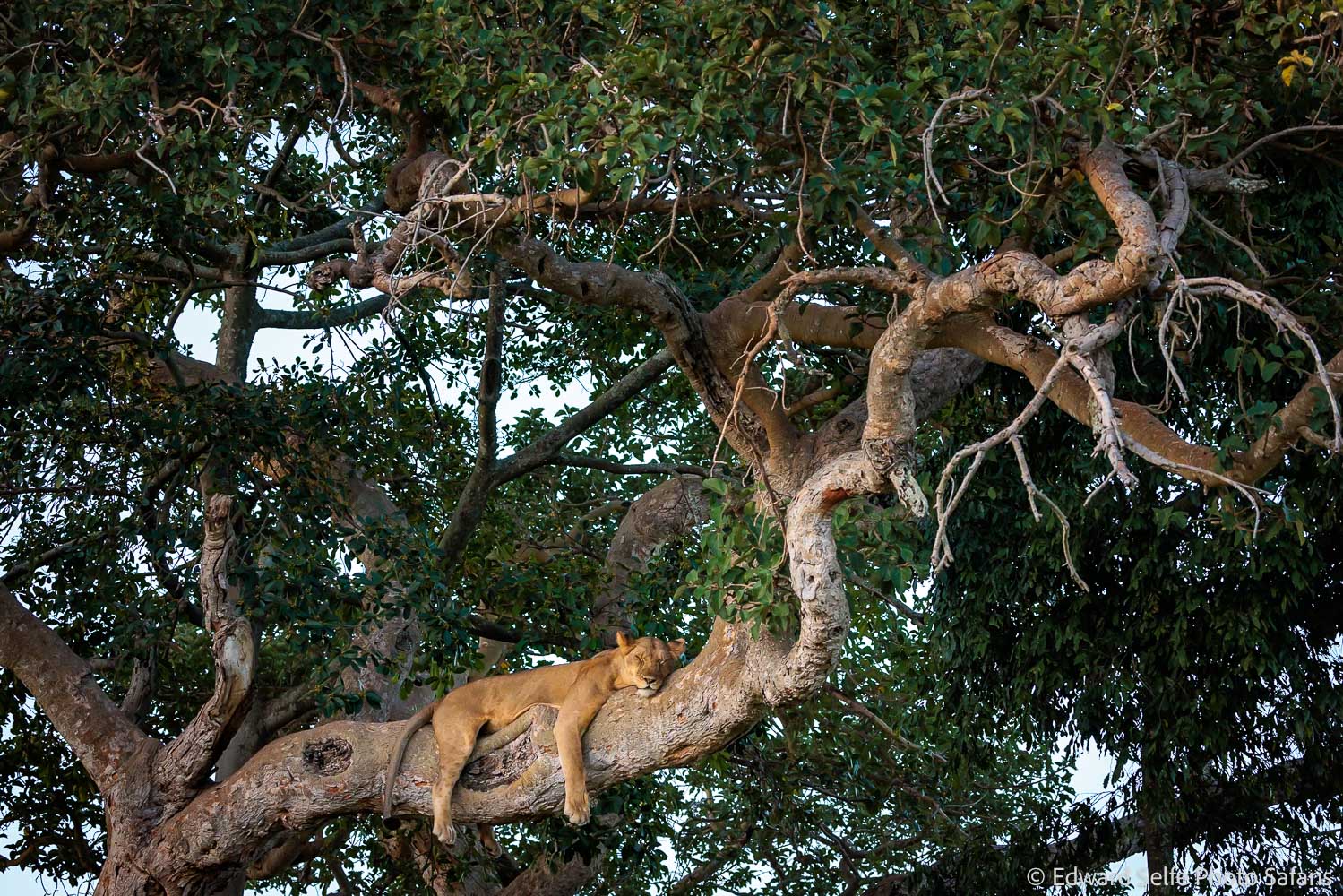
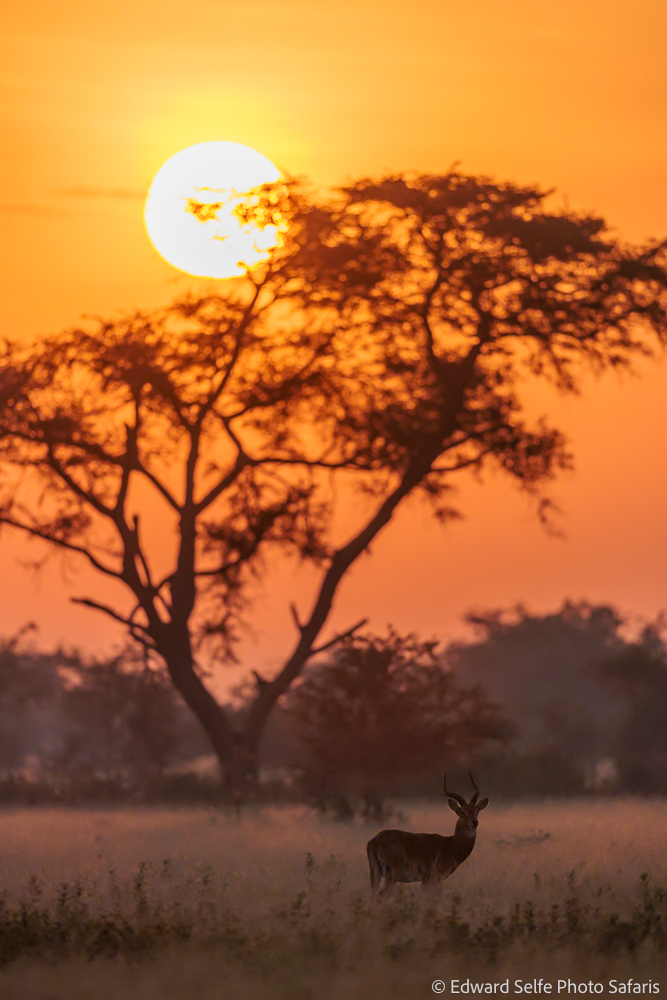
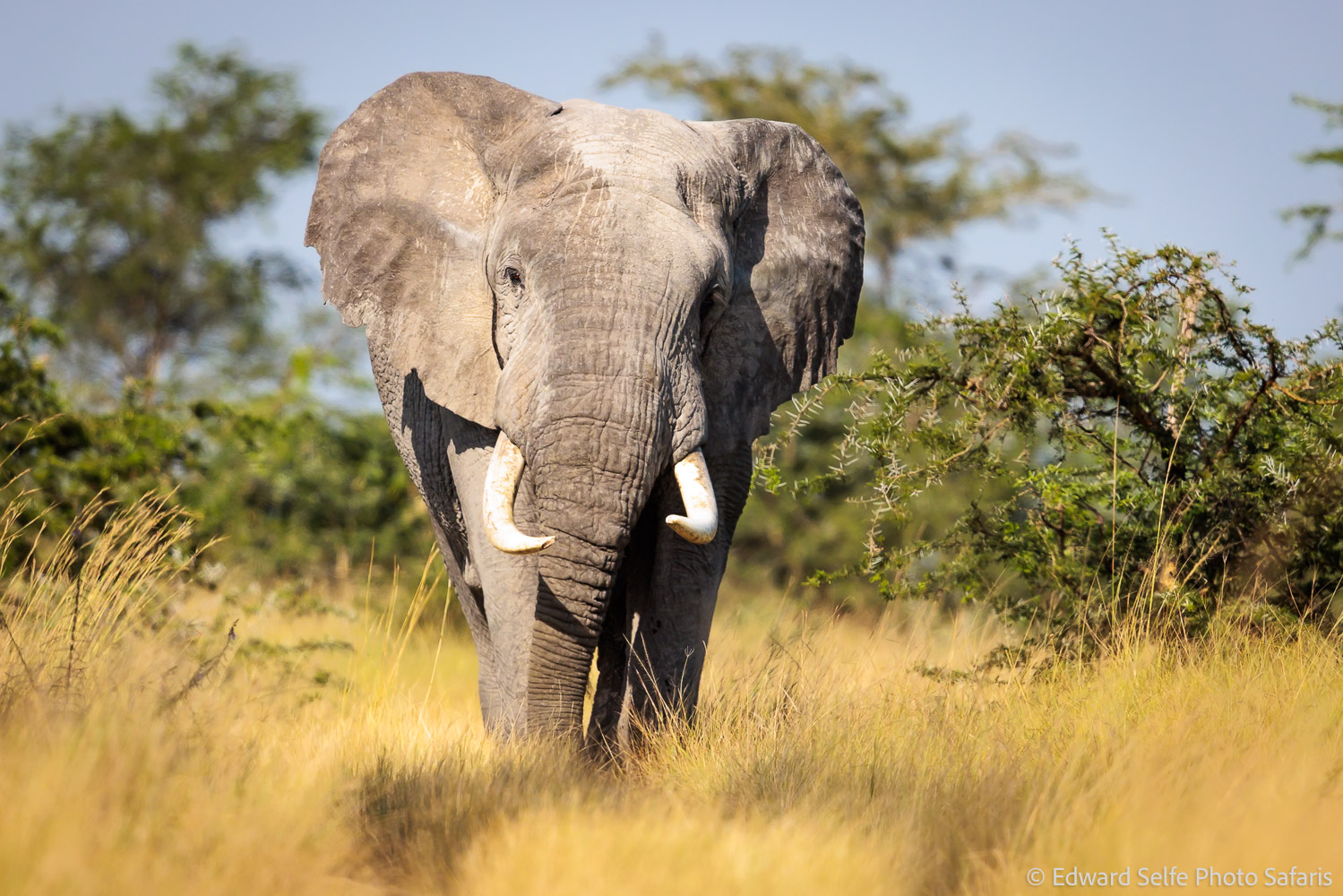
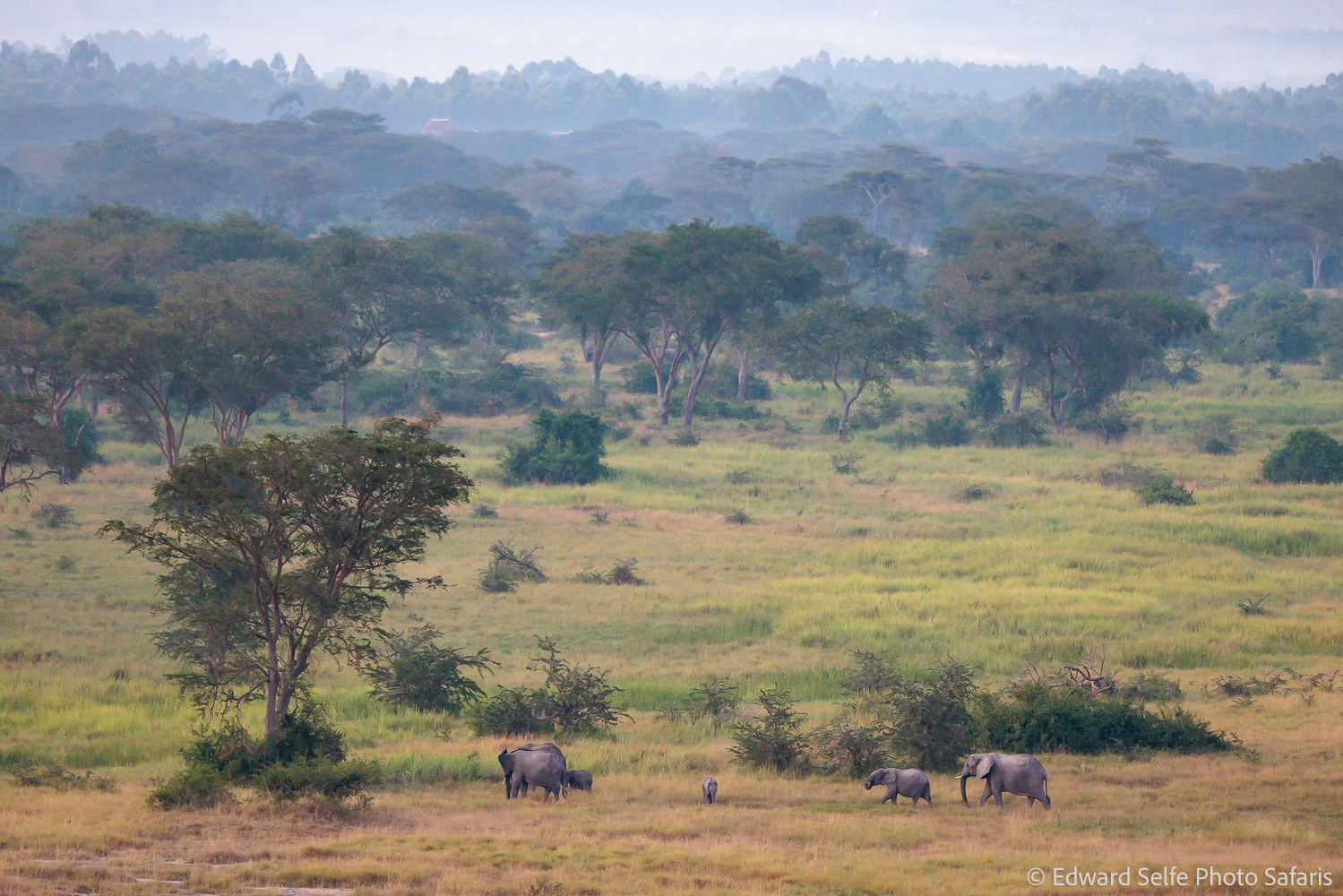
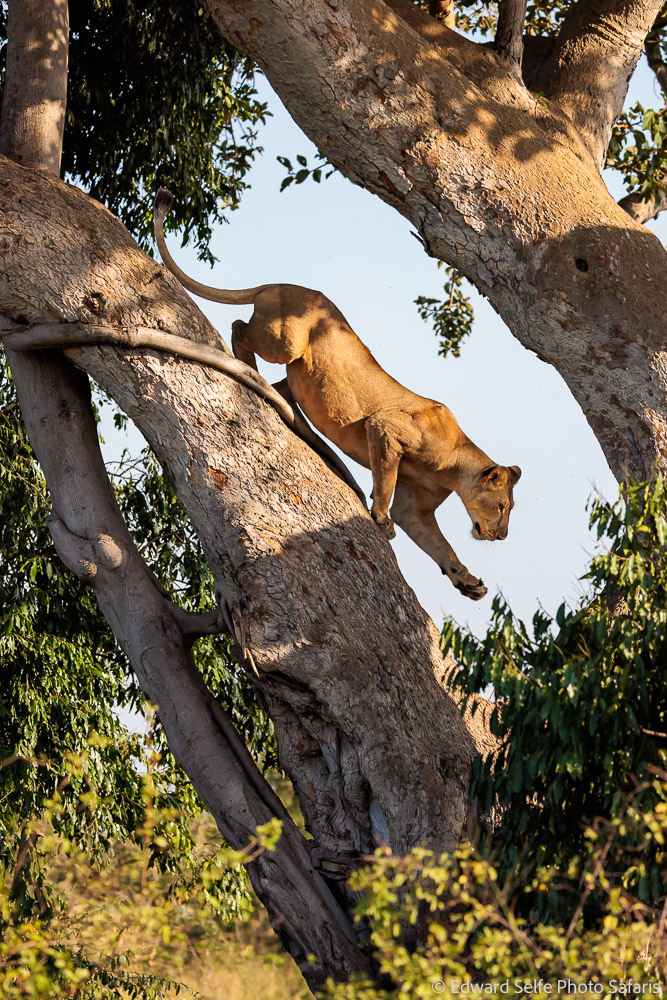
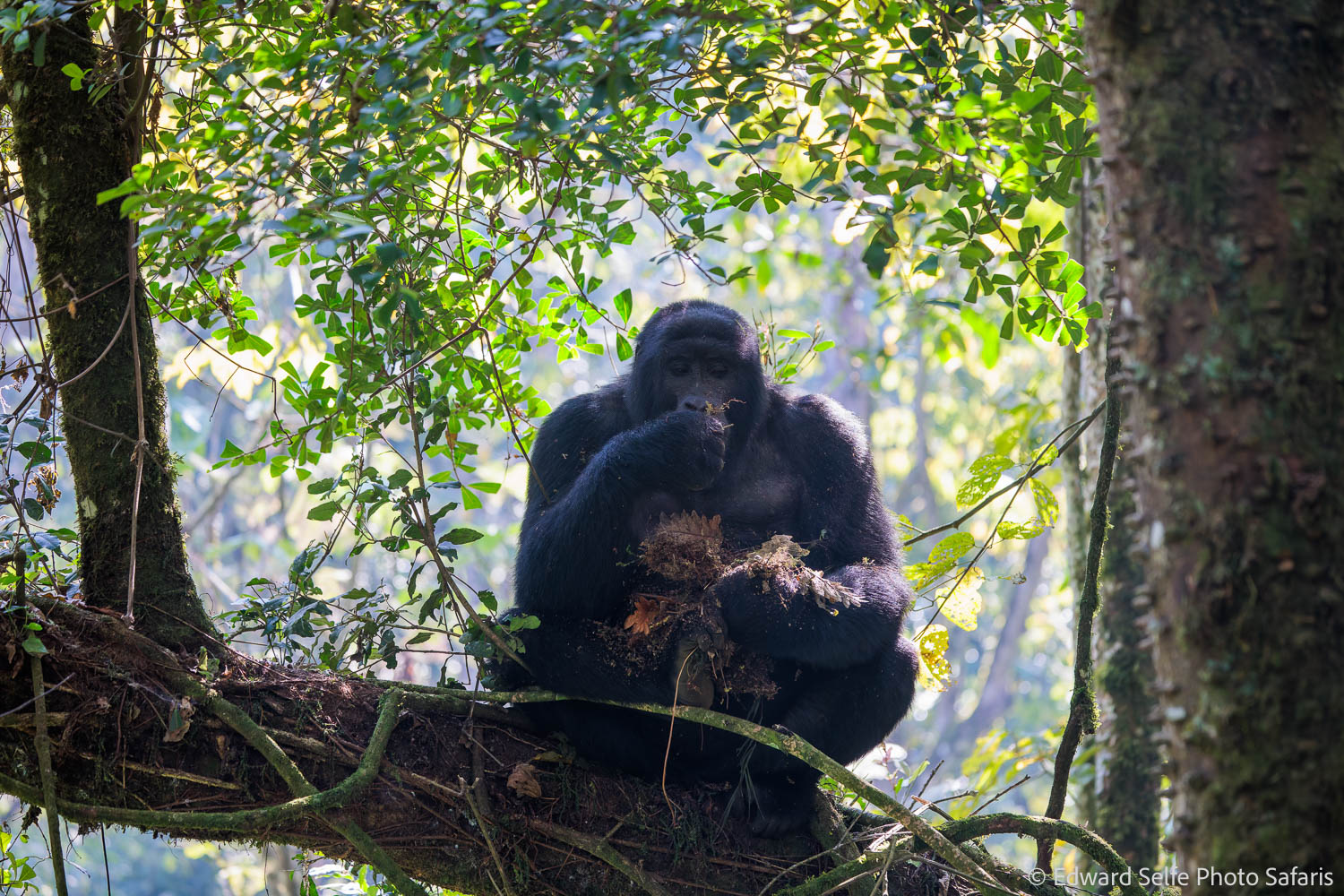
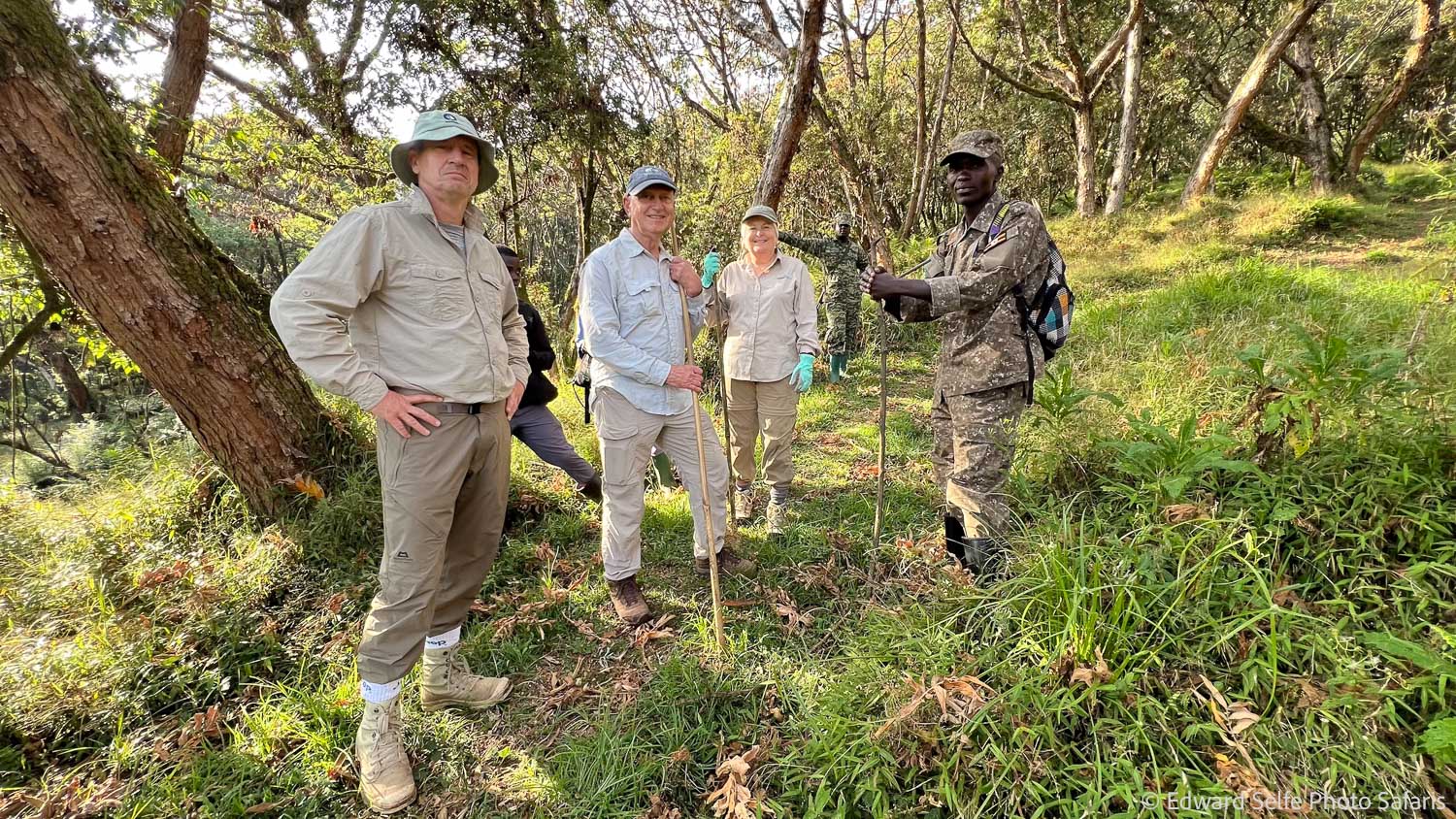
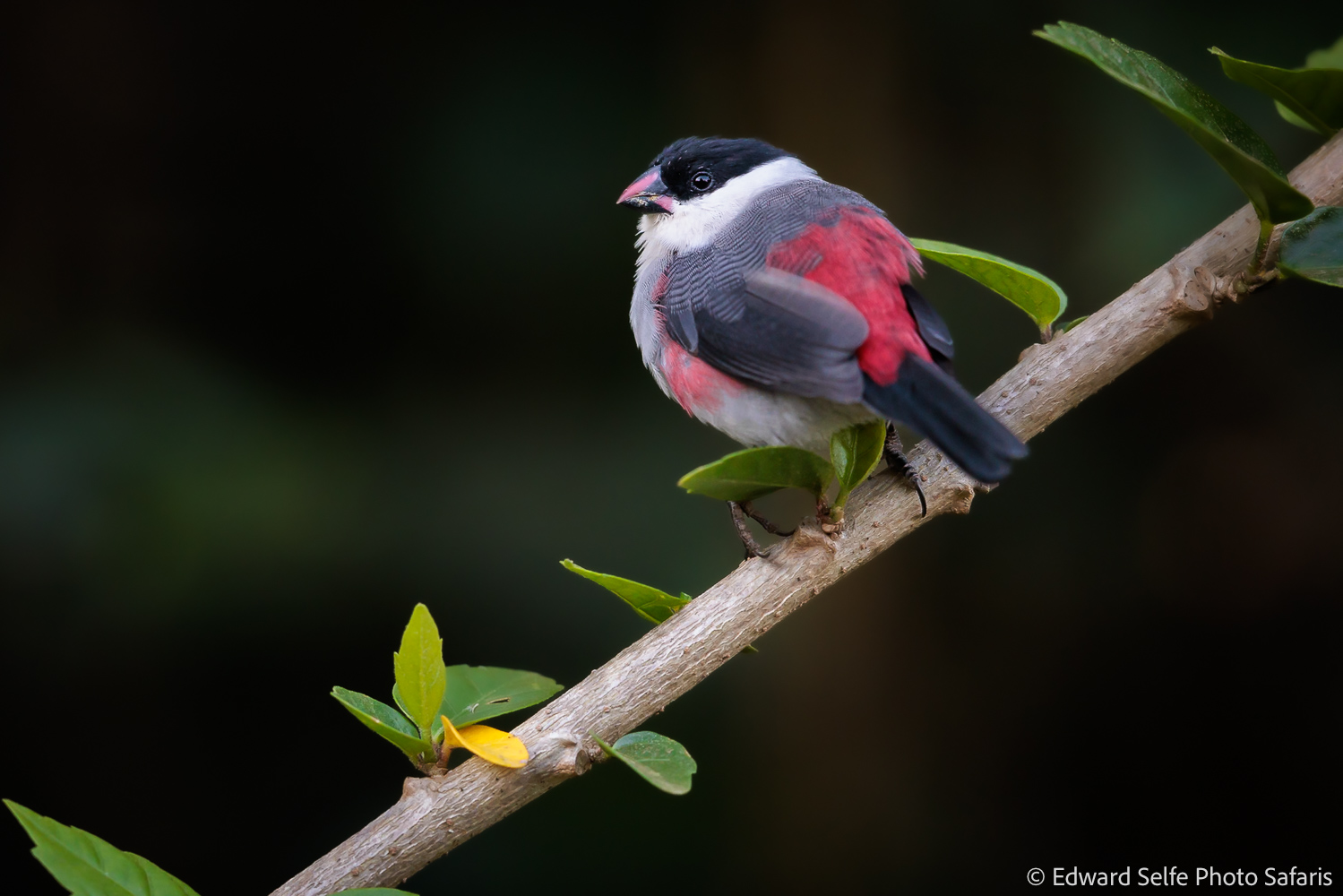
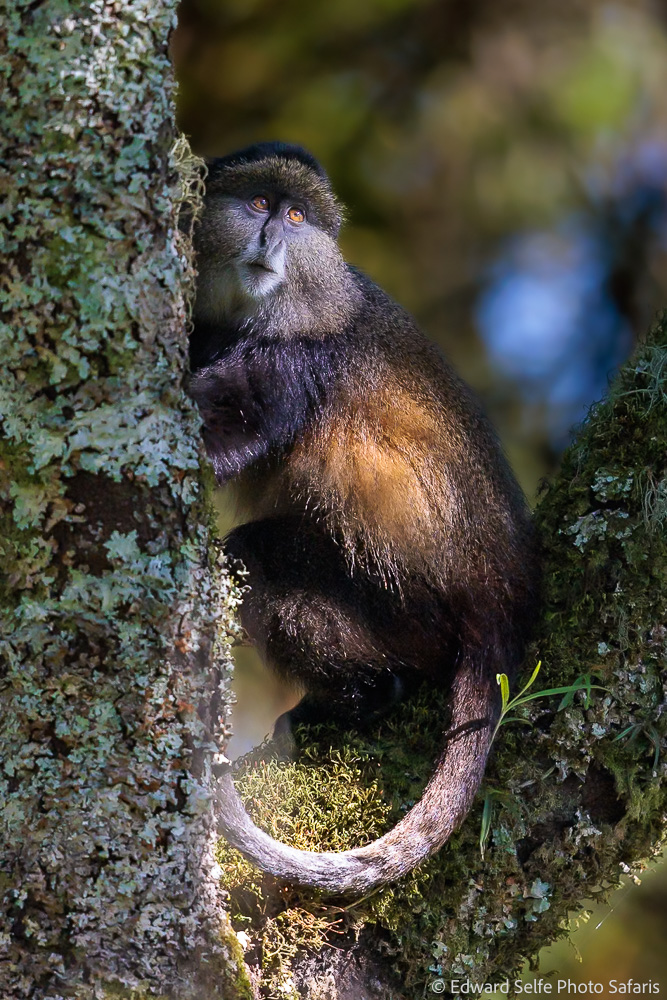
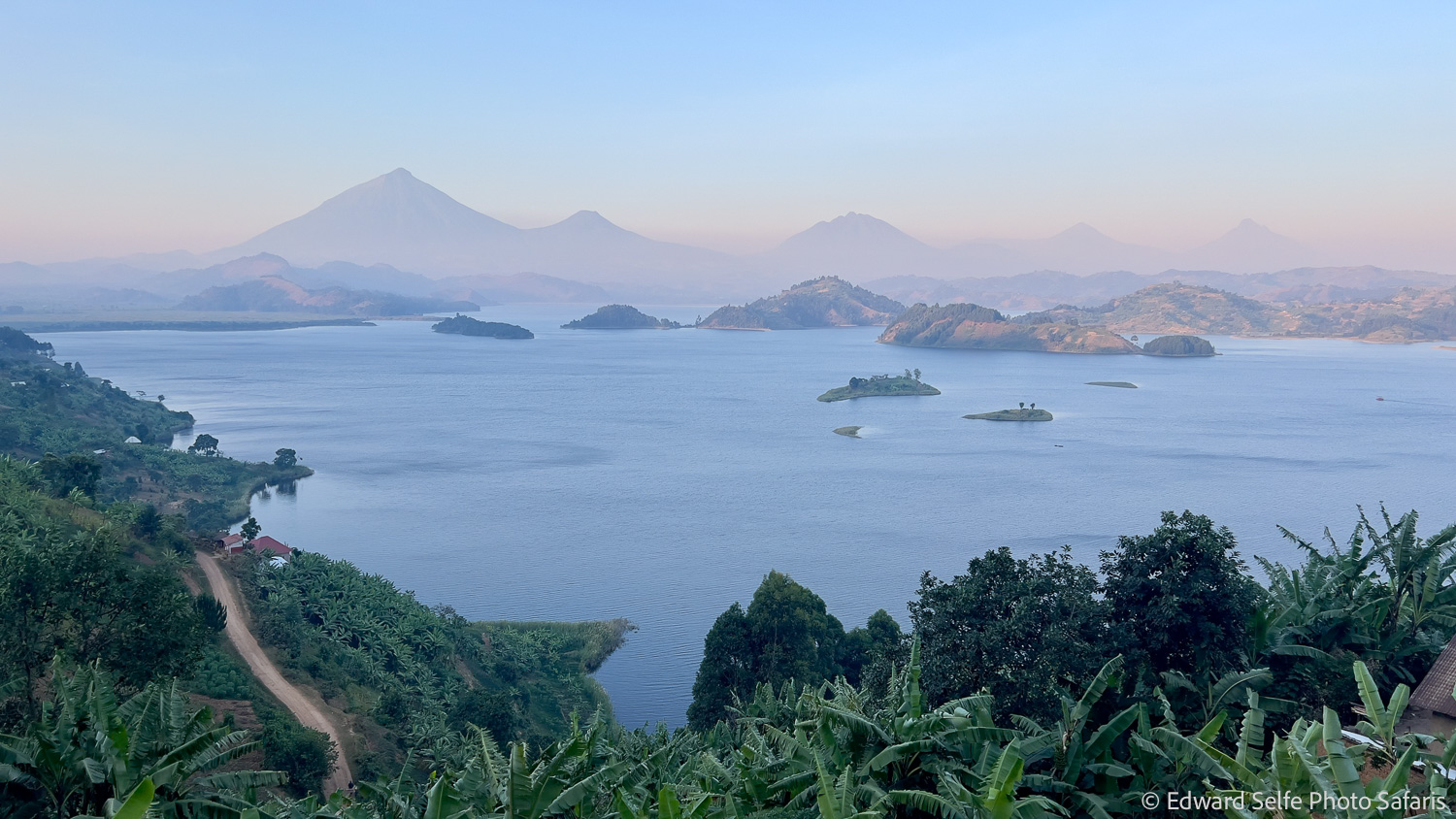
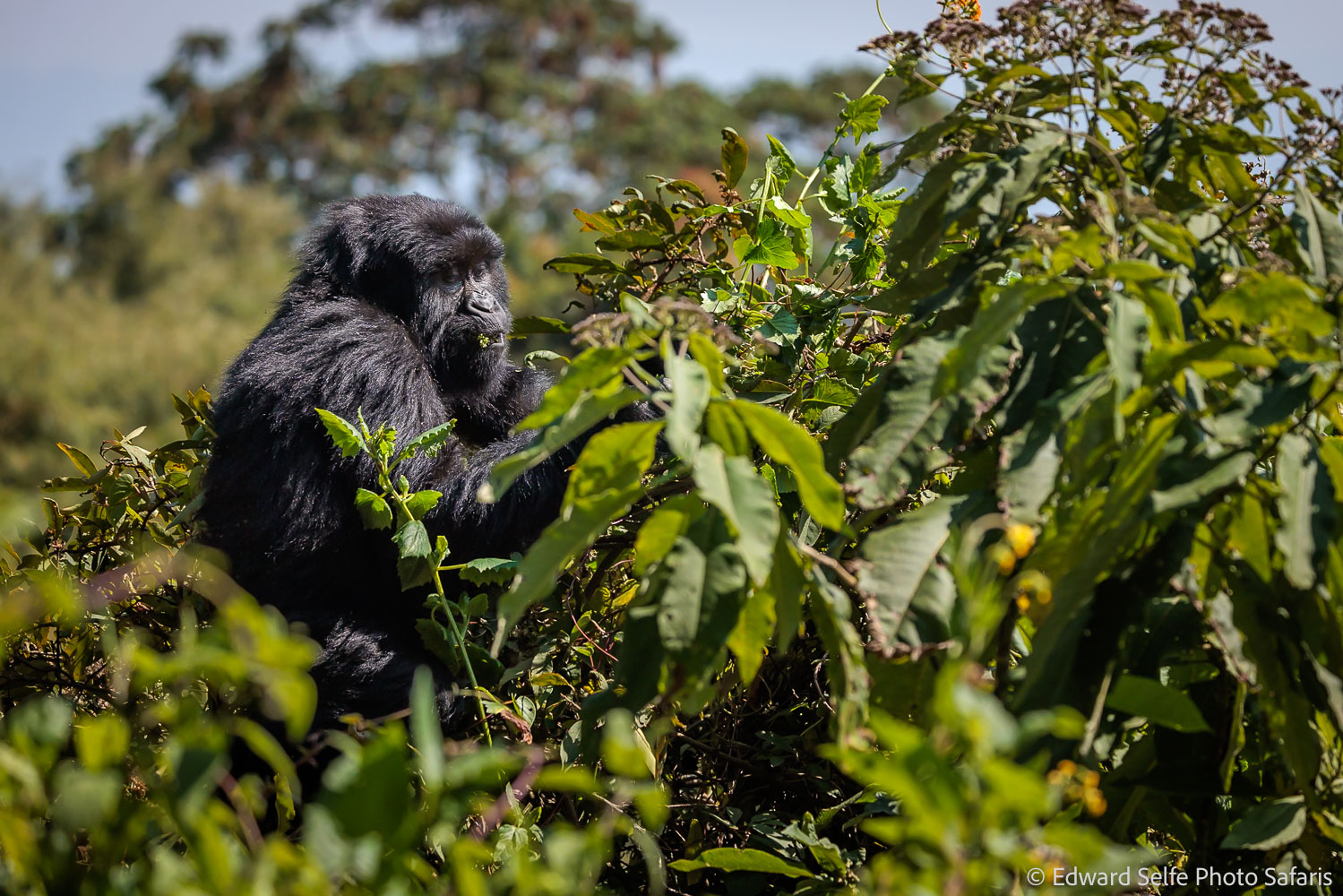
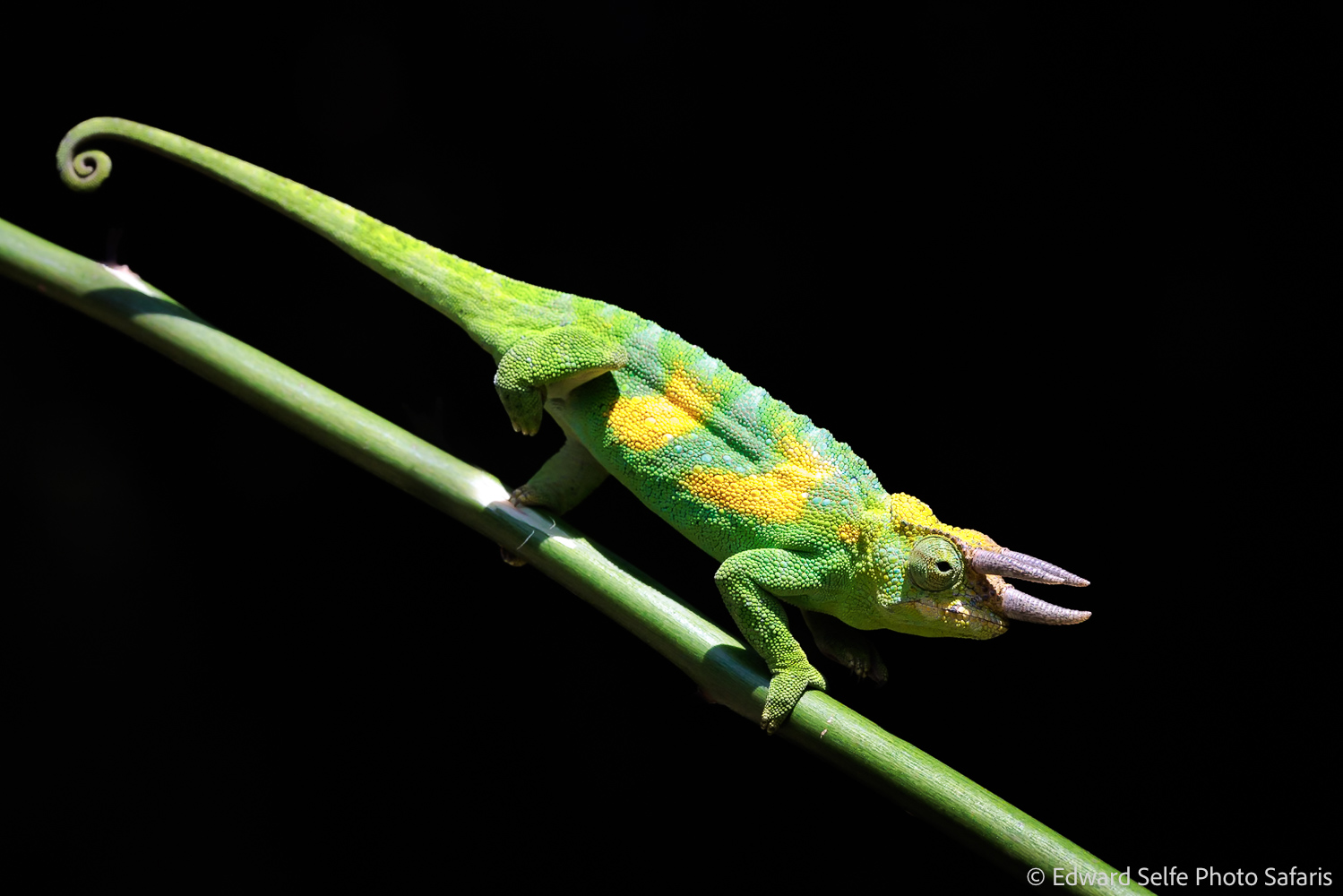
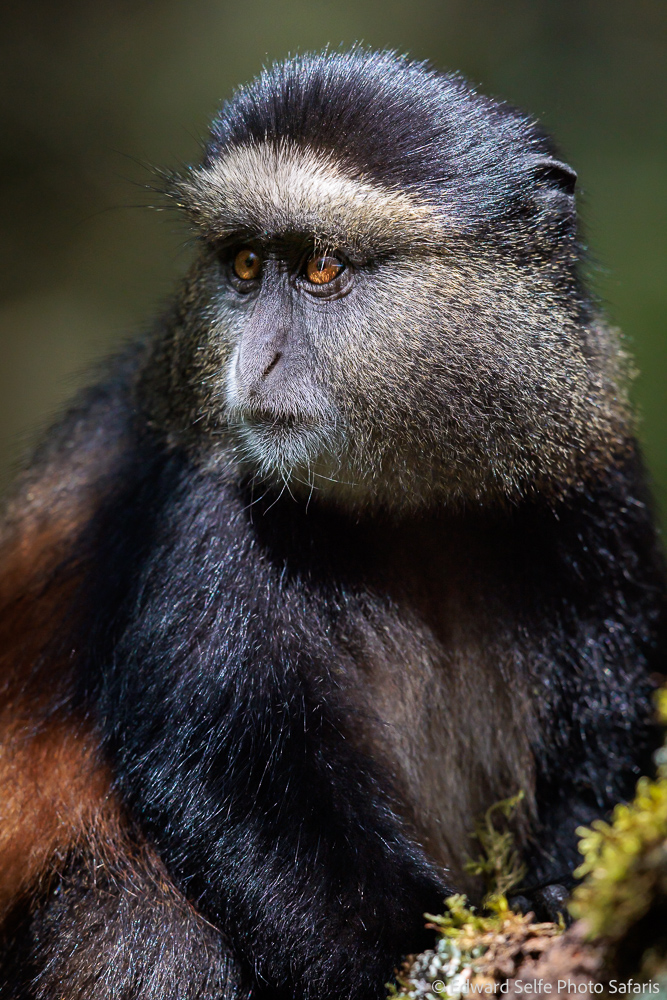
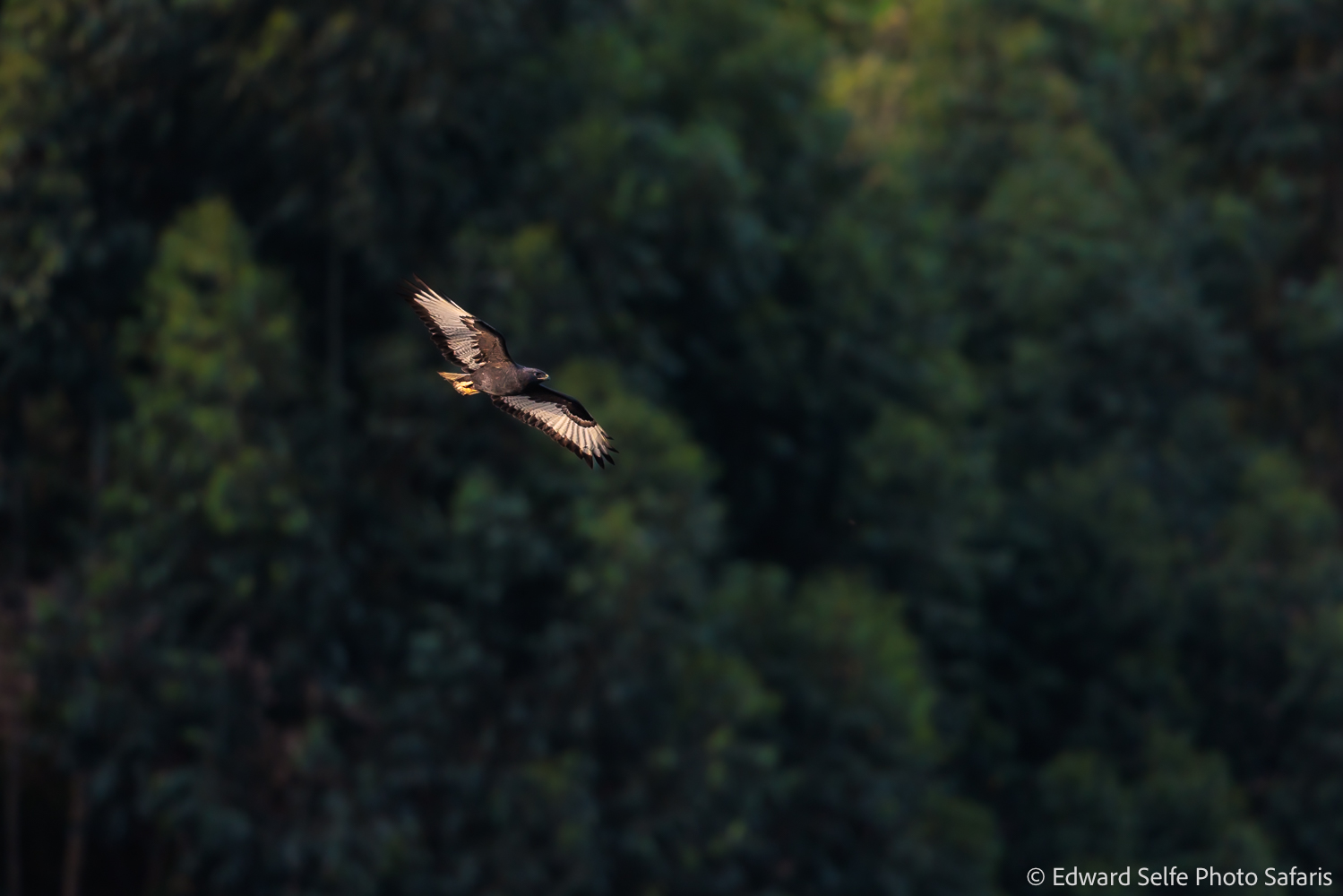
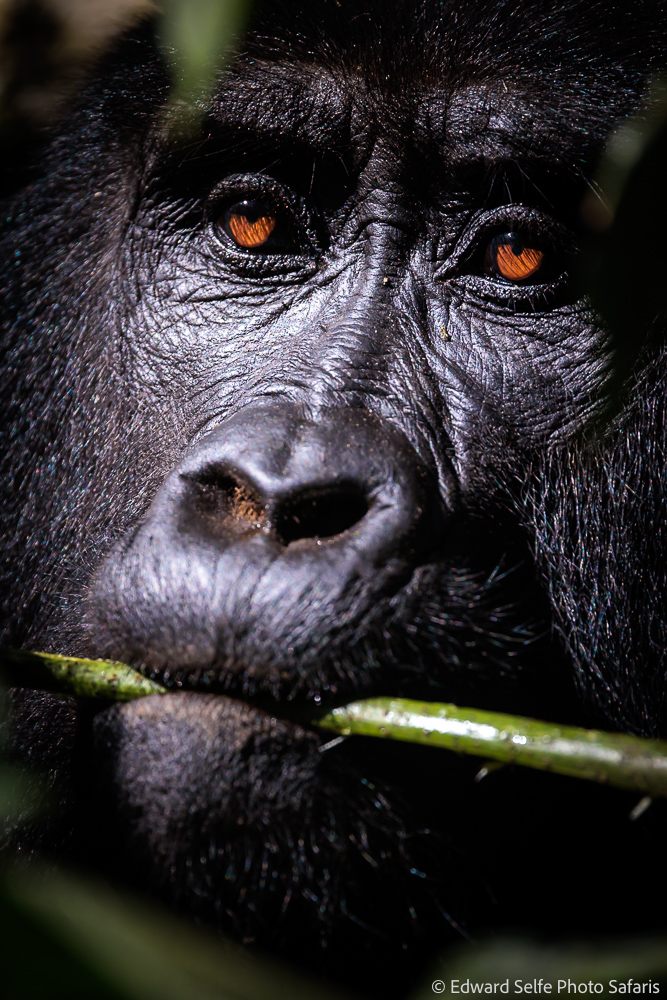
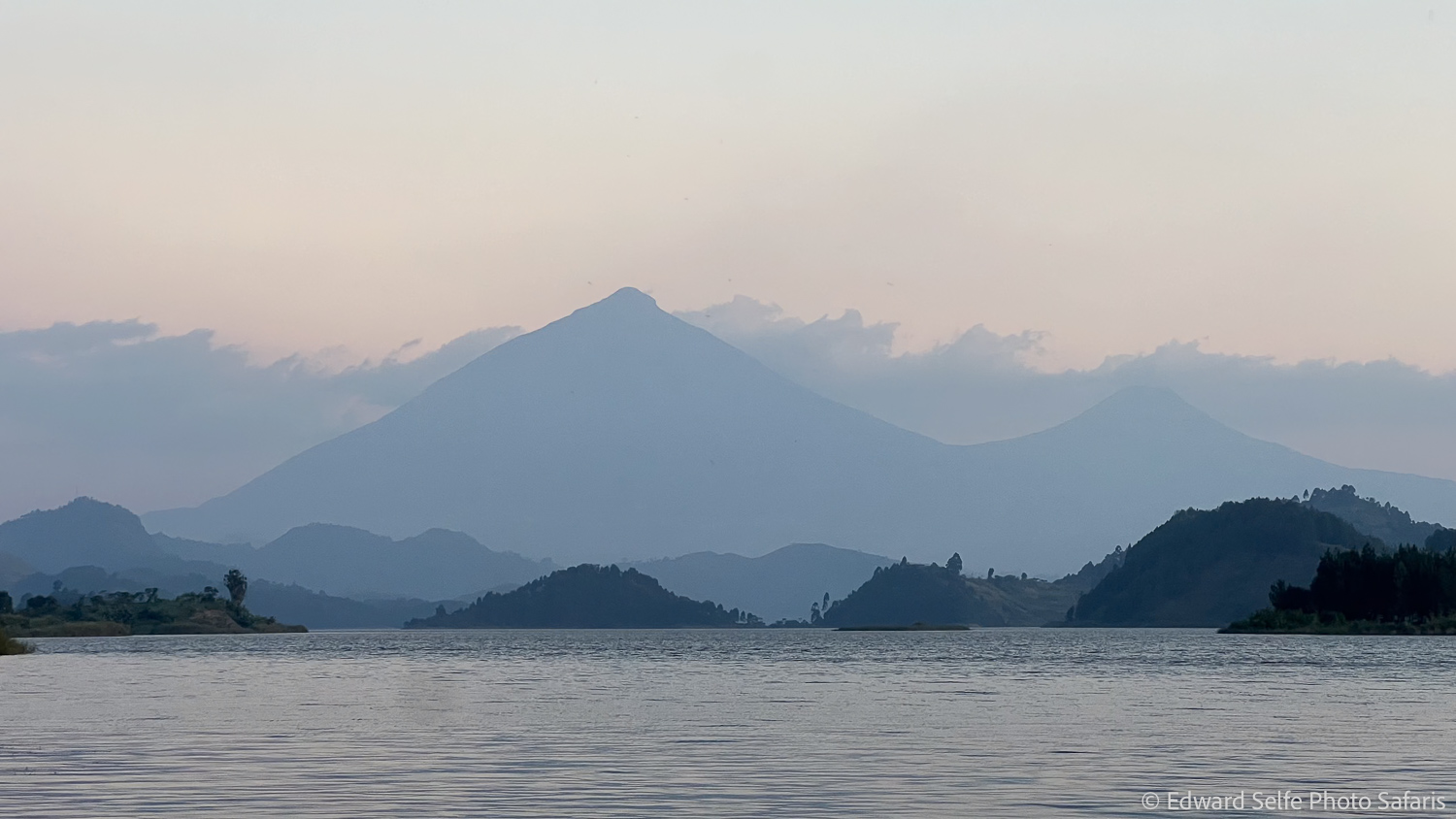
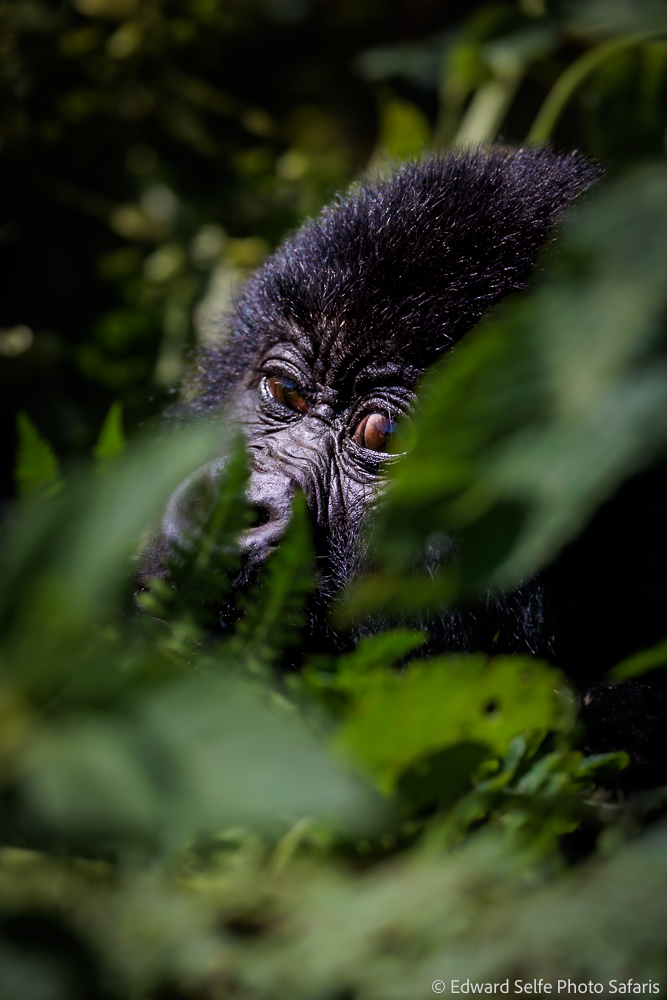
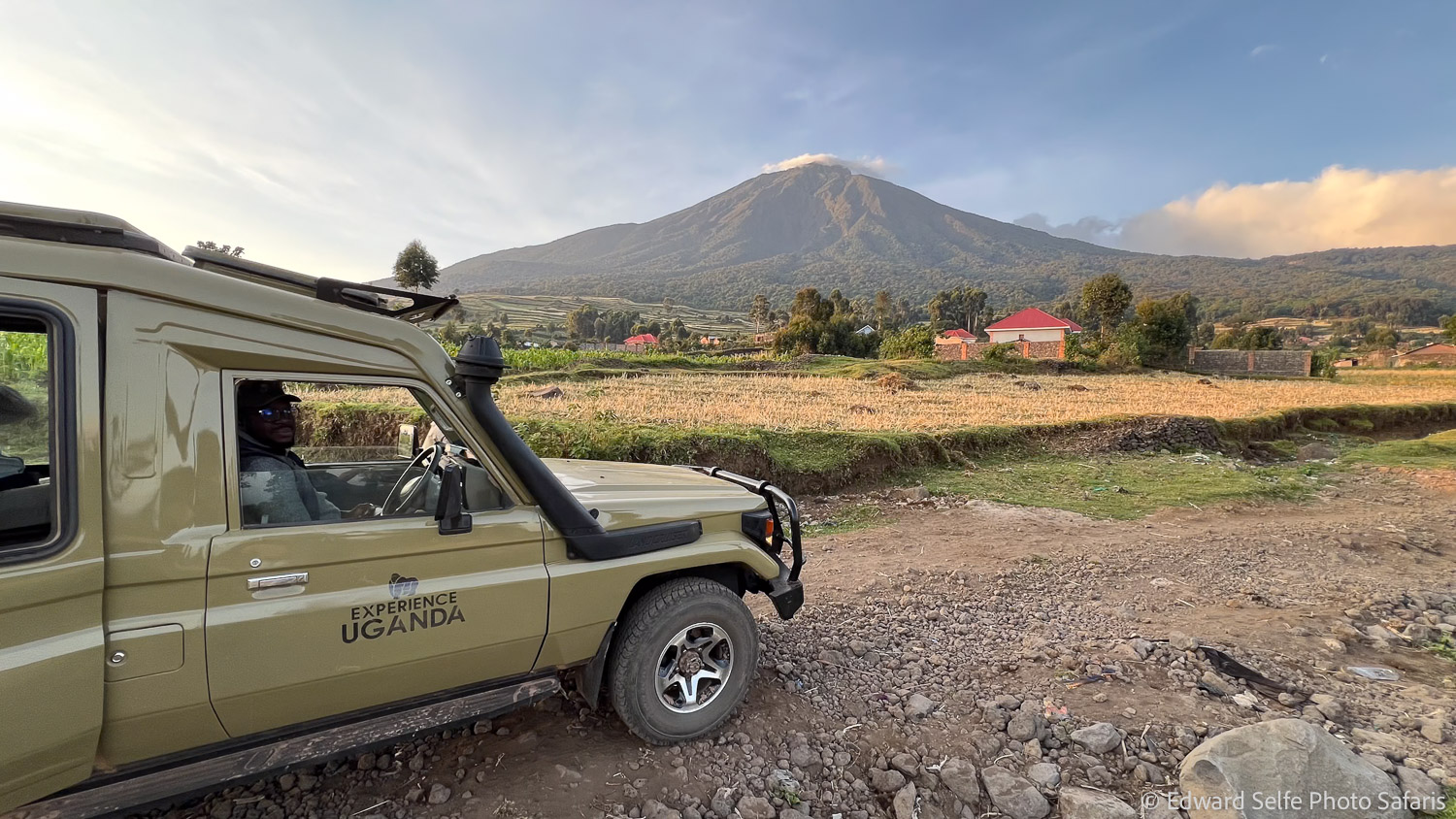
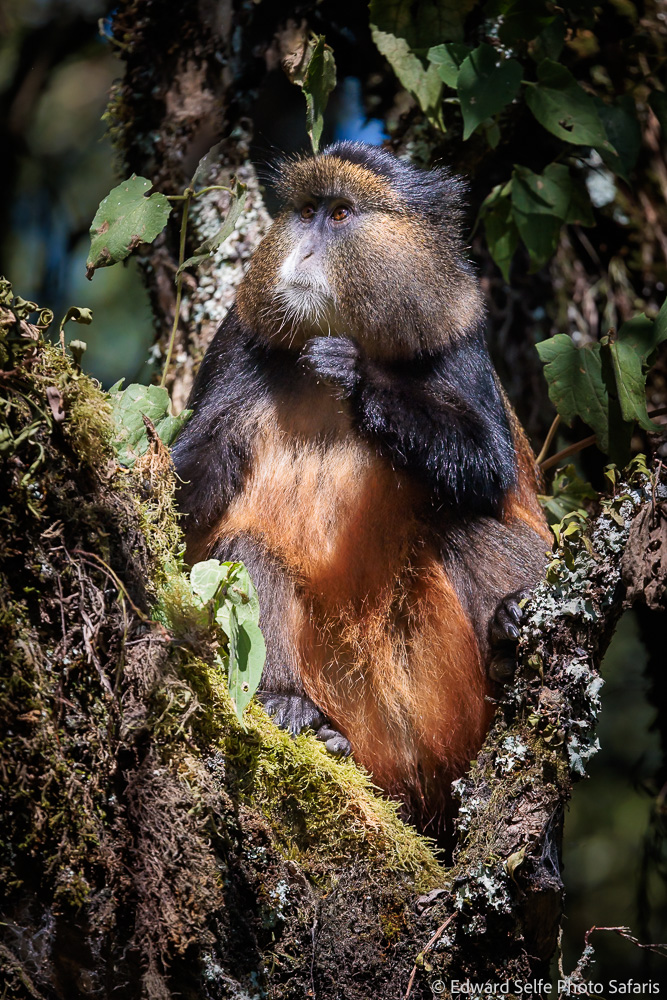
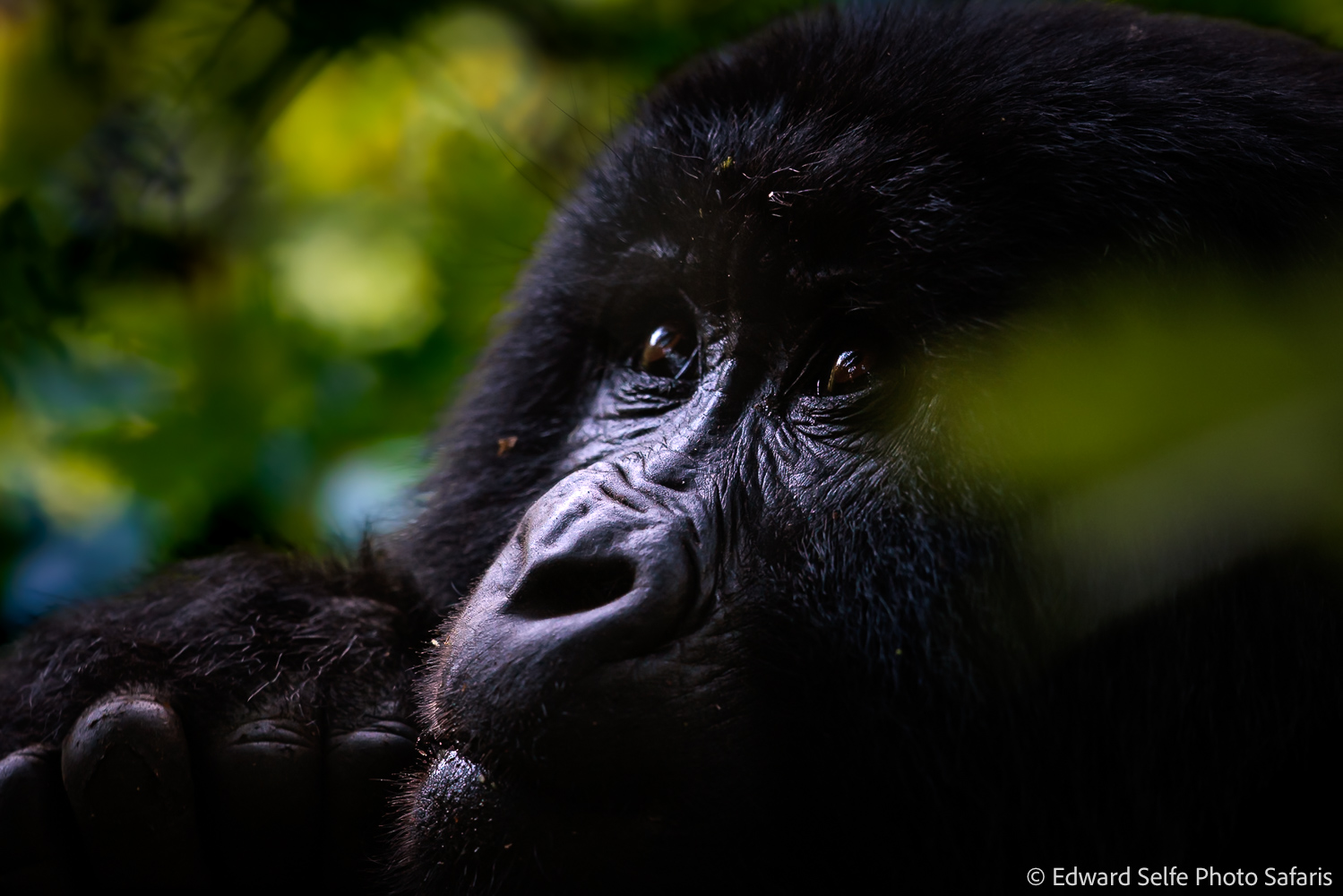
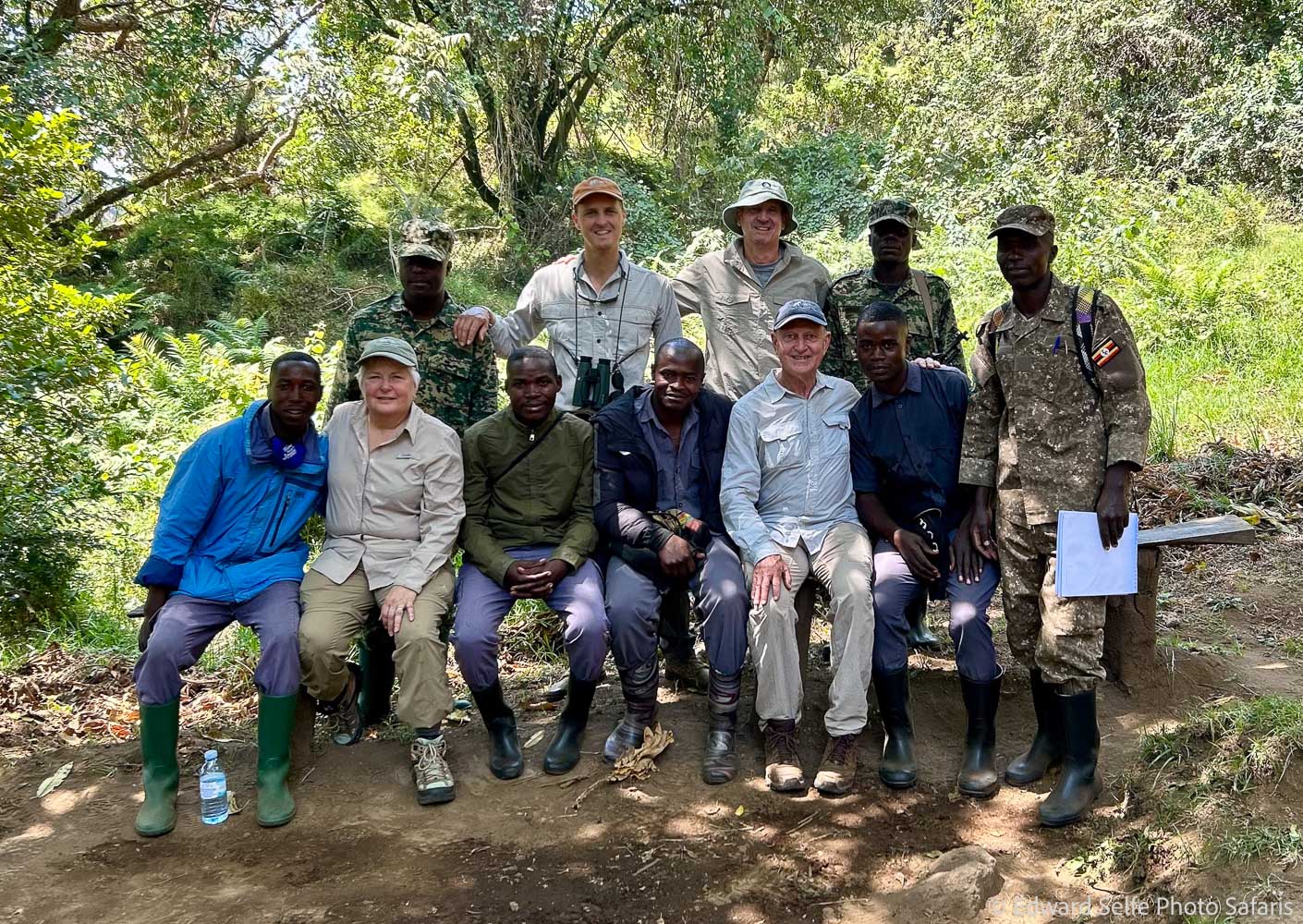
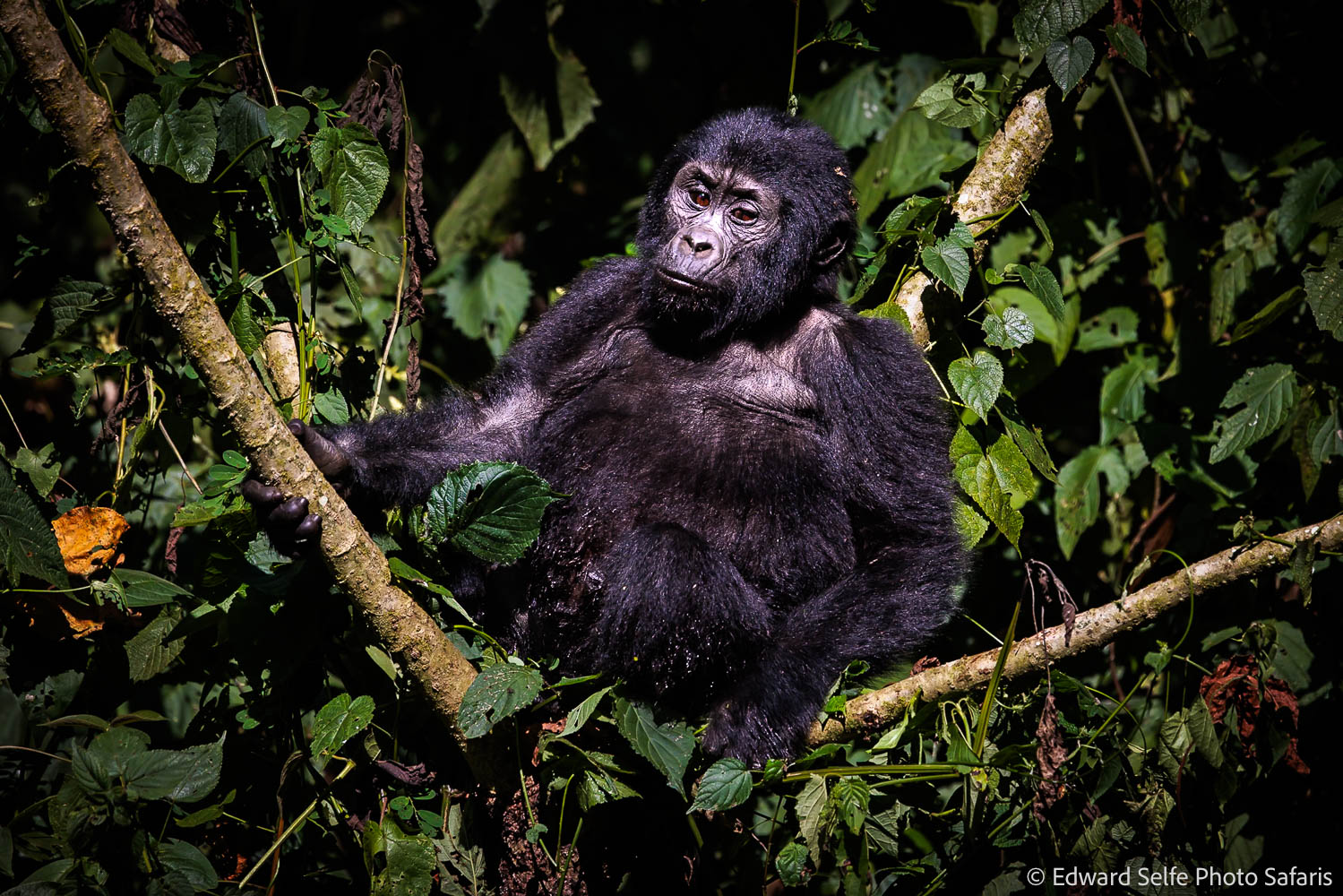
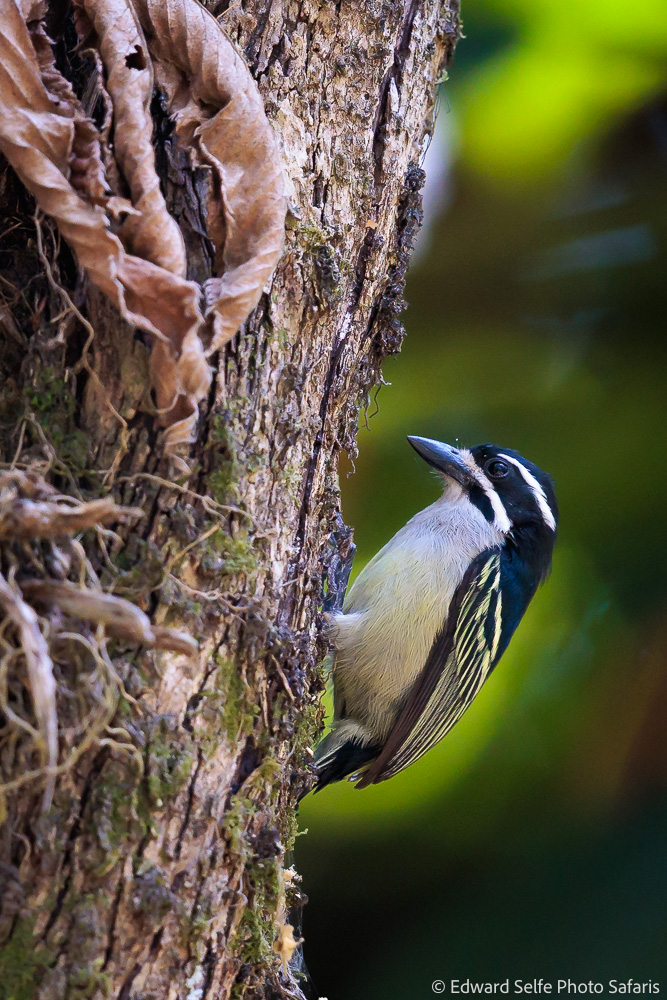
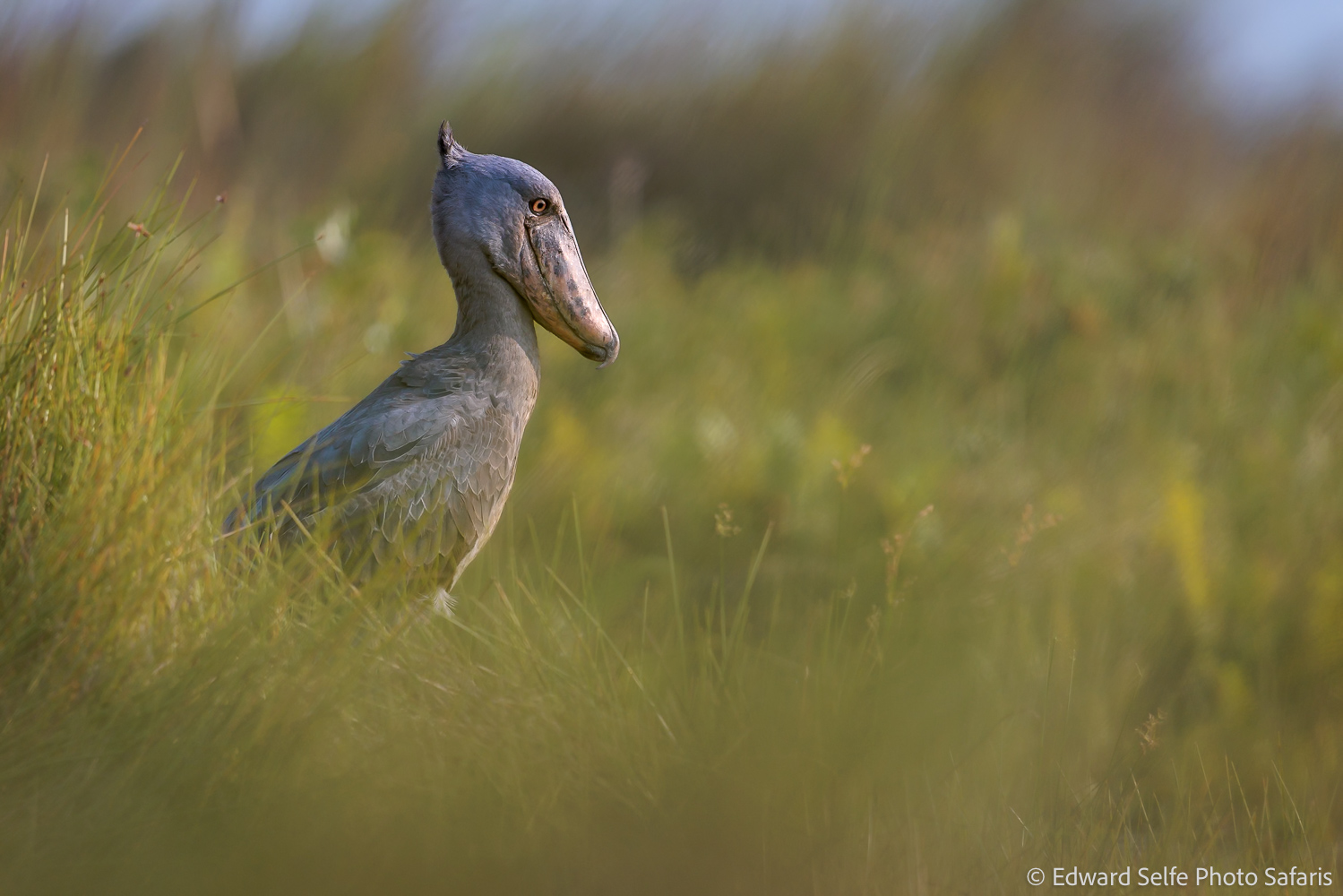
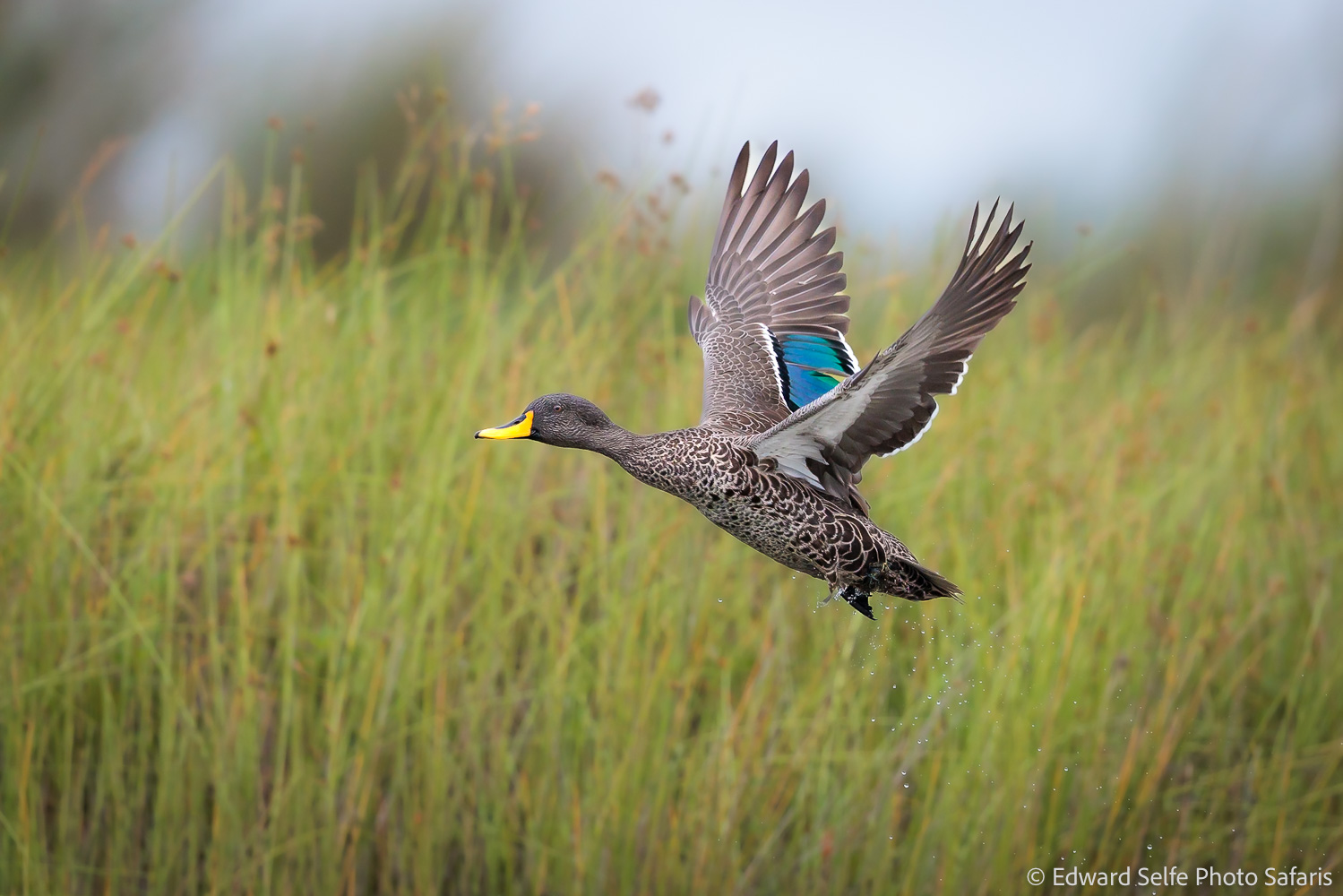
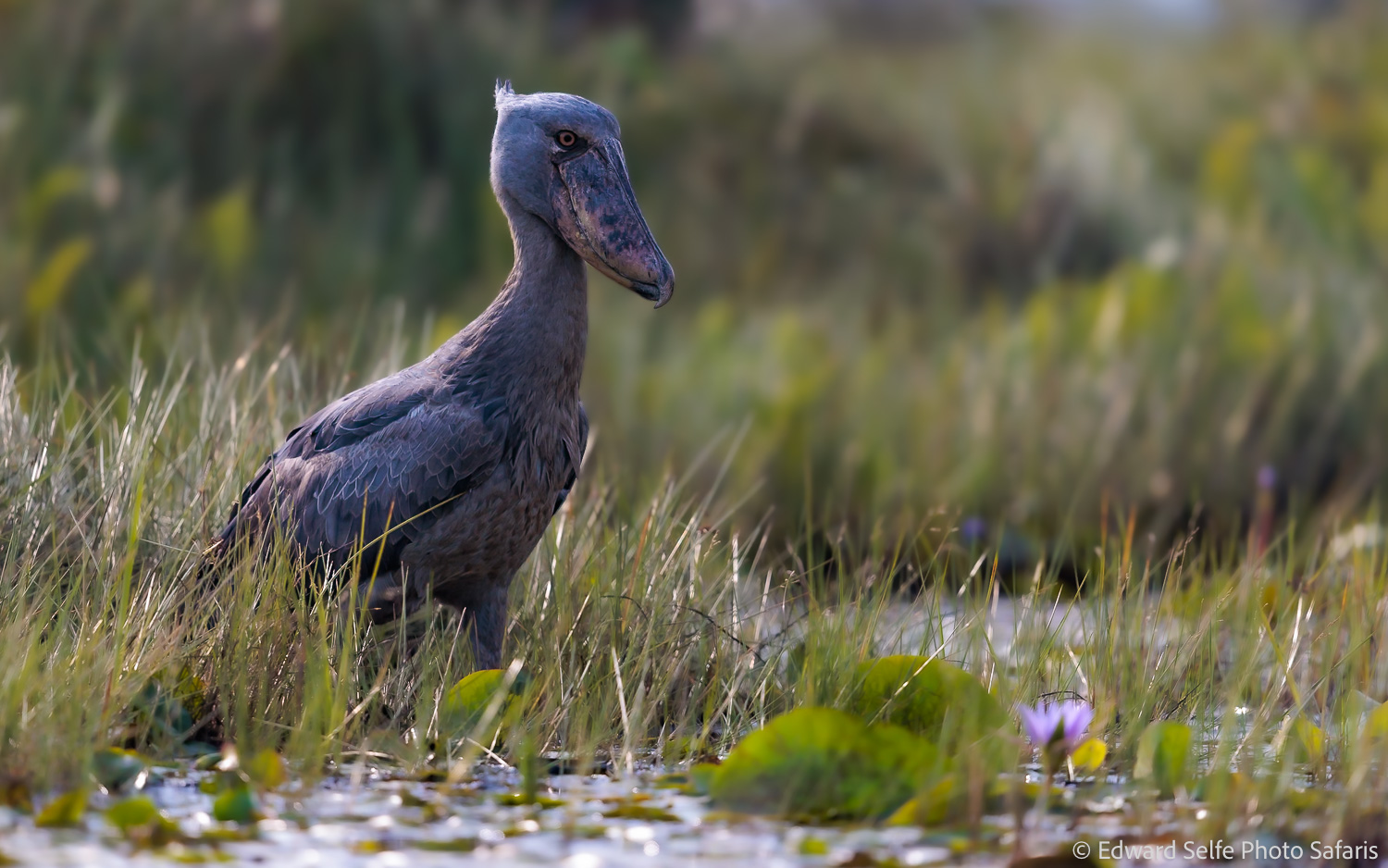
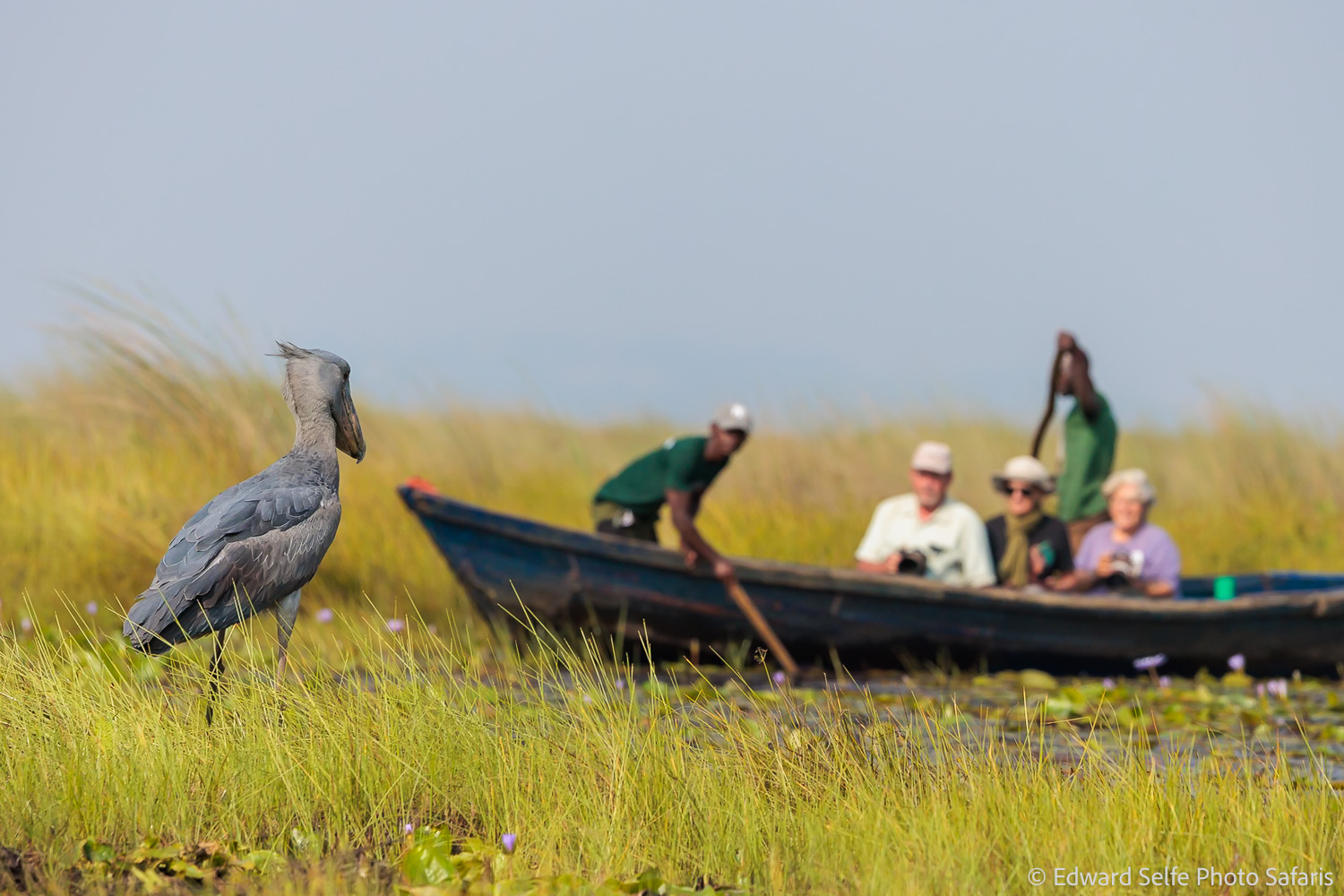
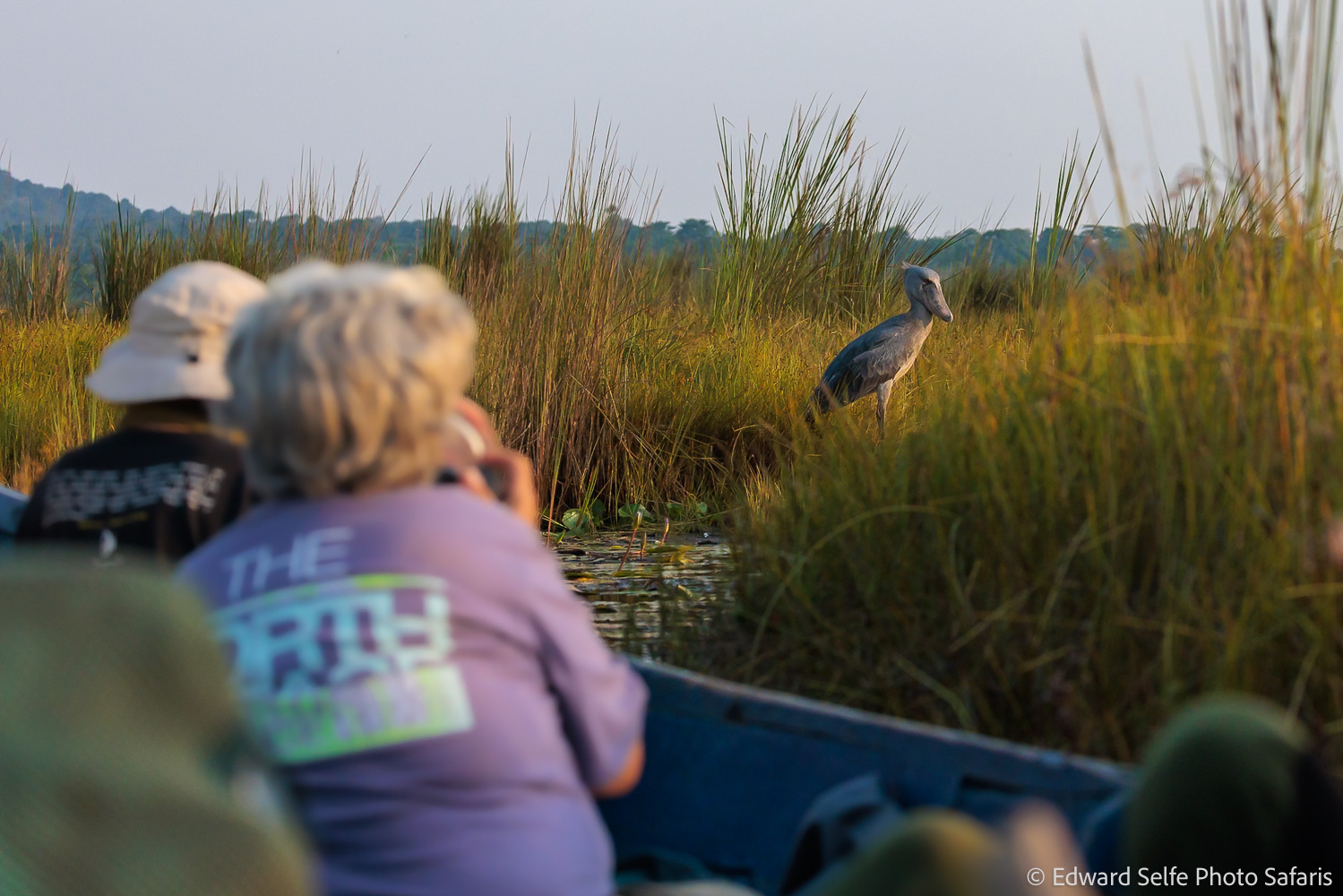
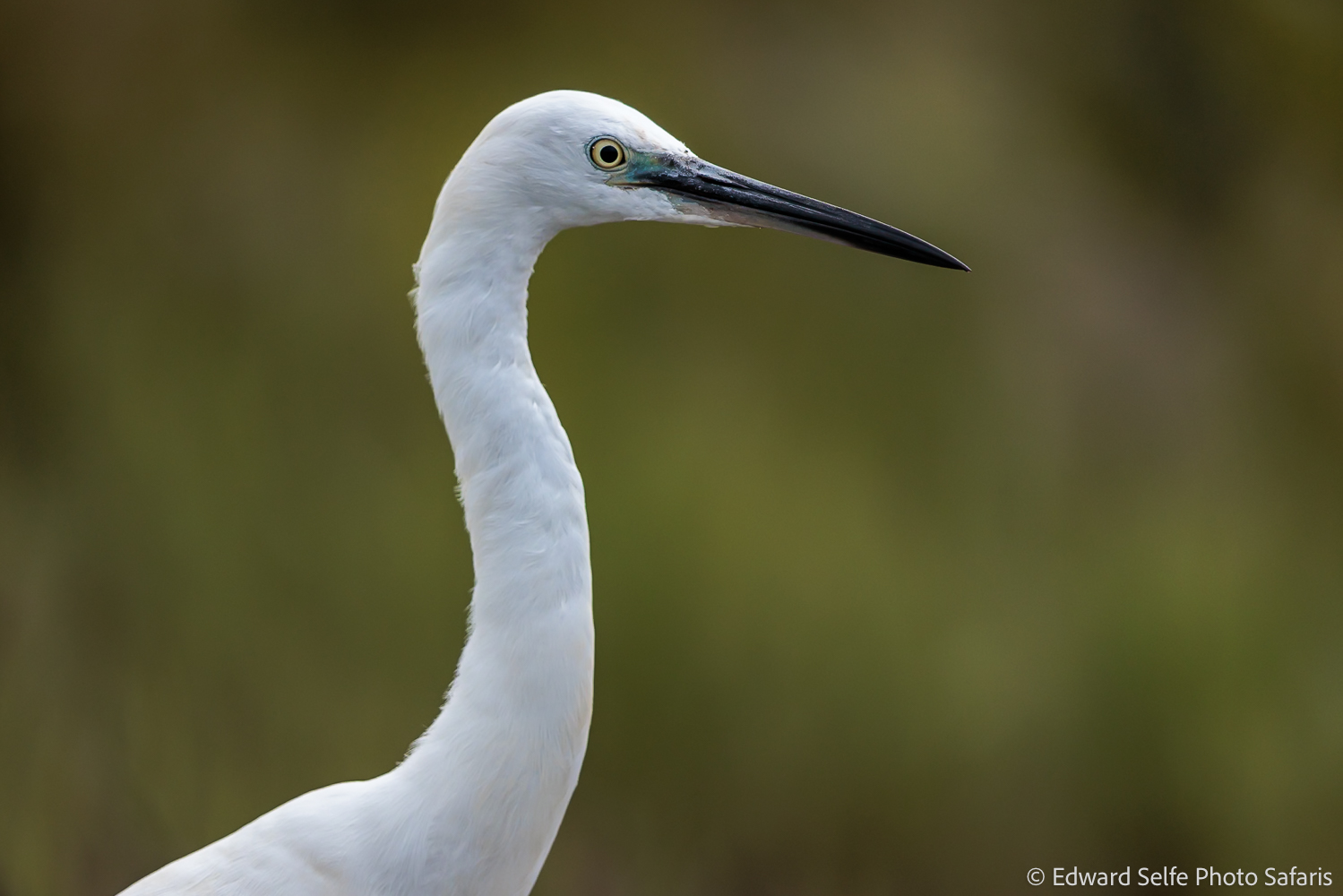
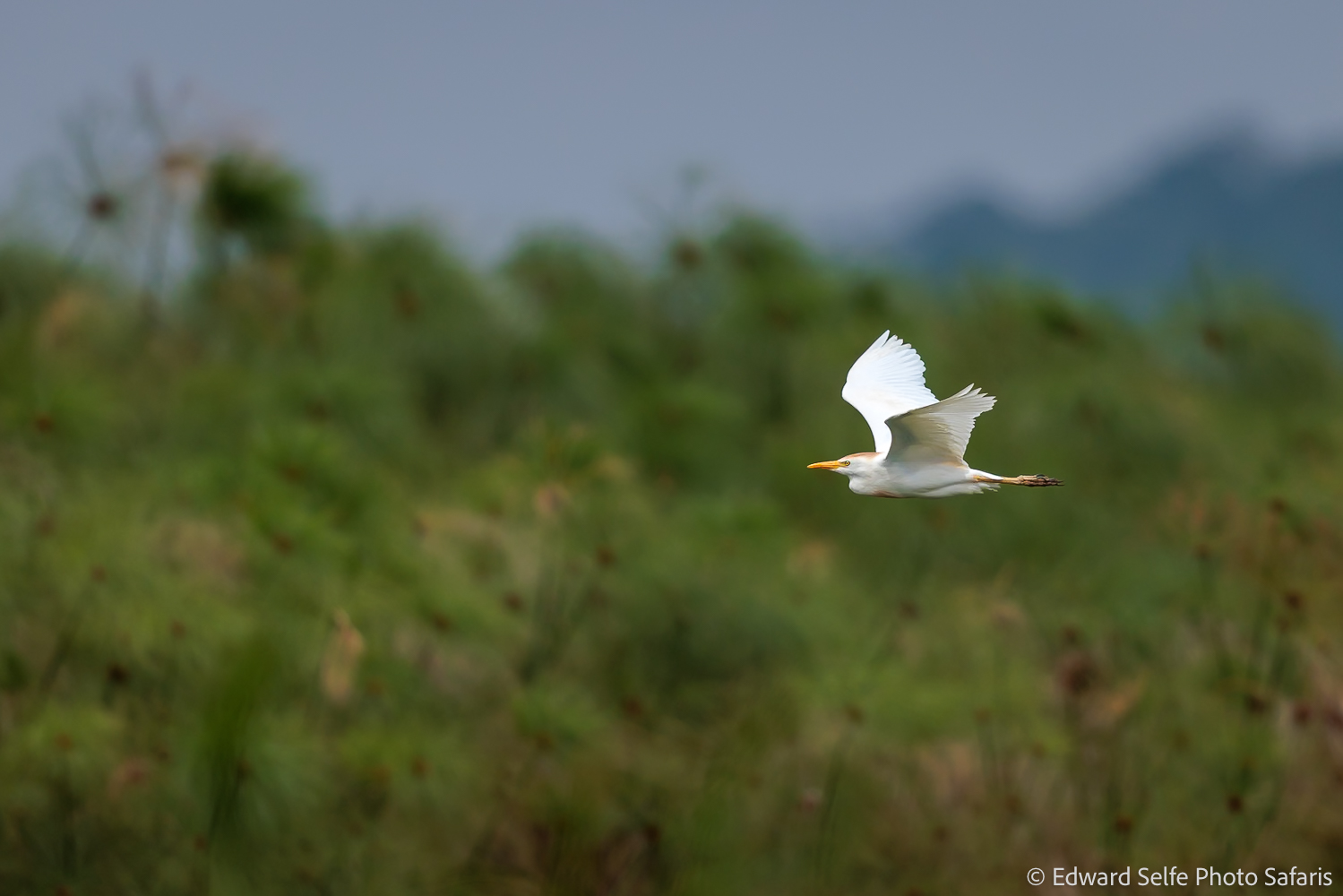
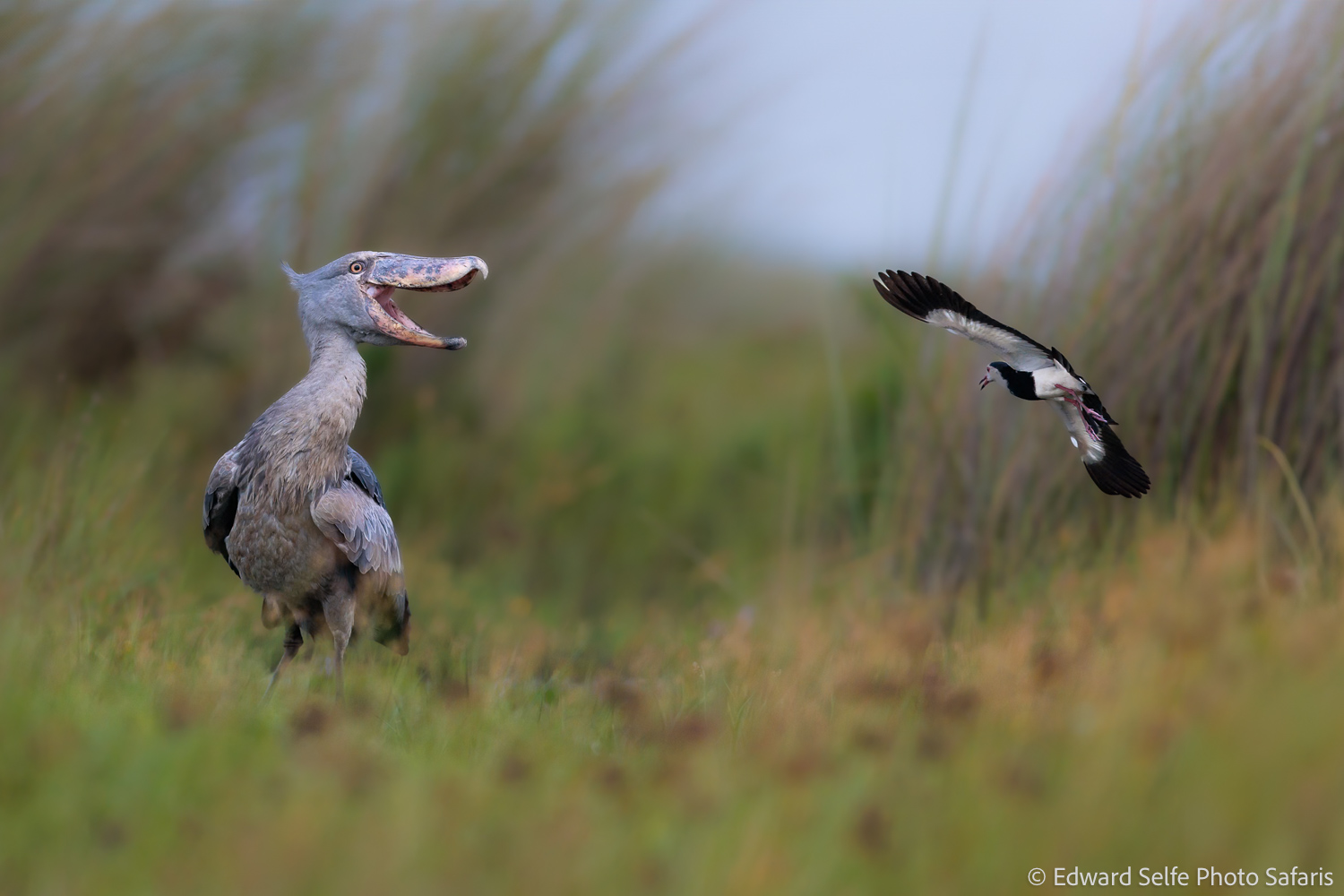
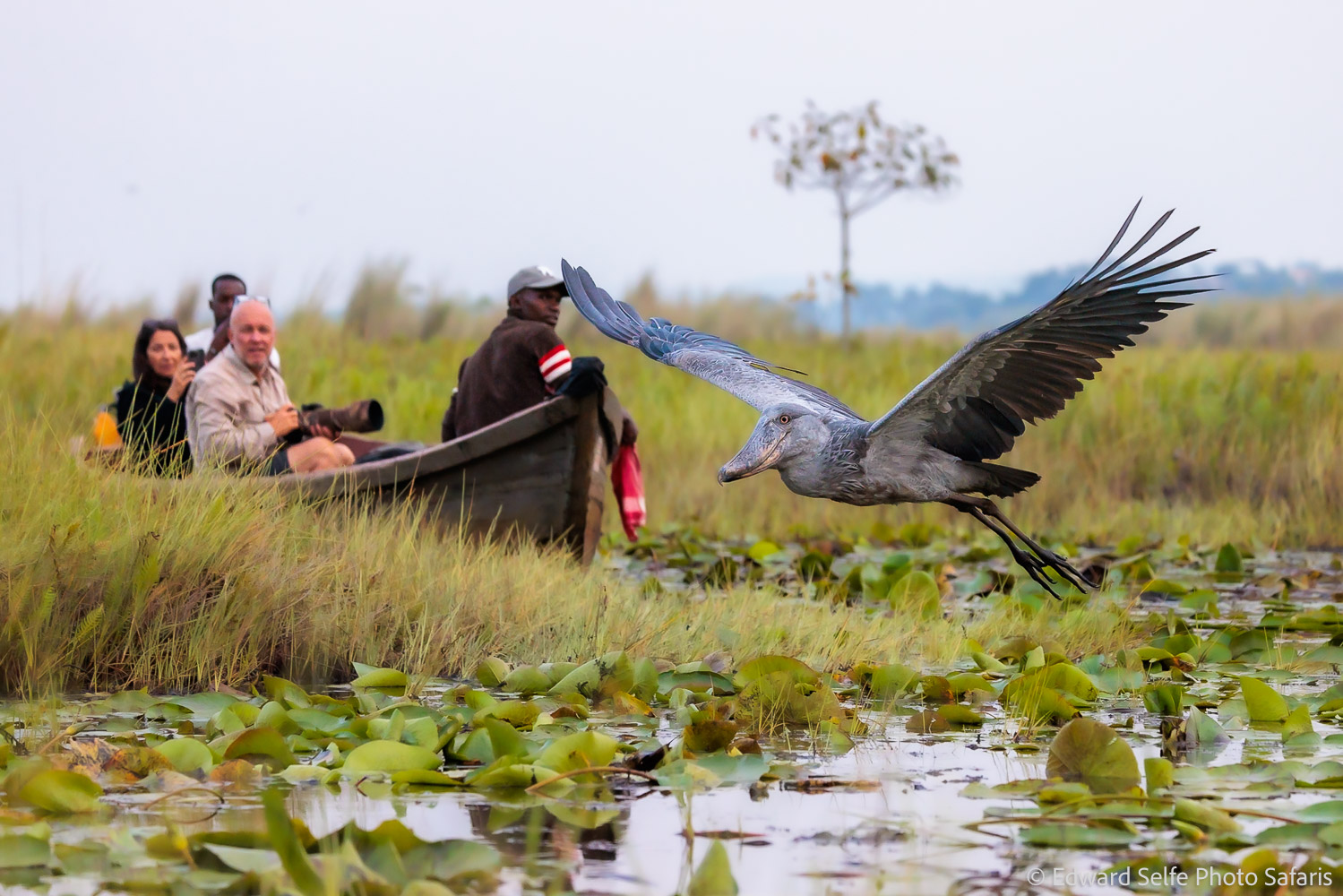
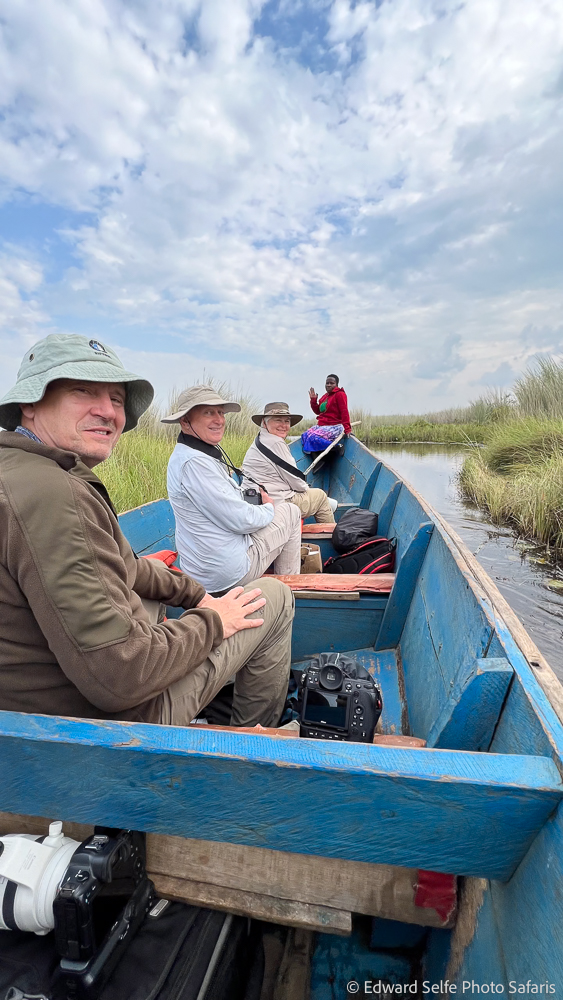
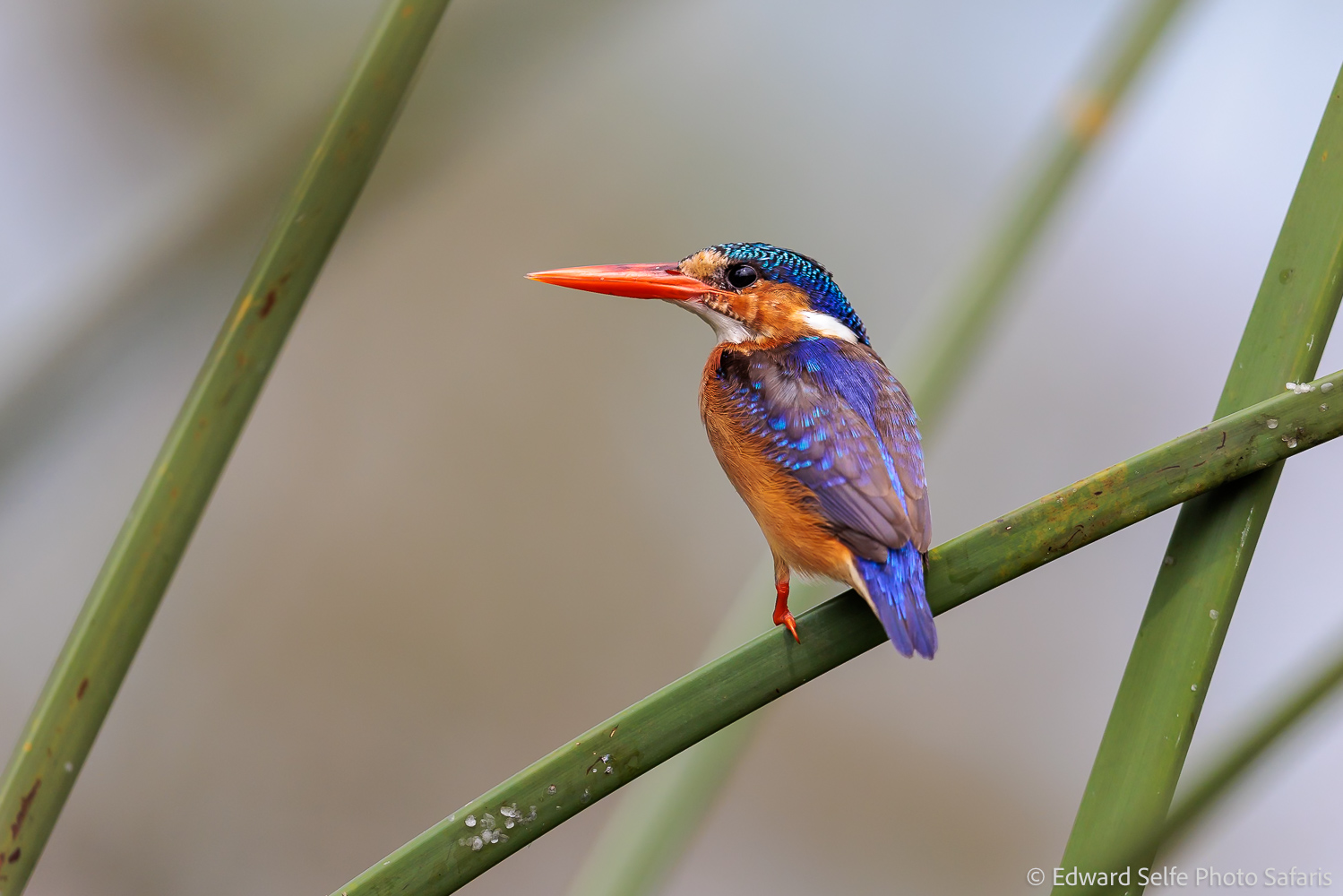
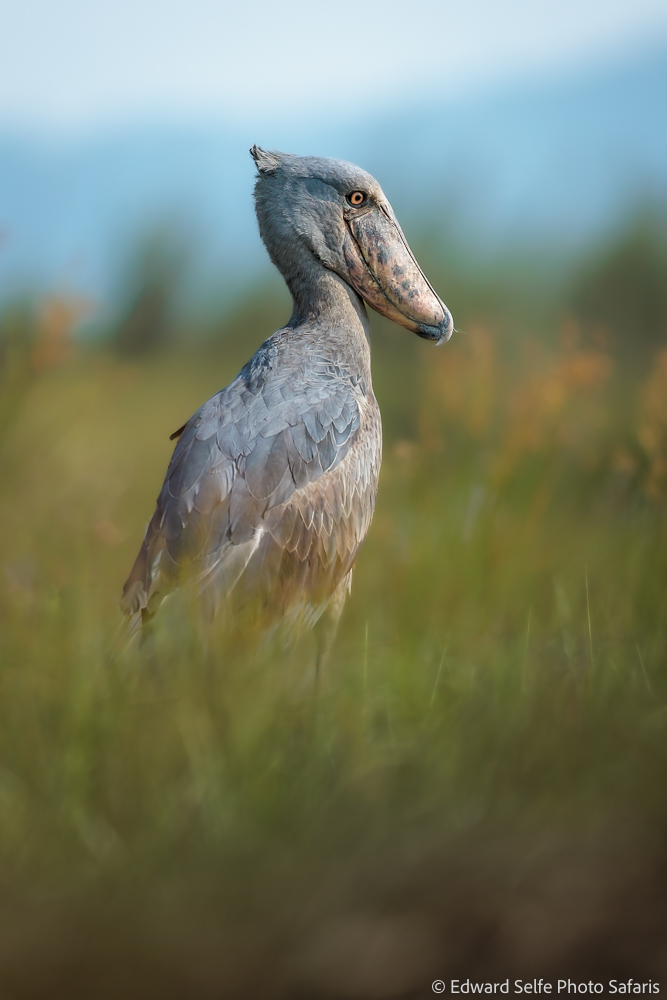
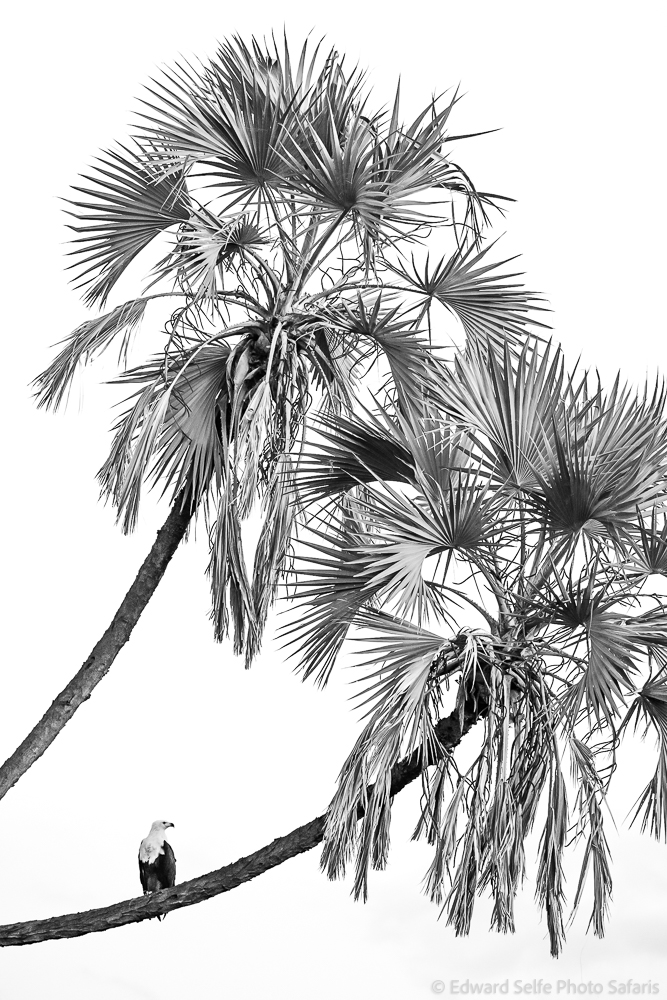
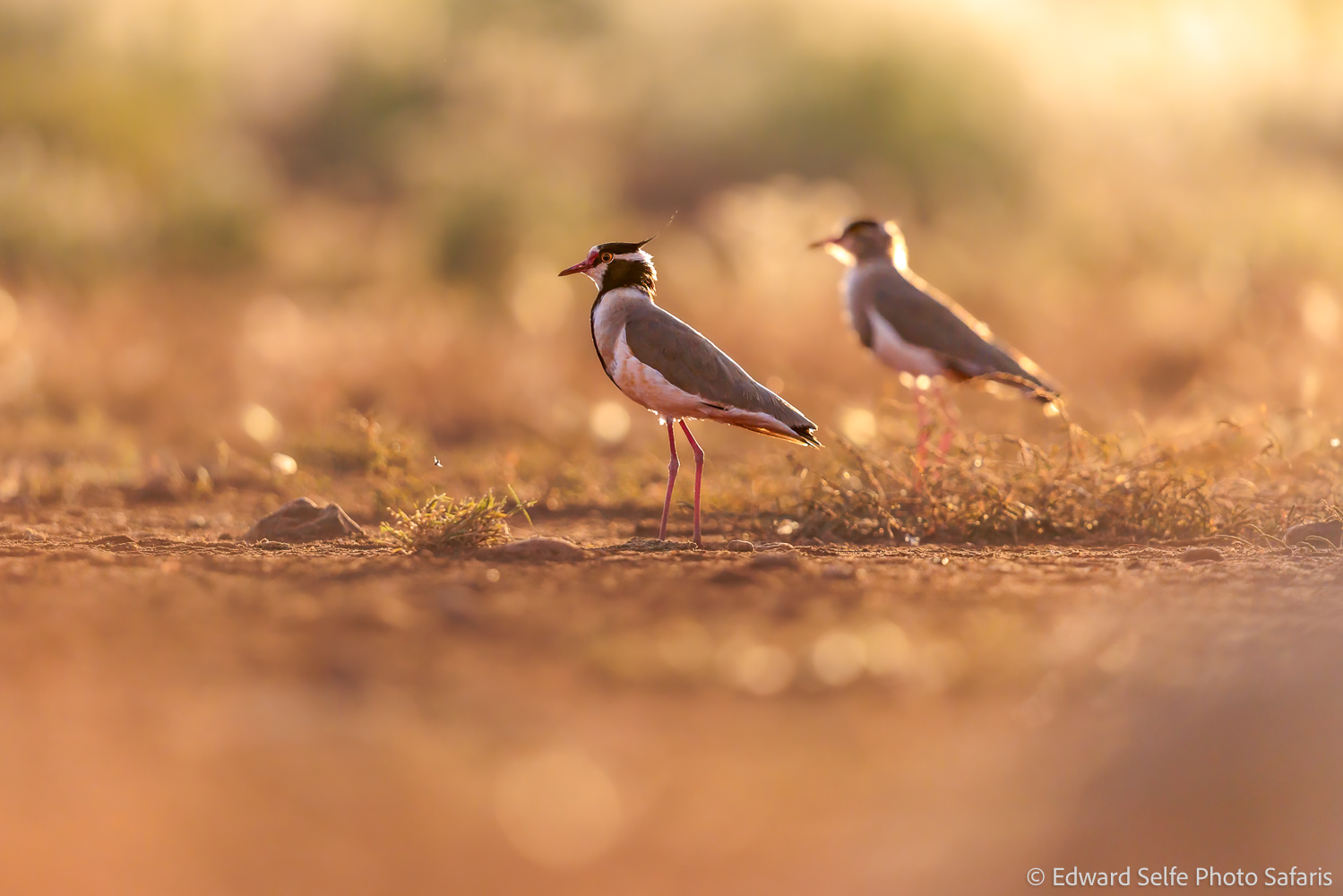
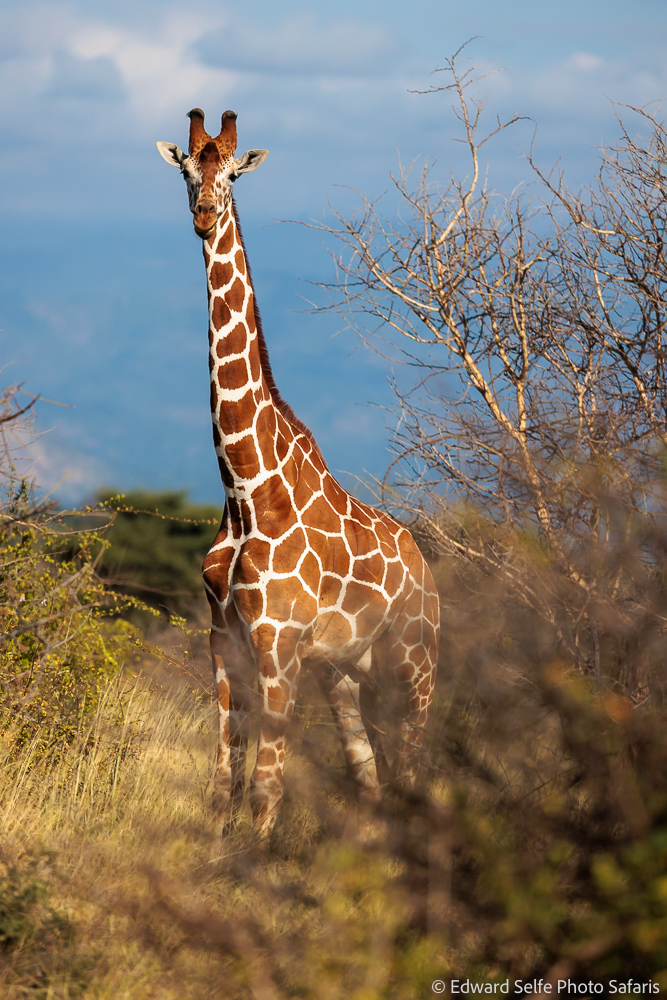
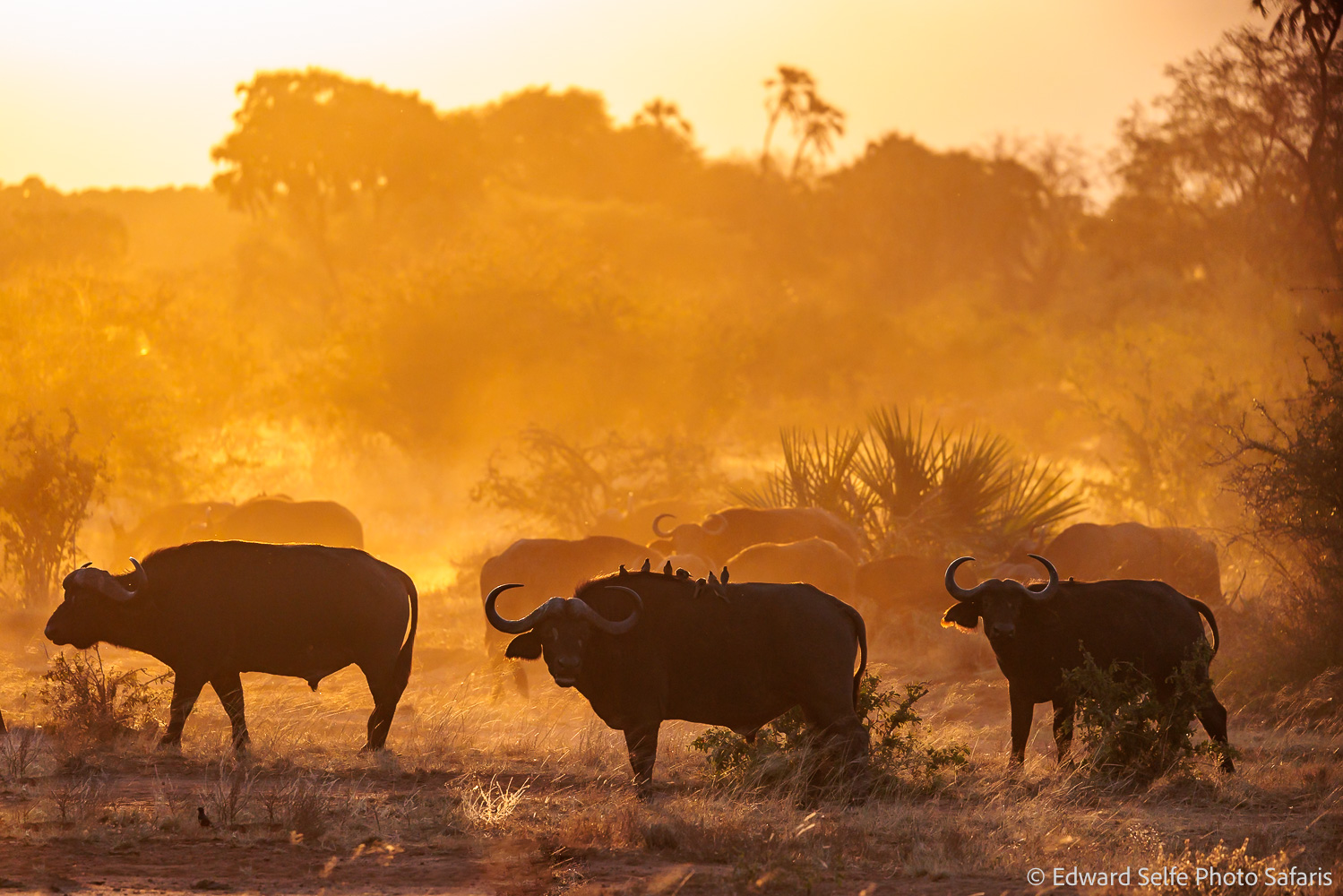
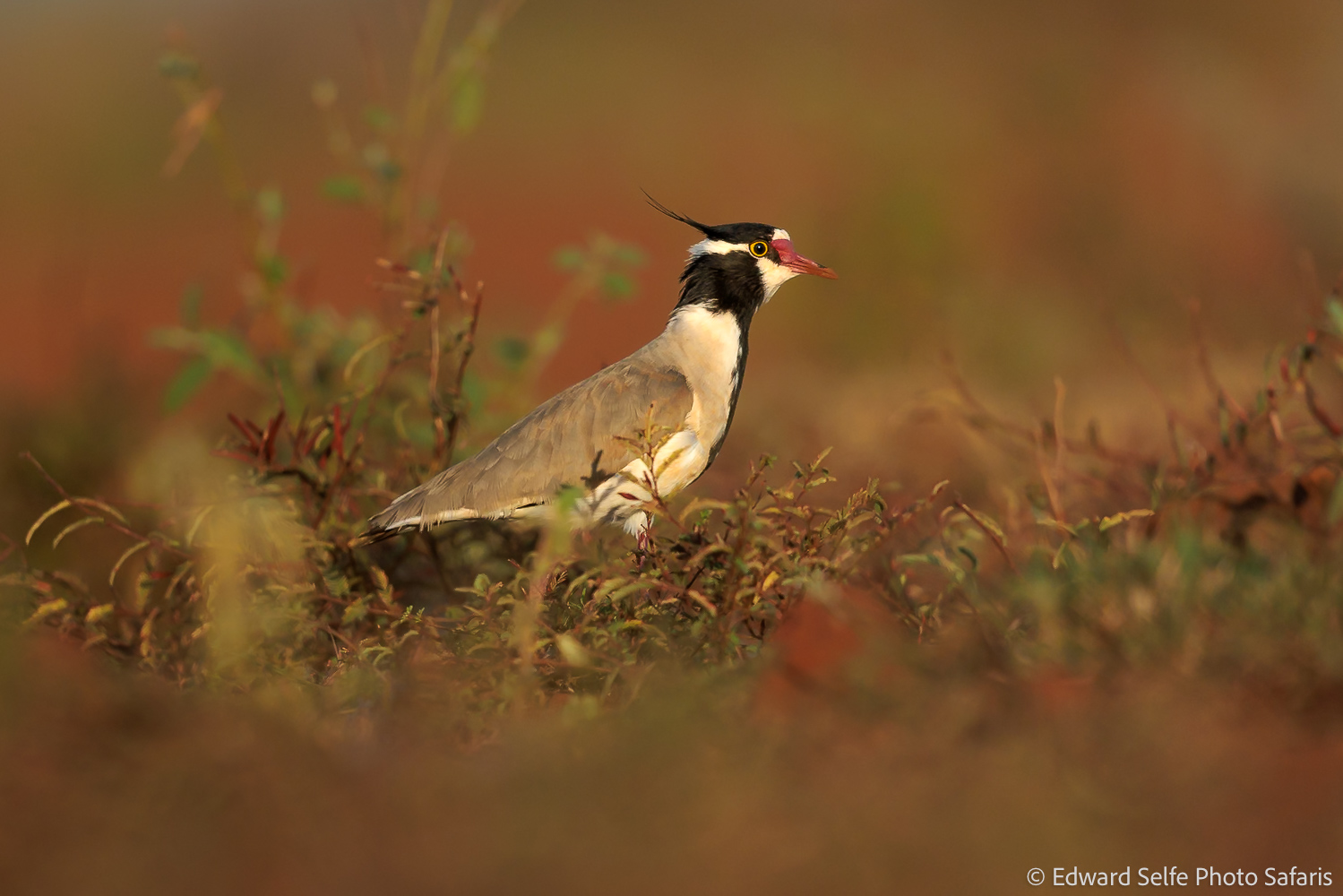
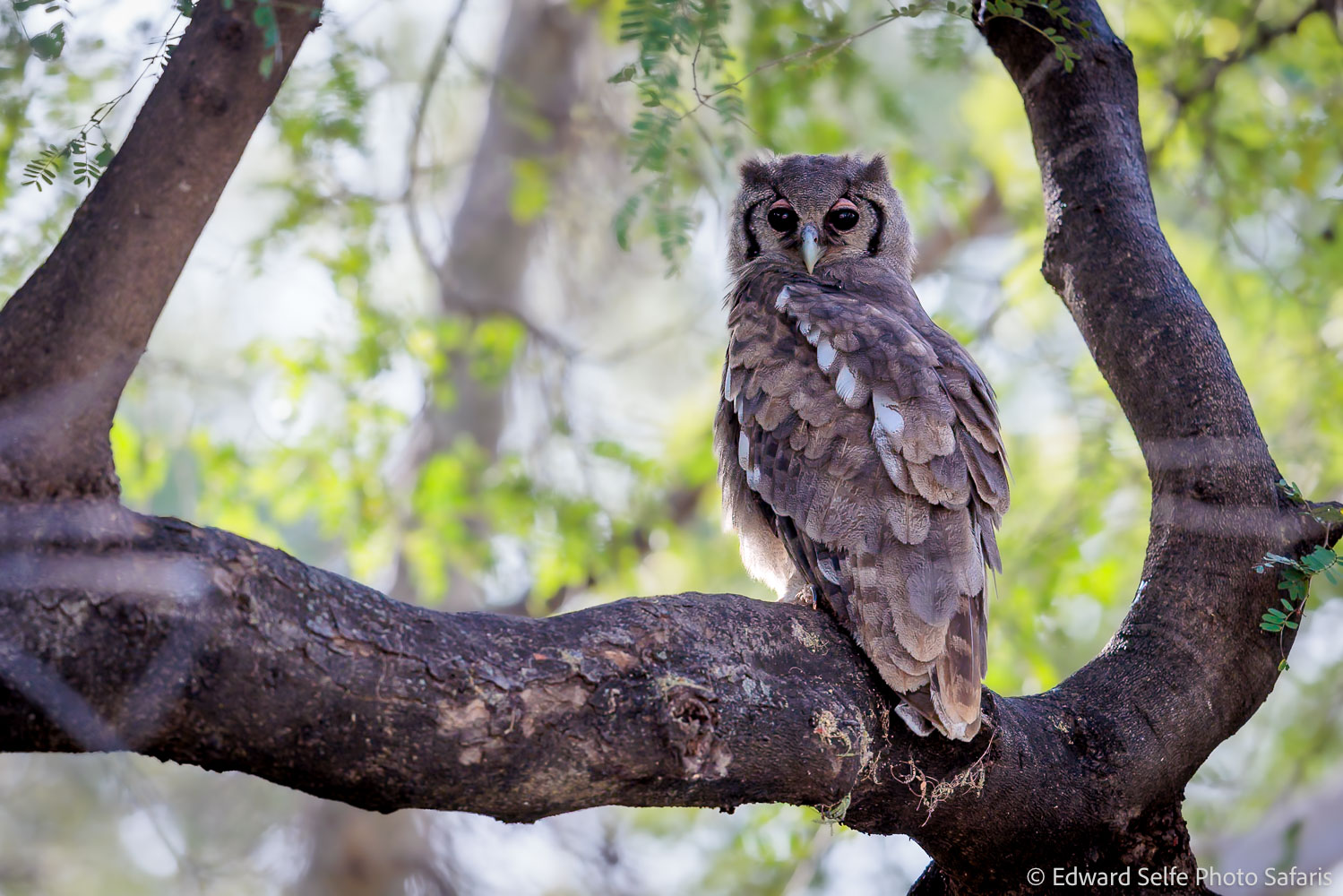
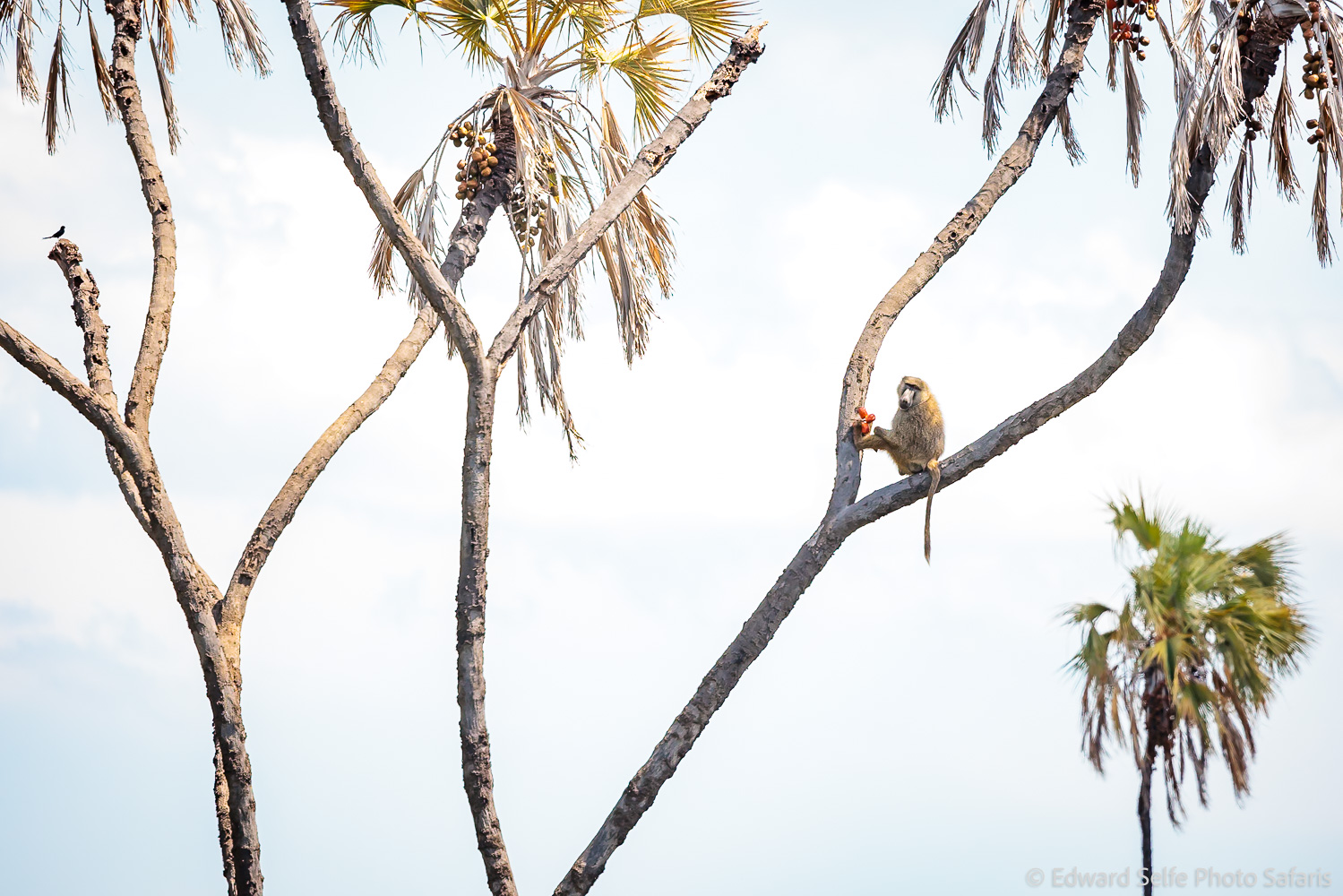
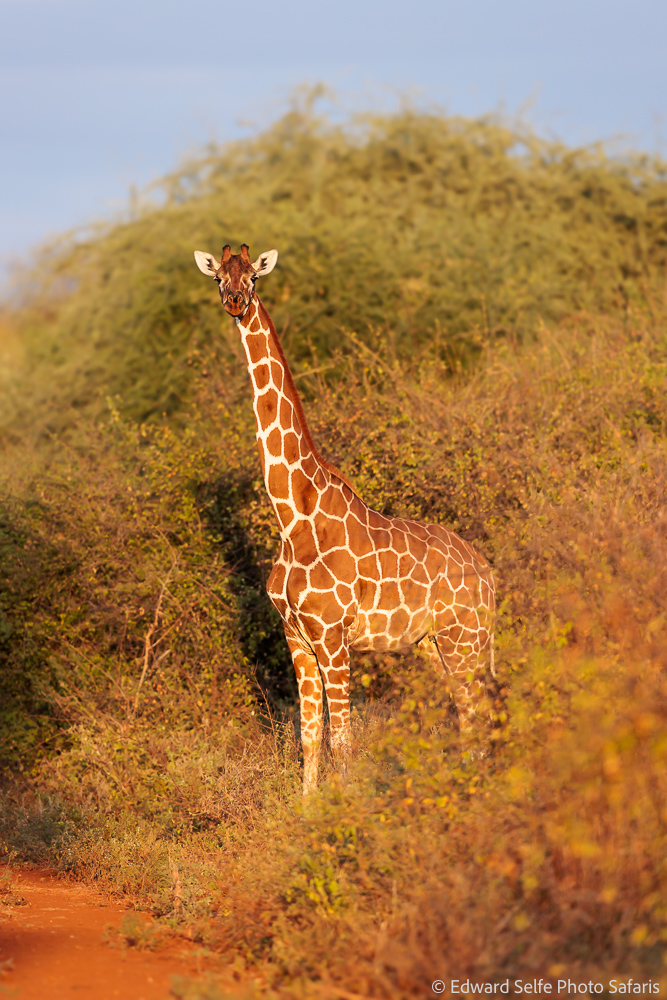
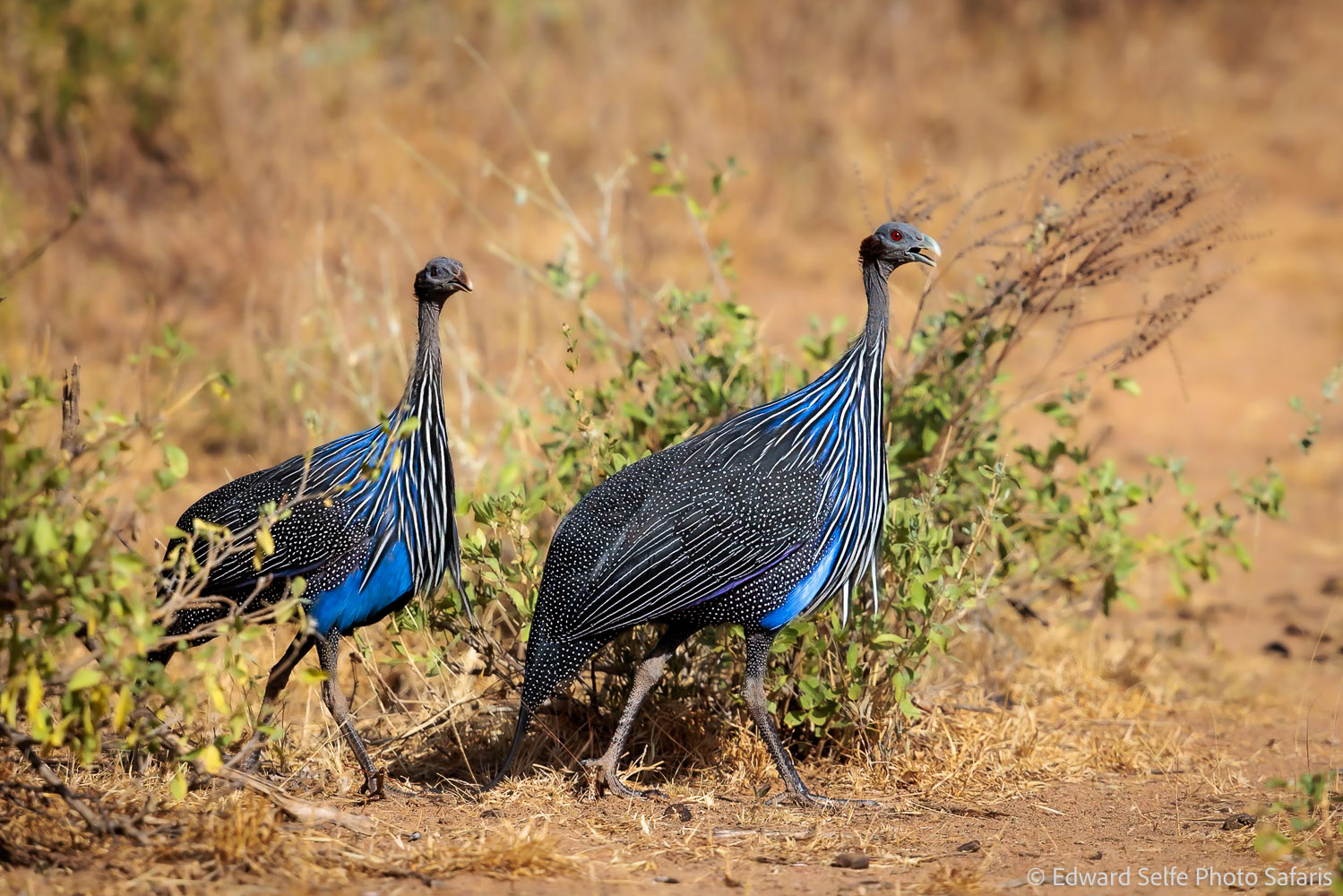
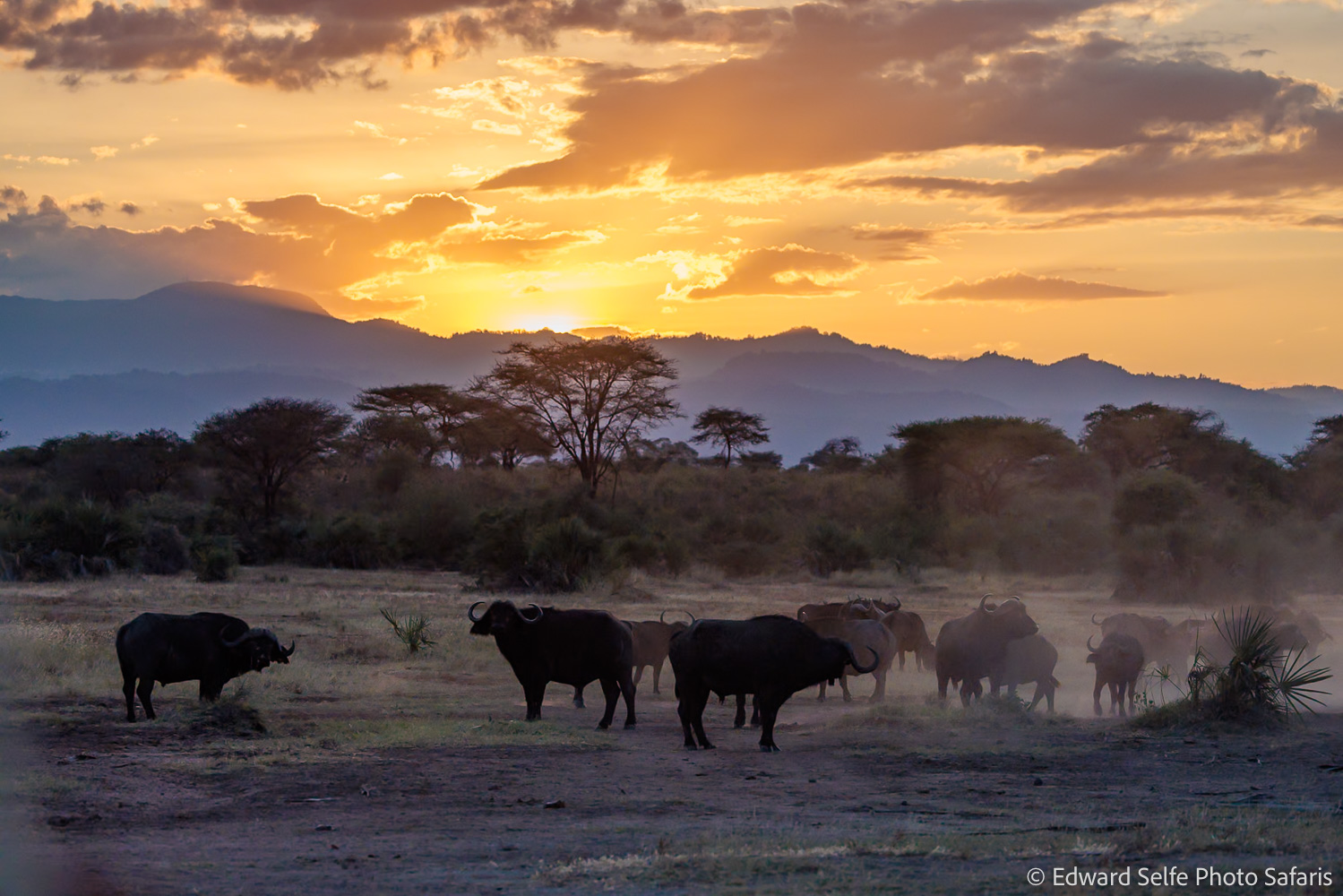
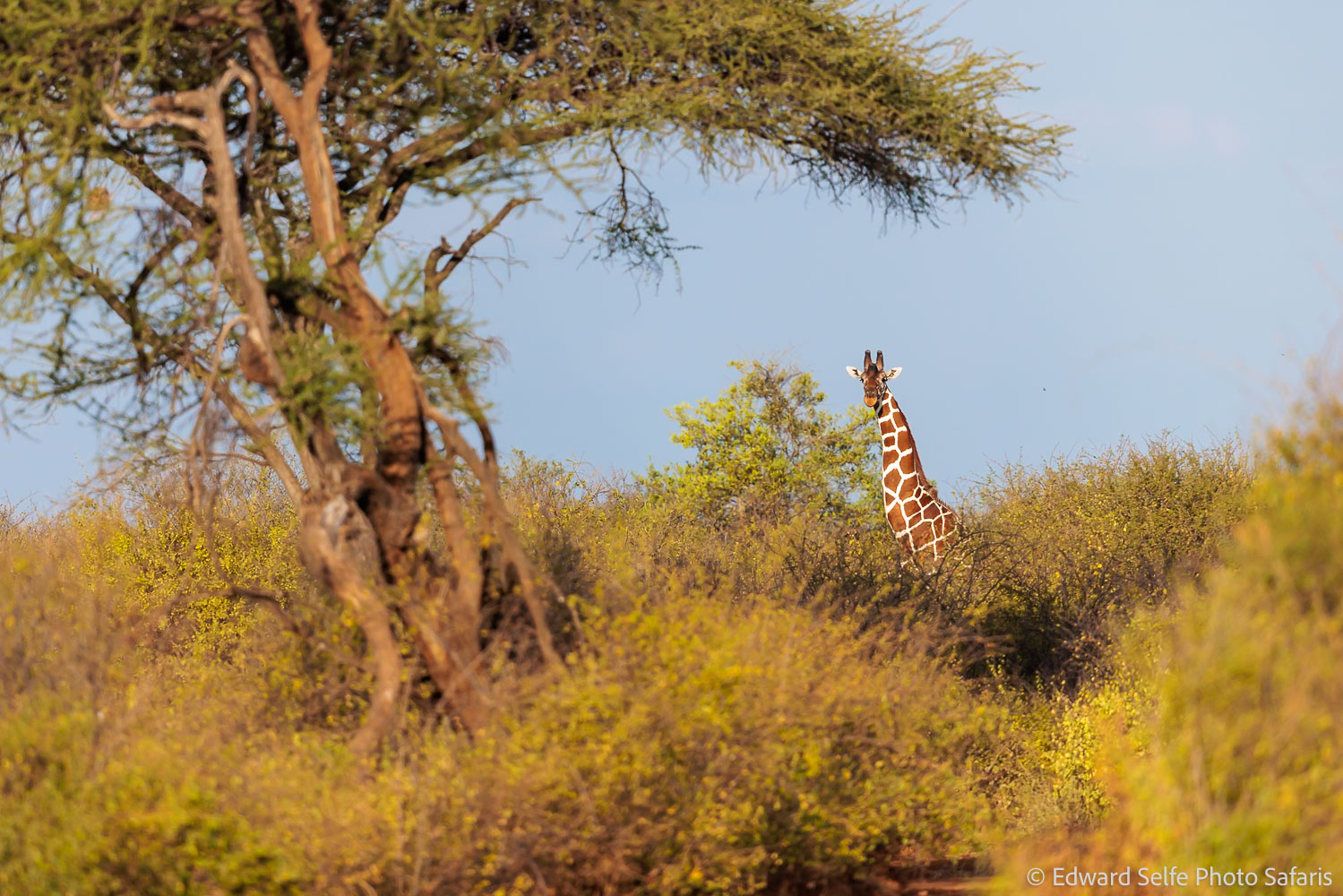
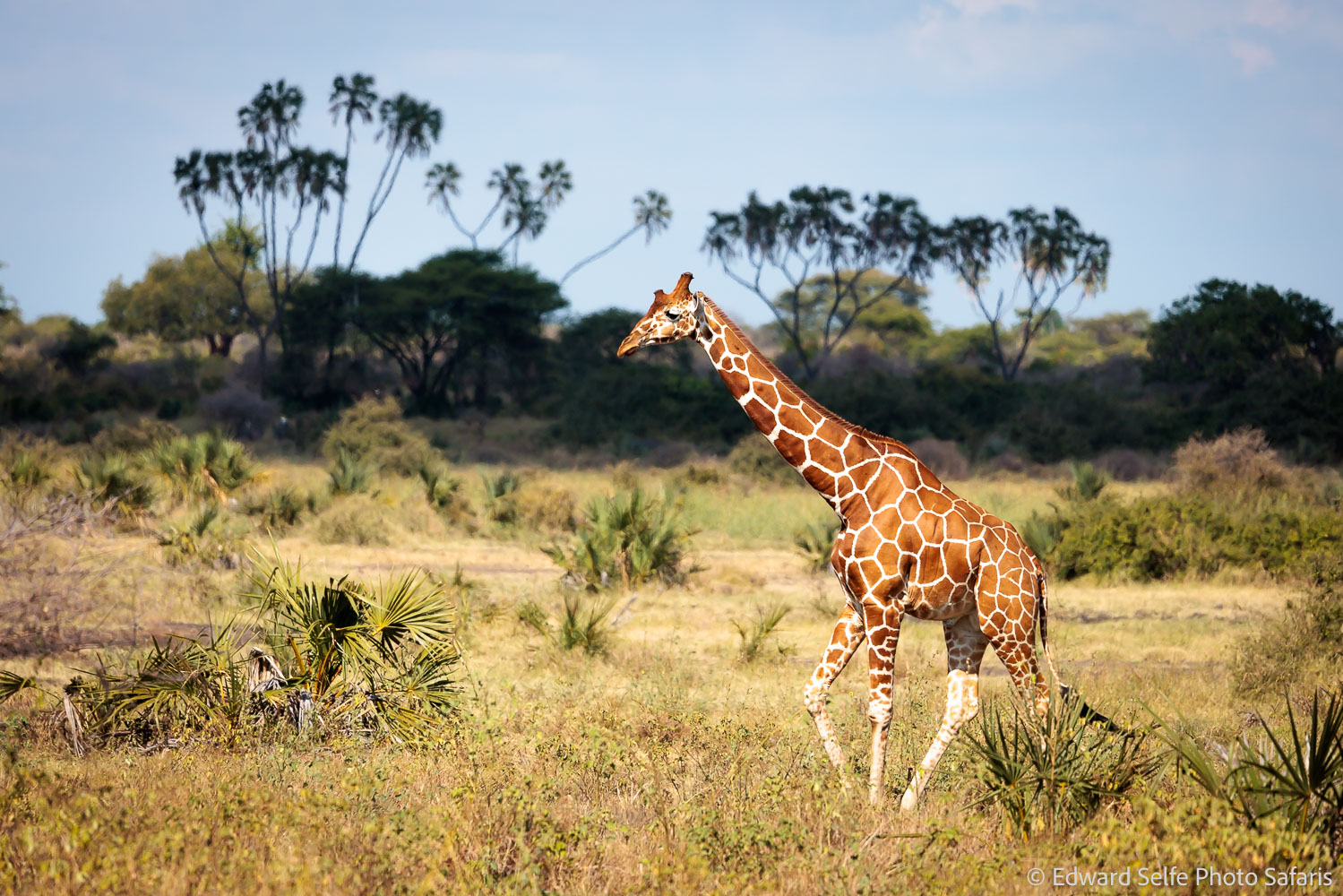
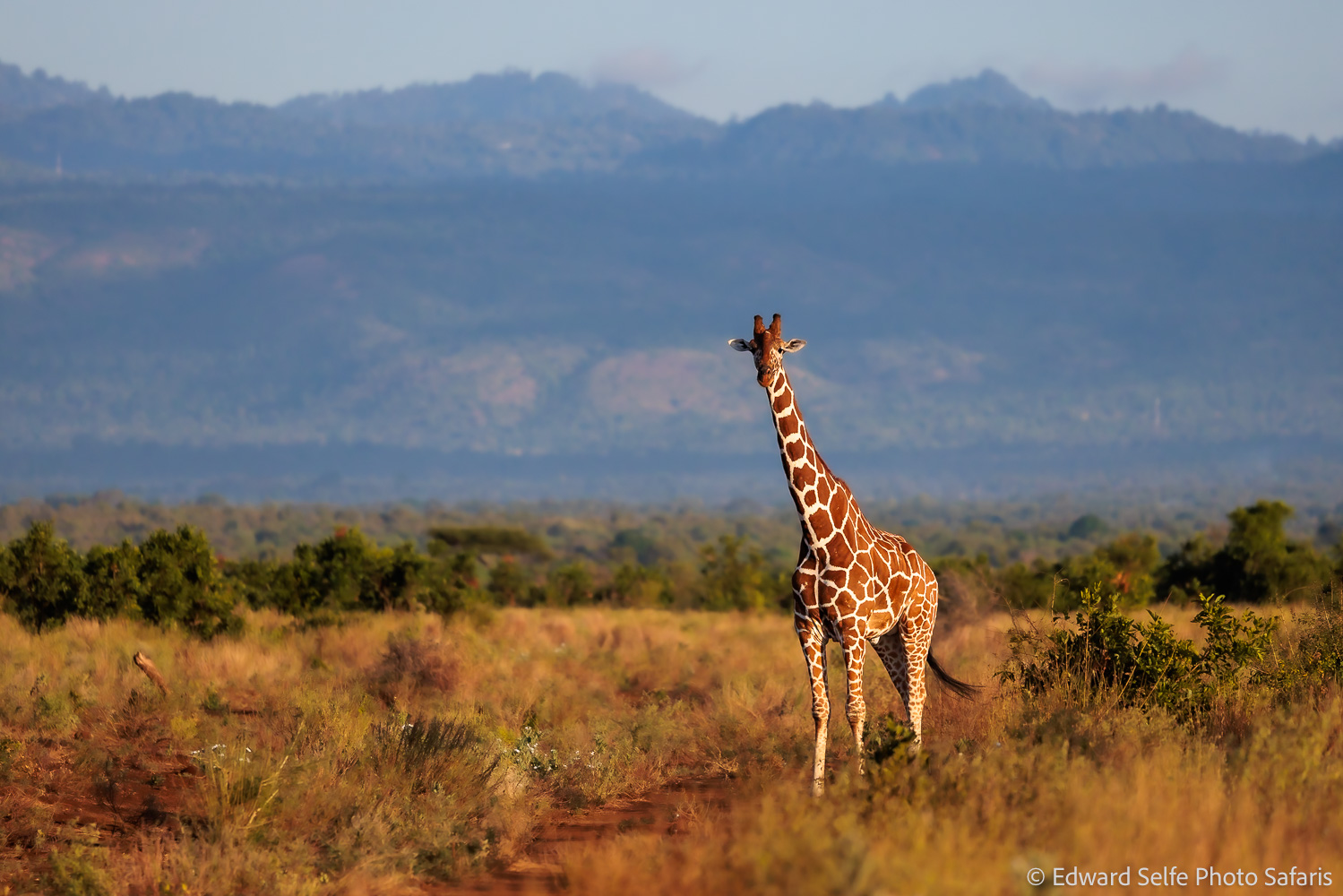
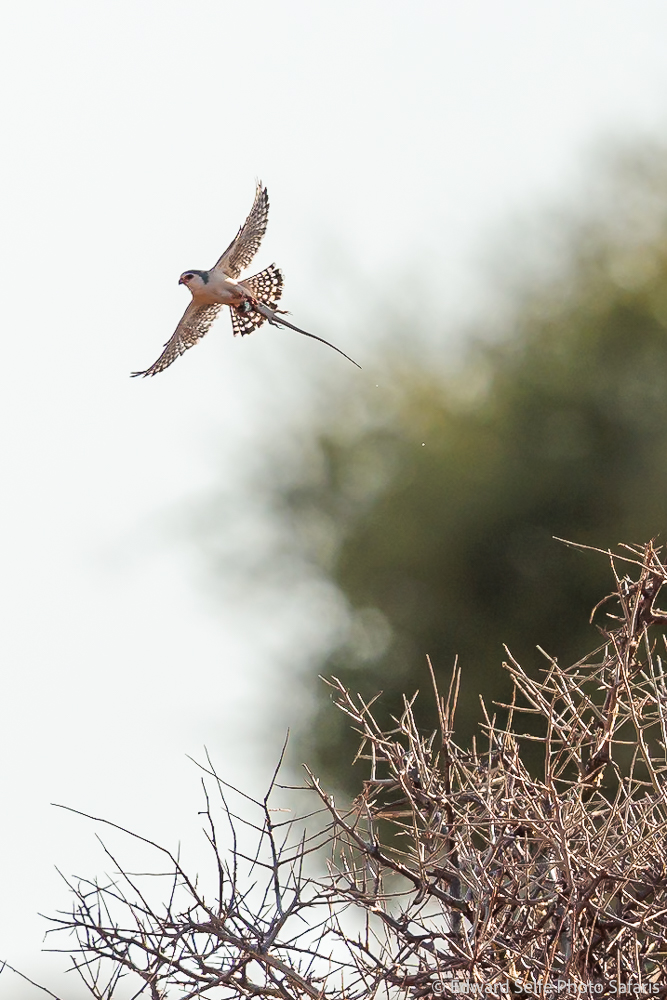
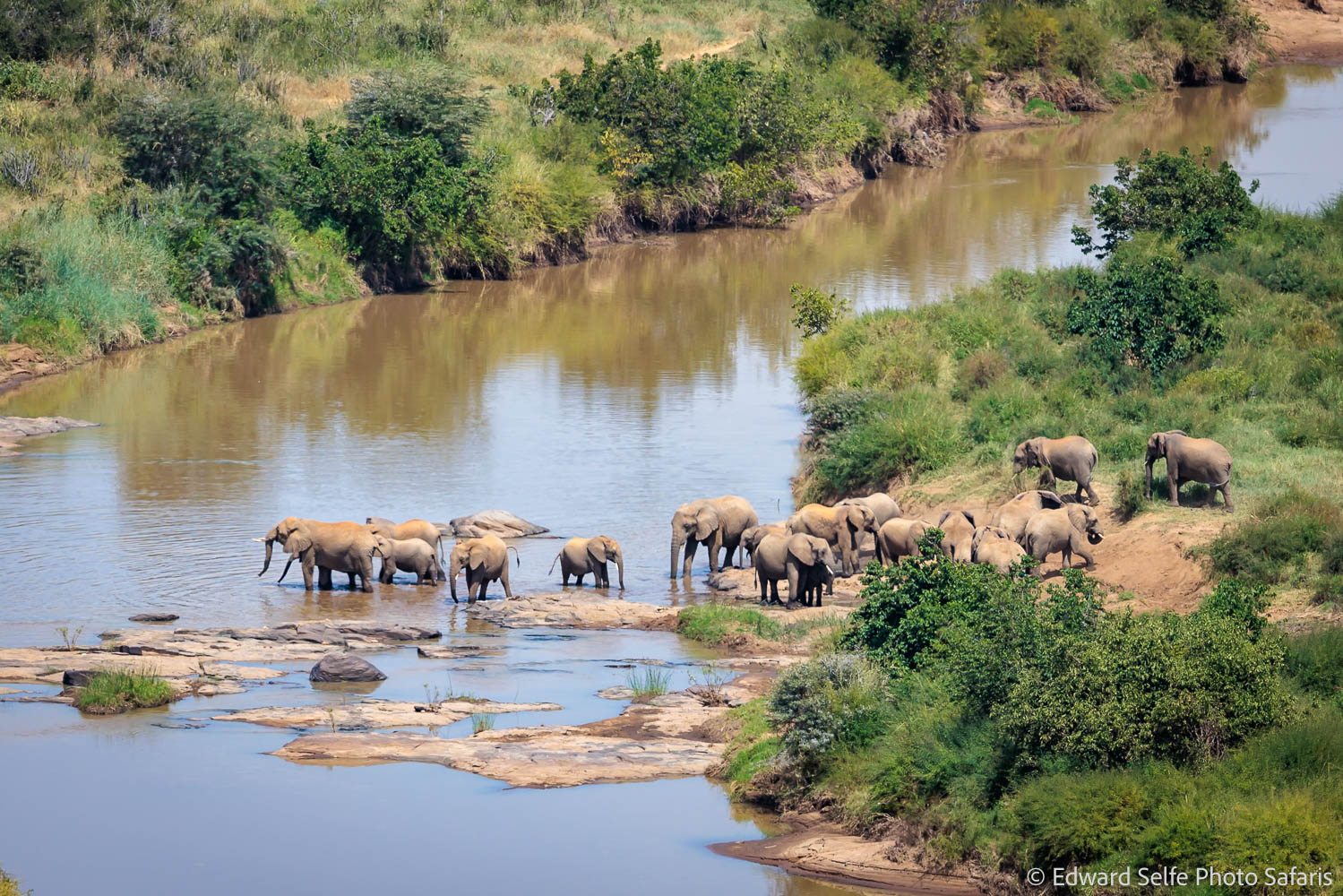
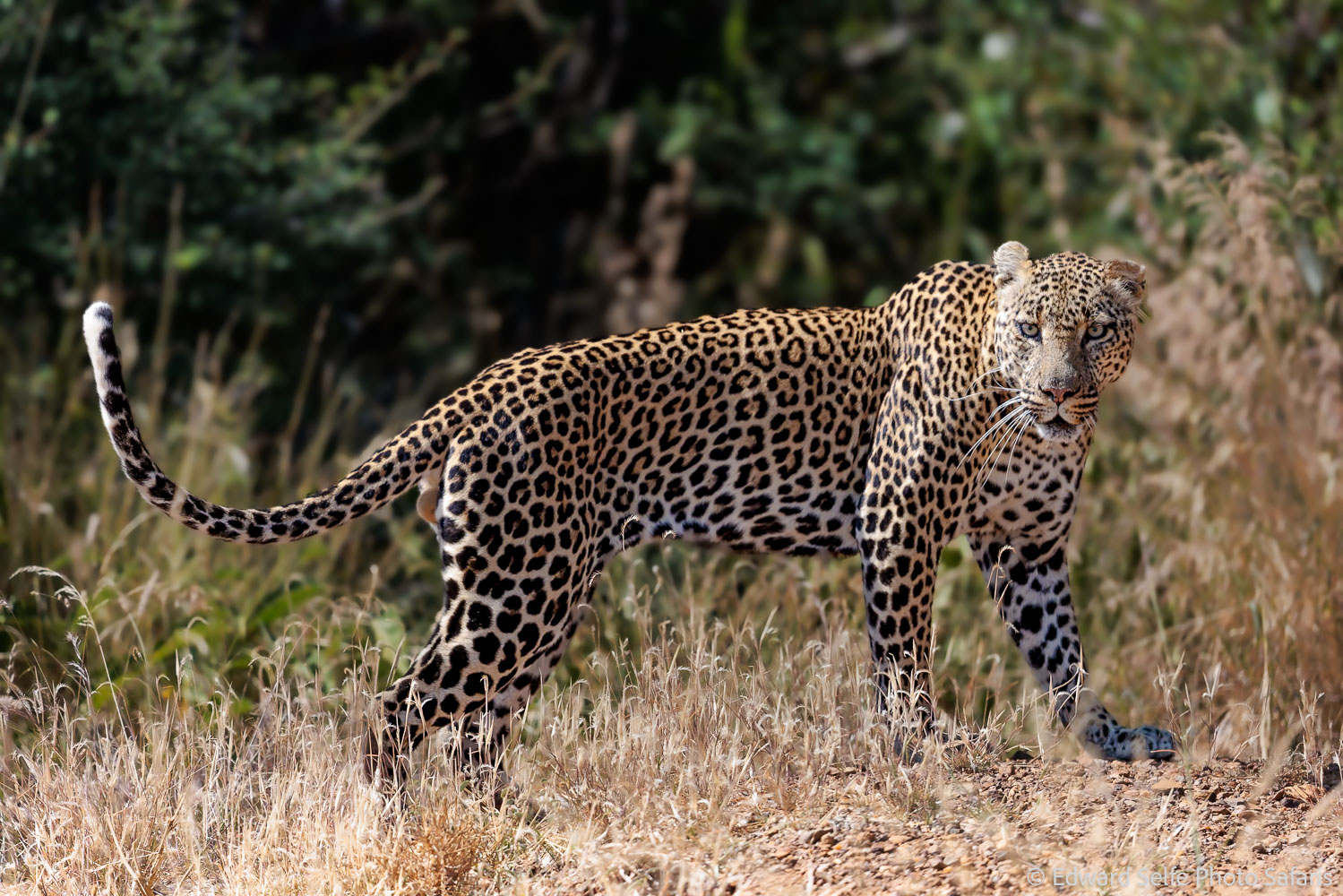
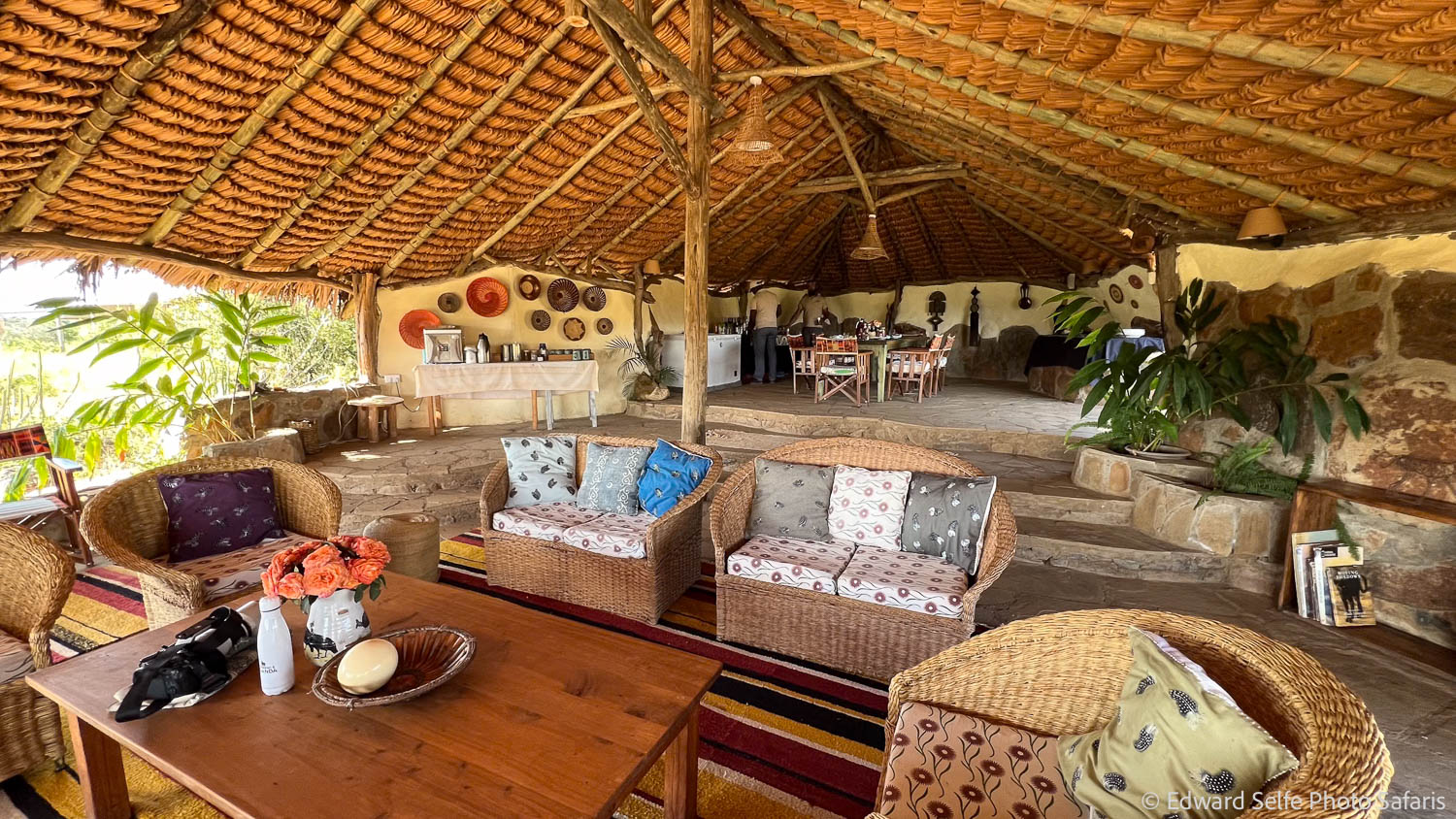
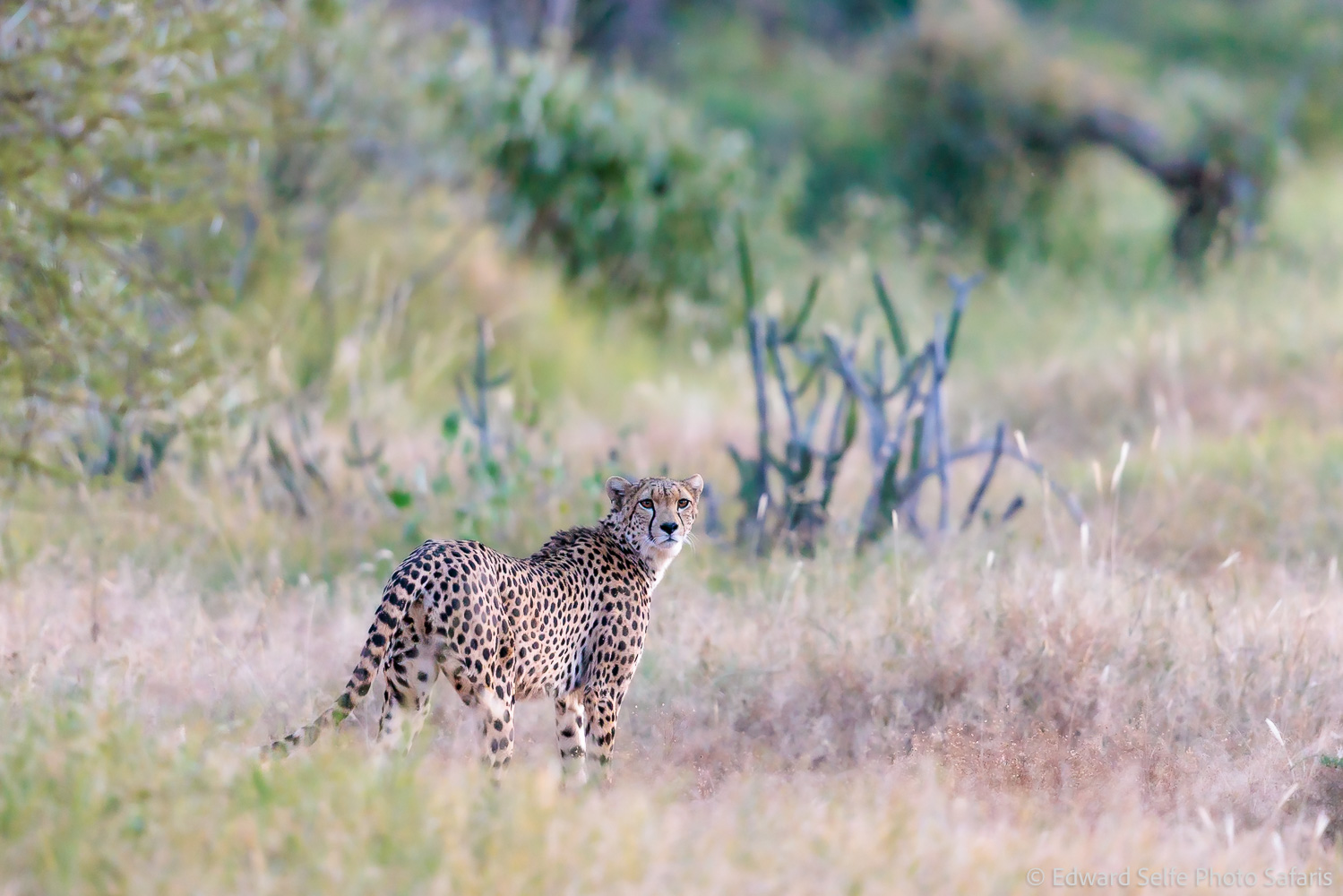
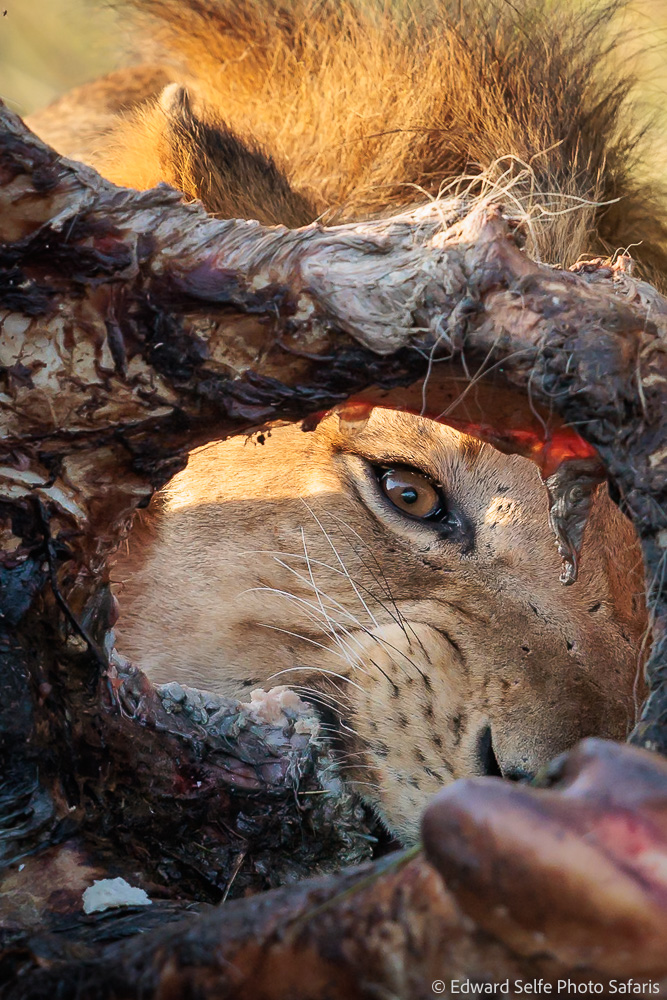
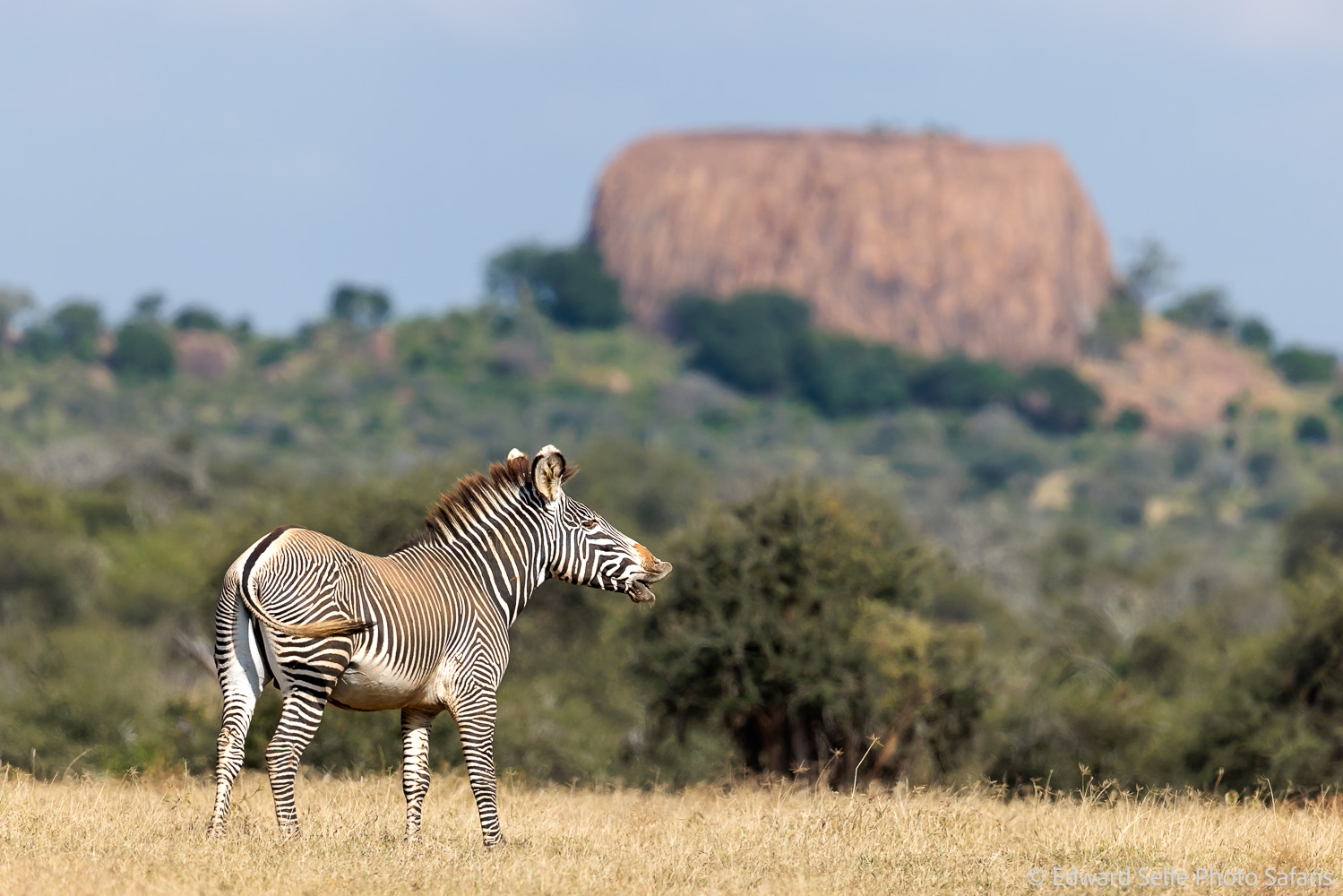
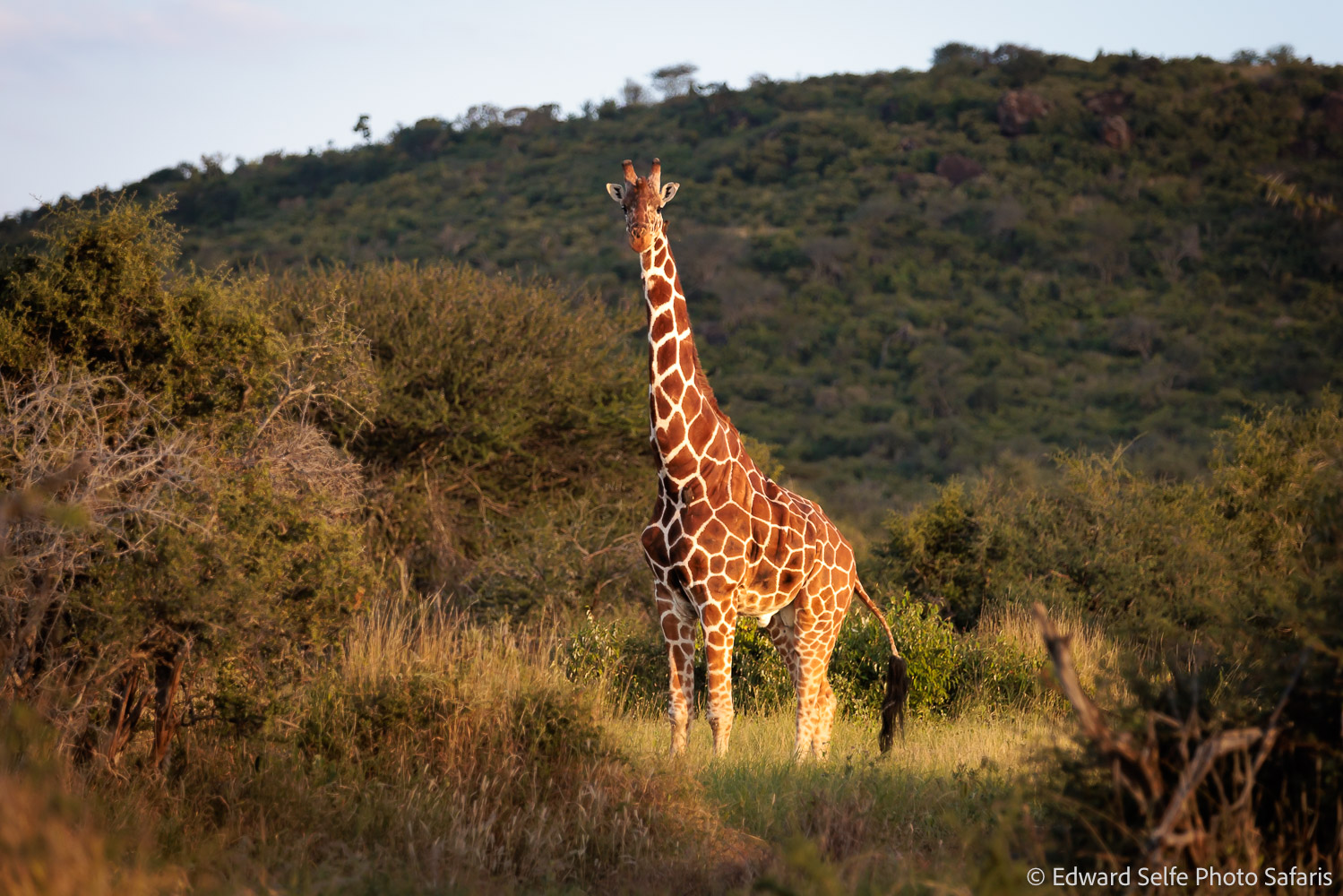
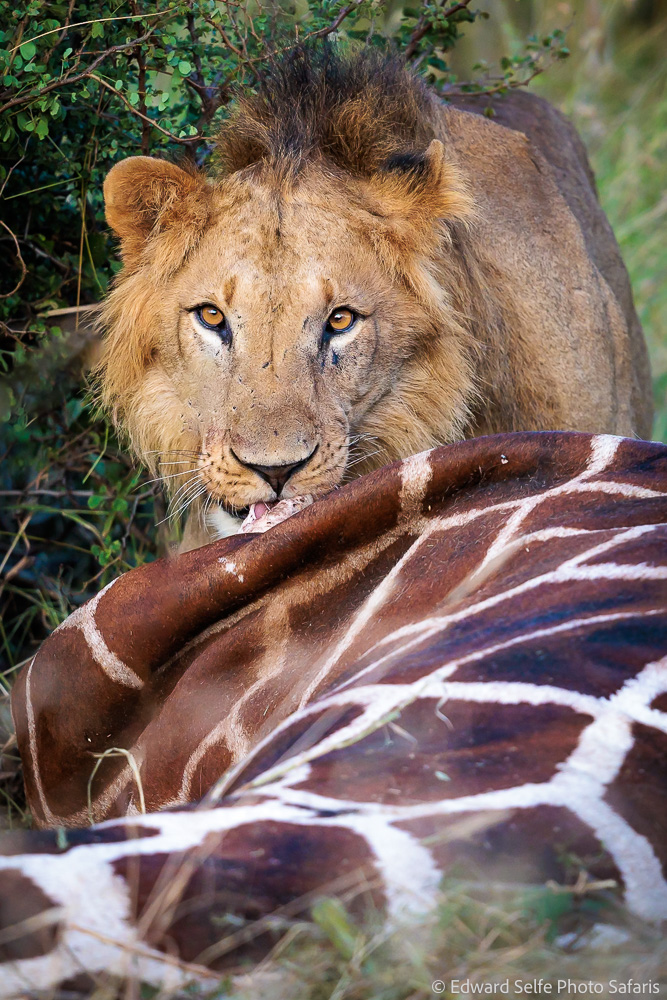
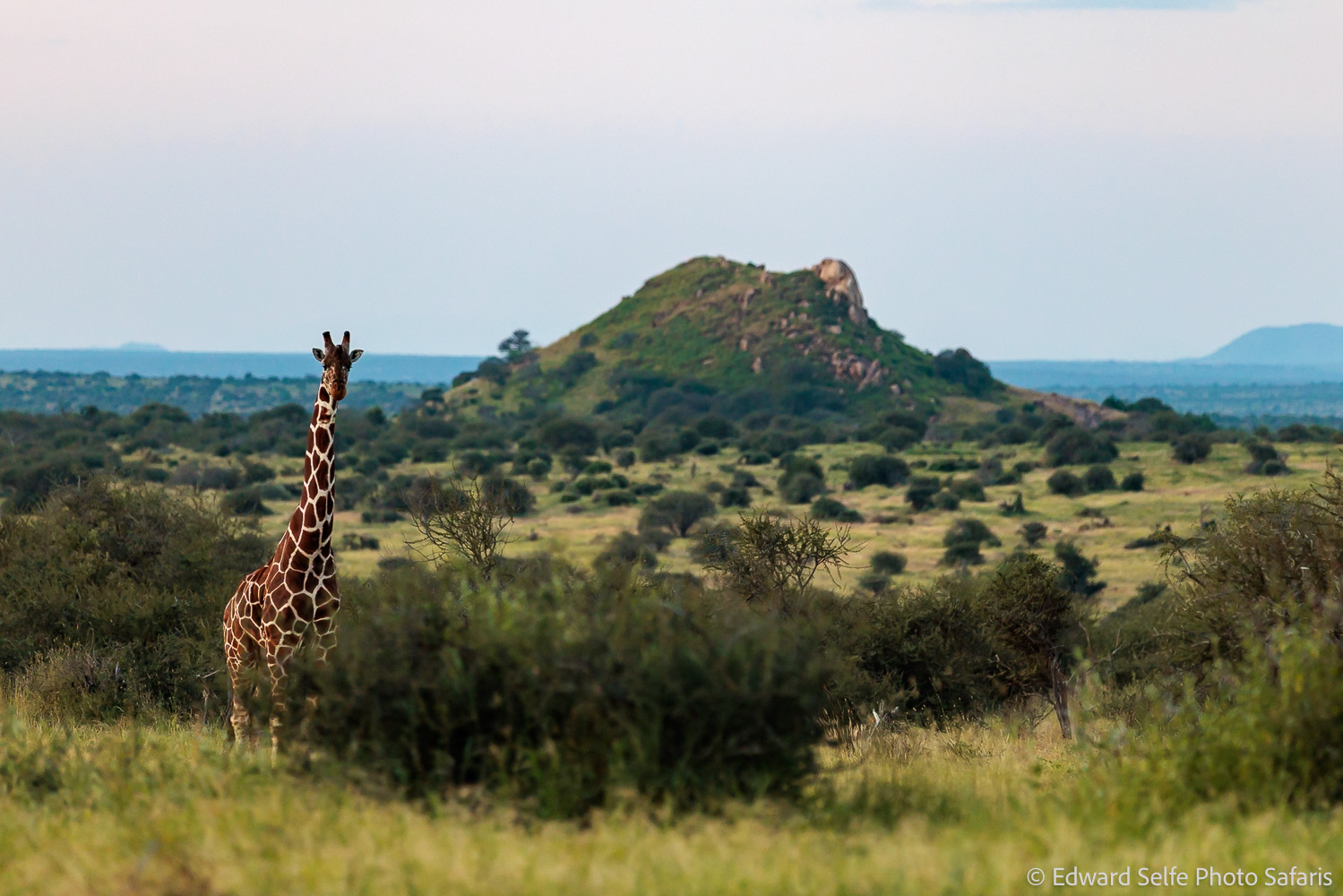
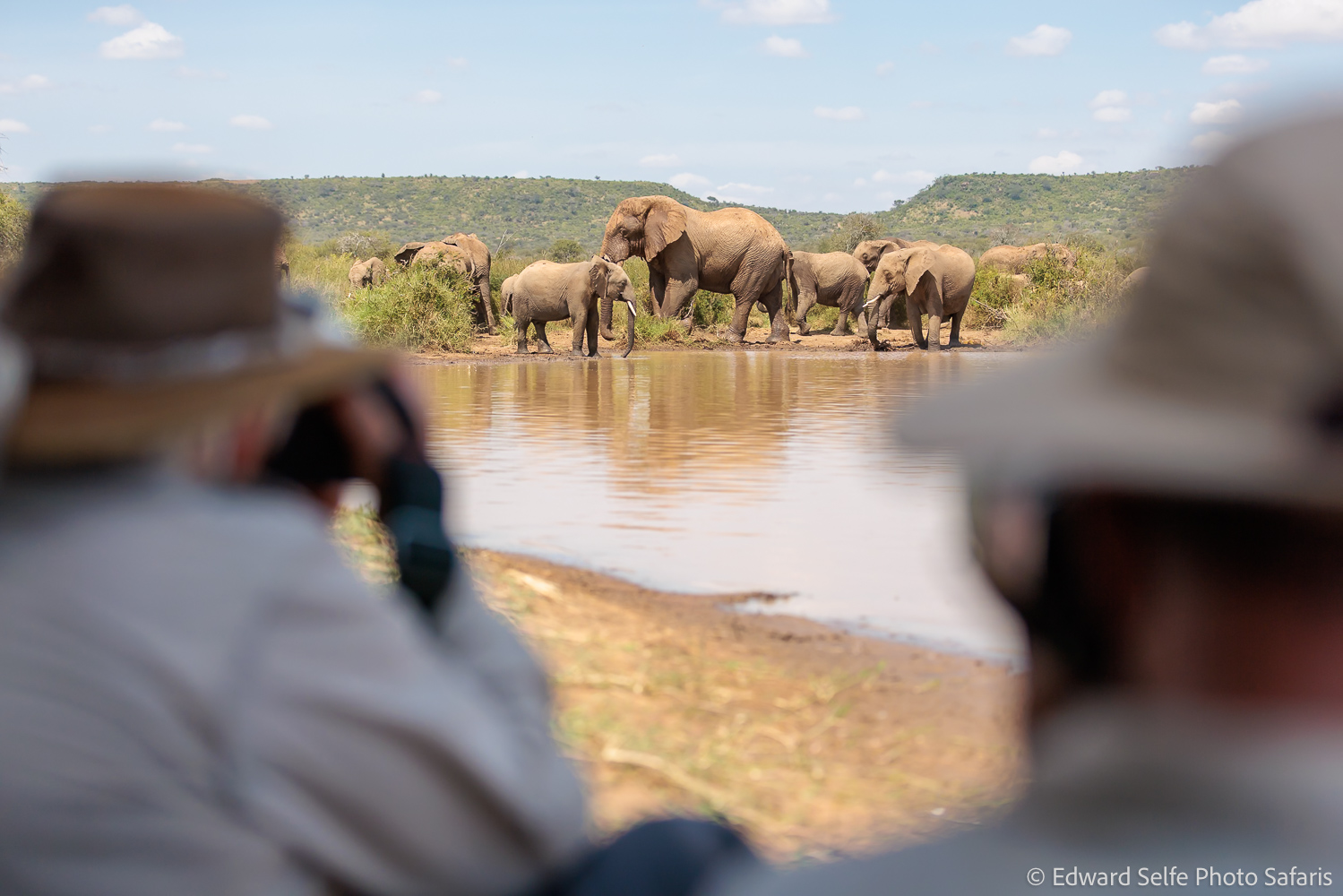
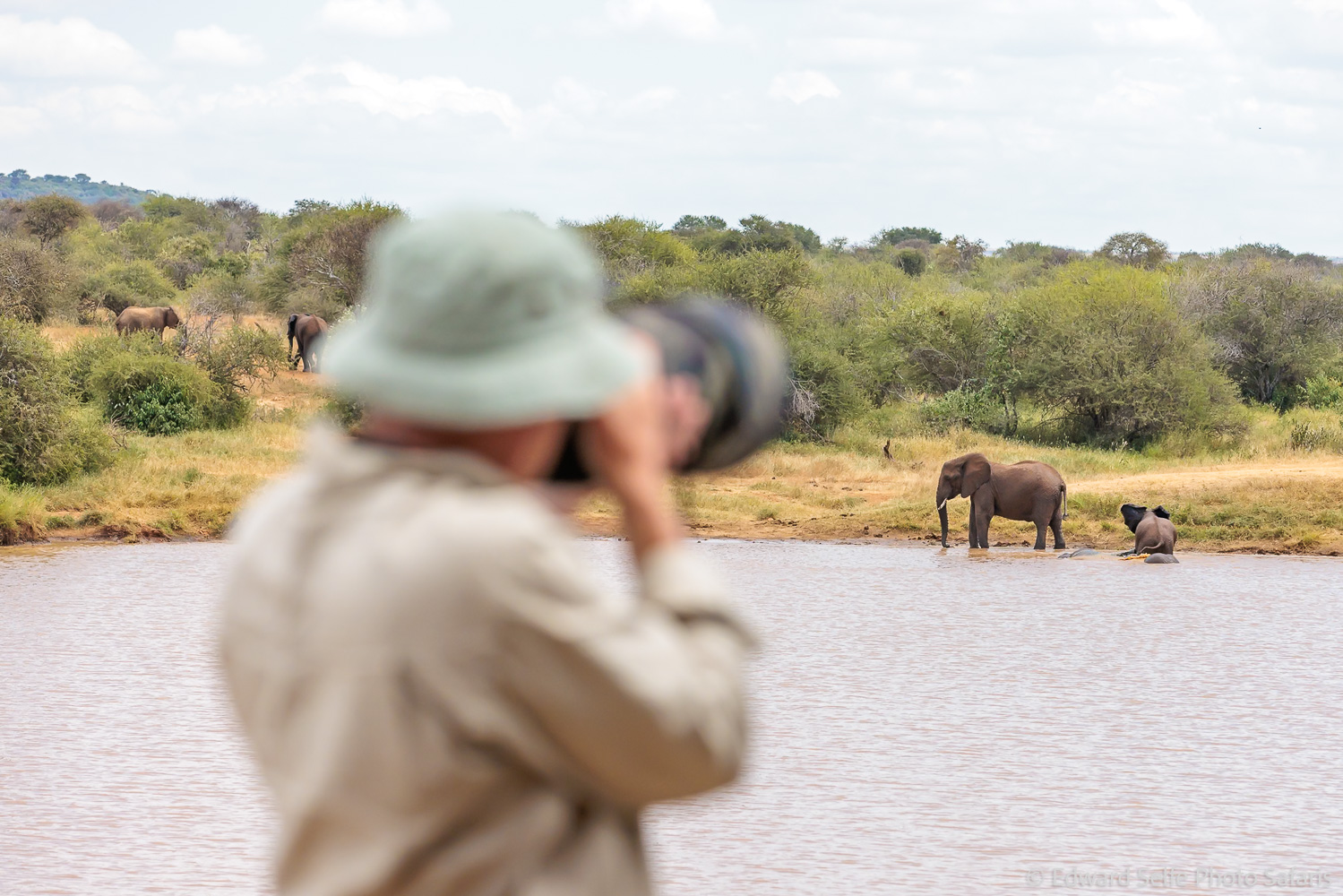
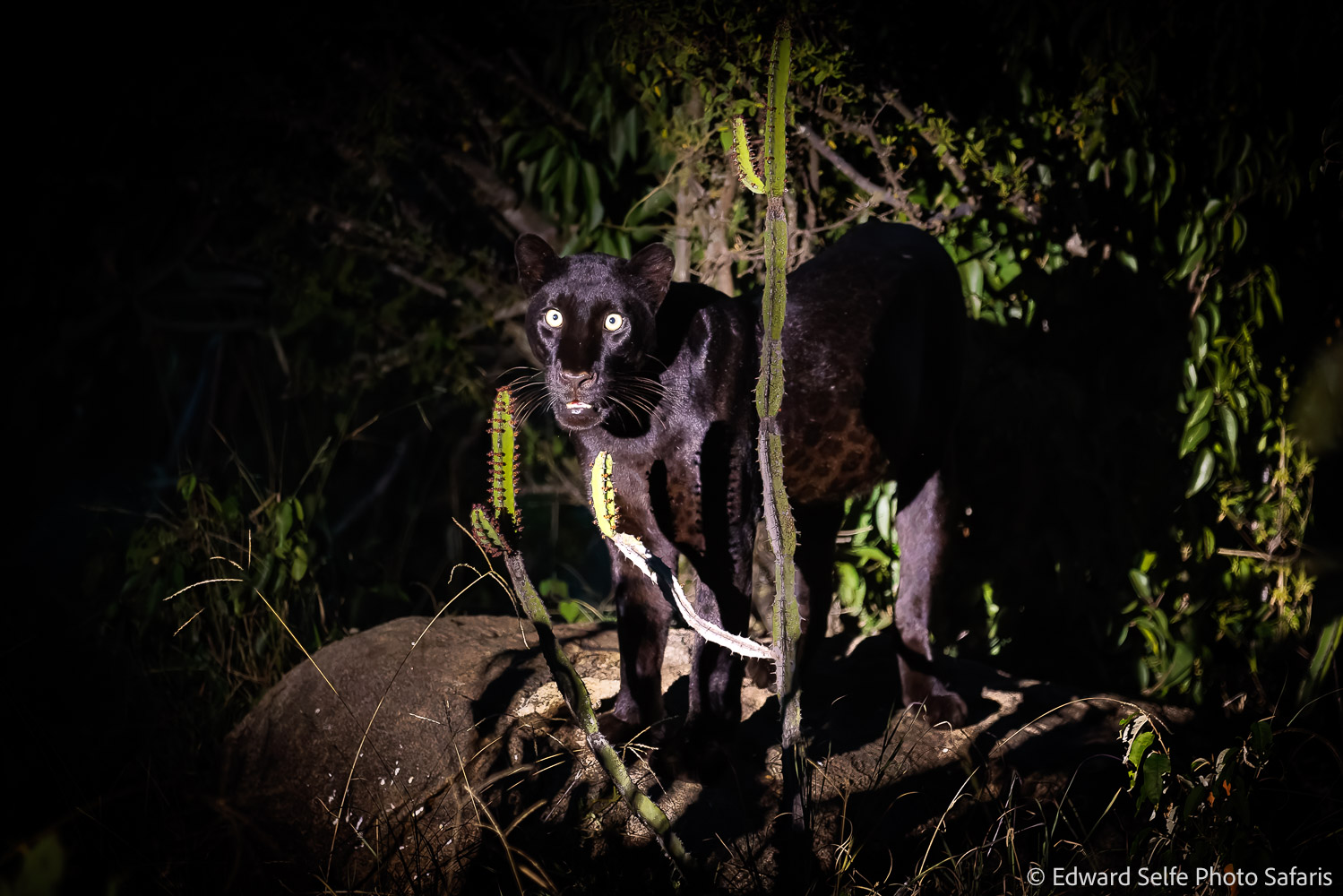
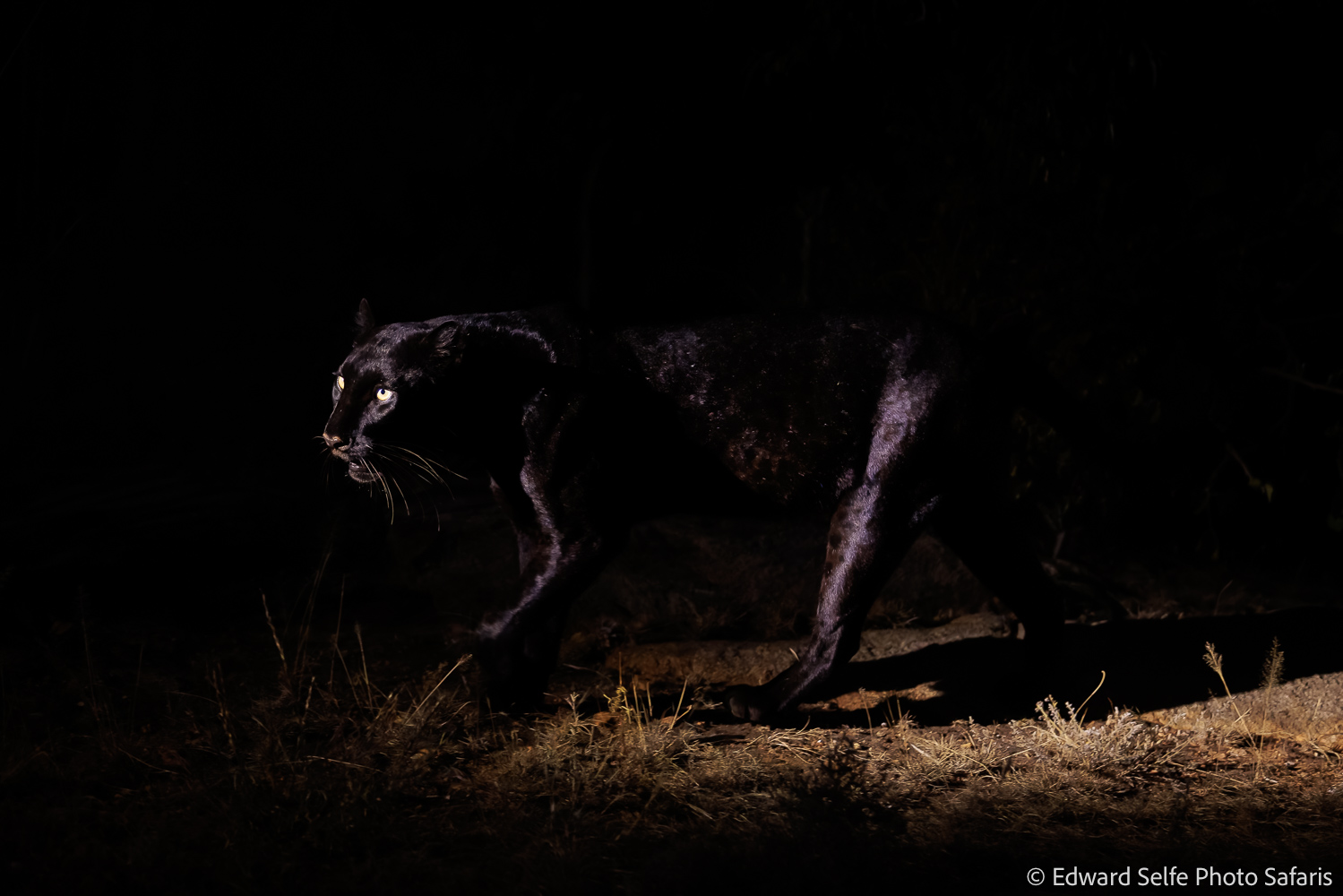
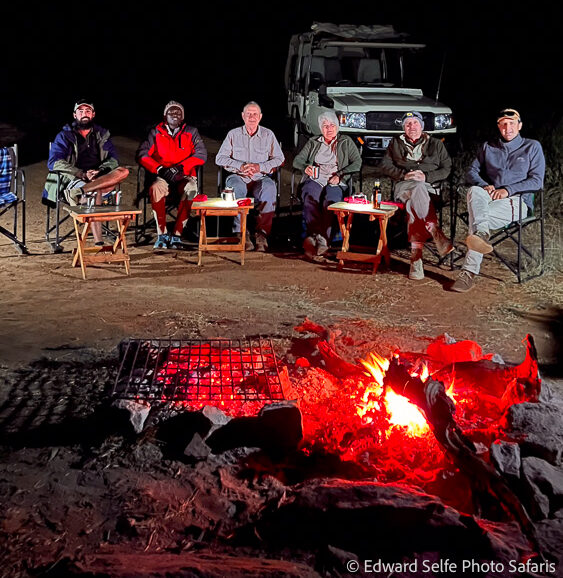
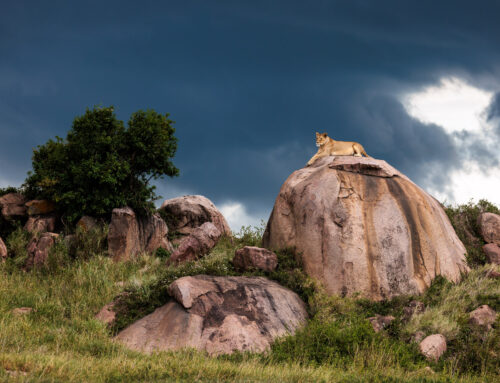
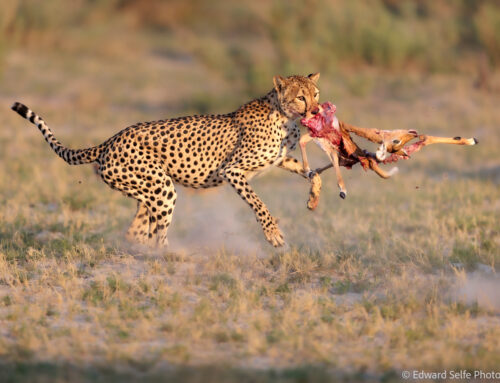

Leave A Comment